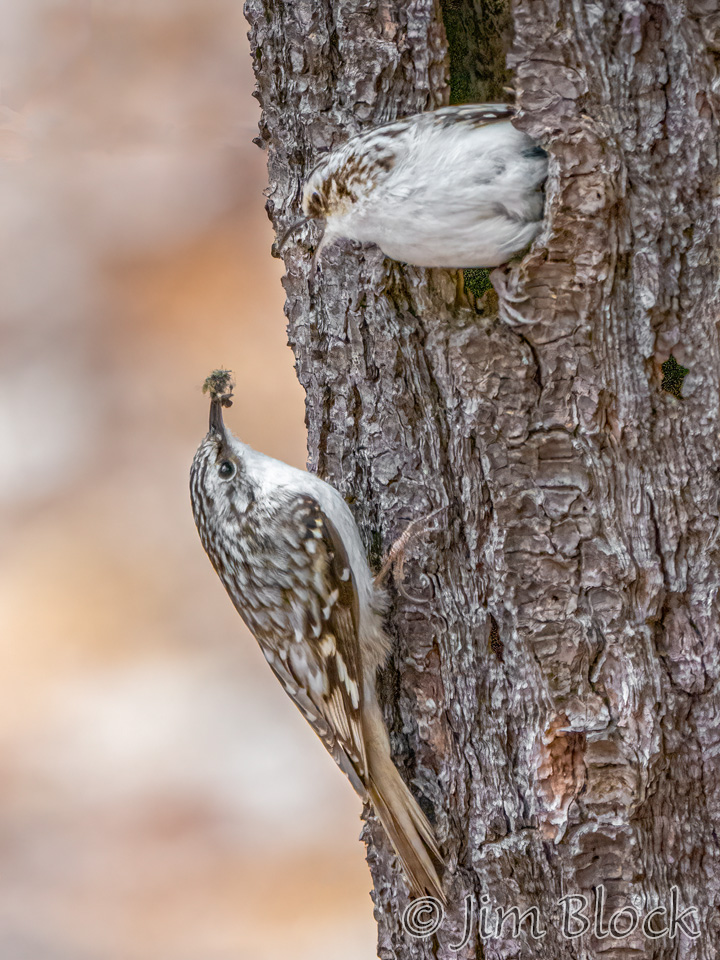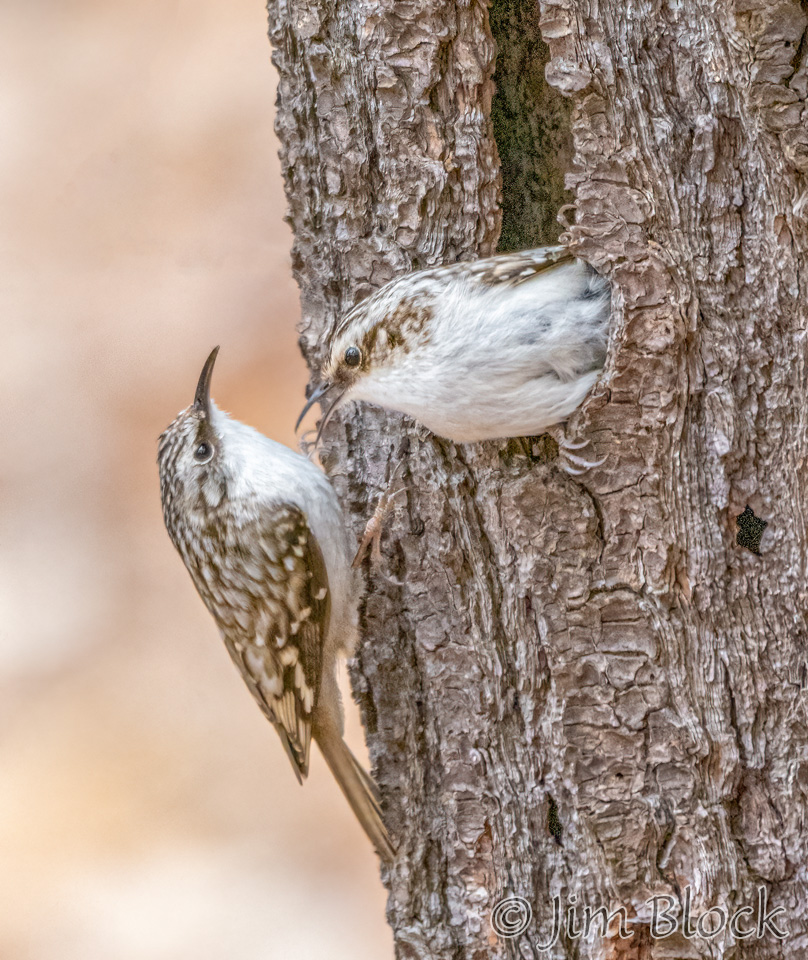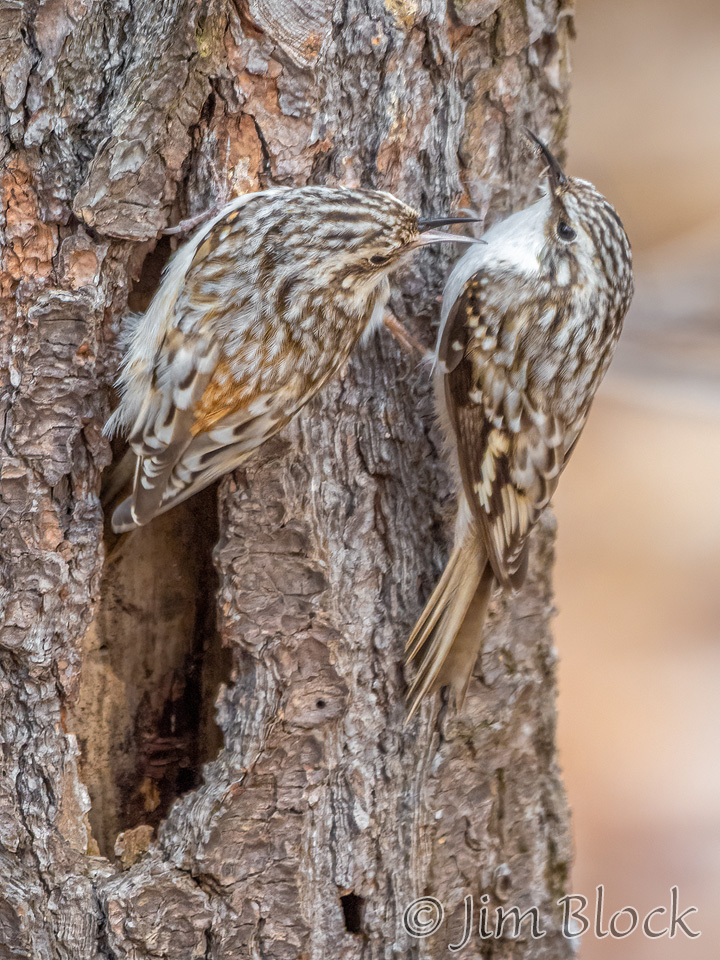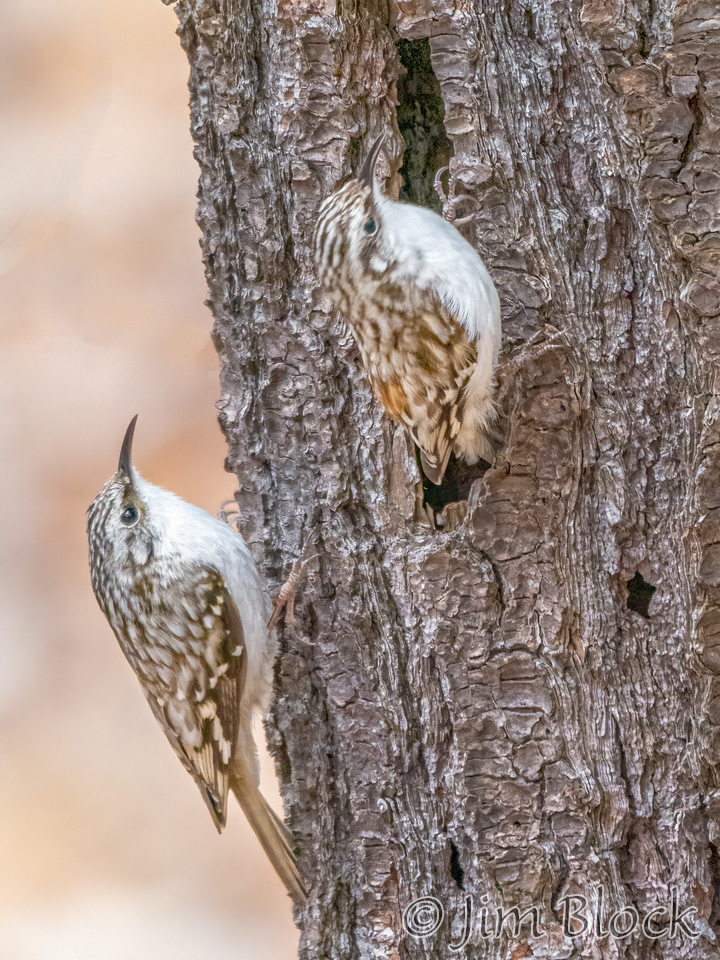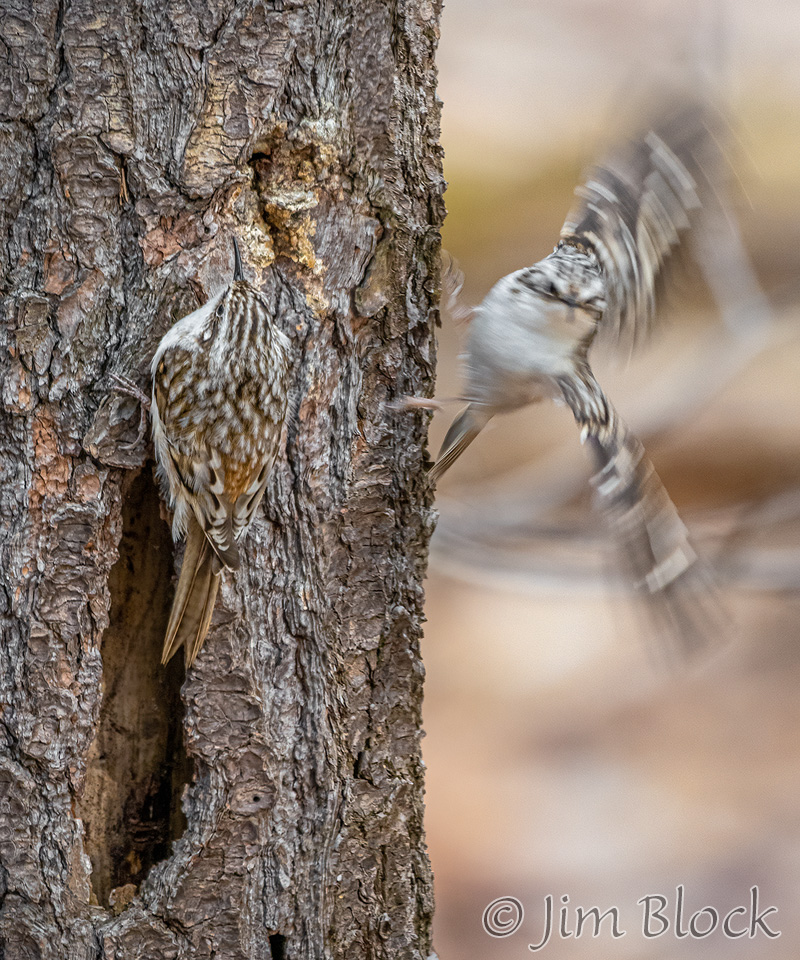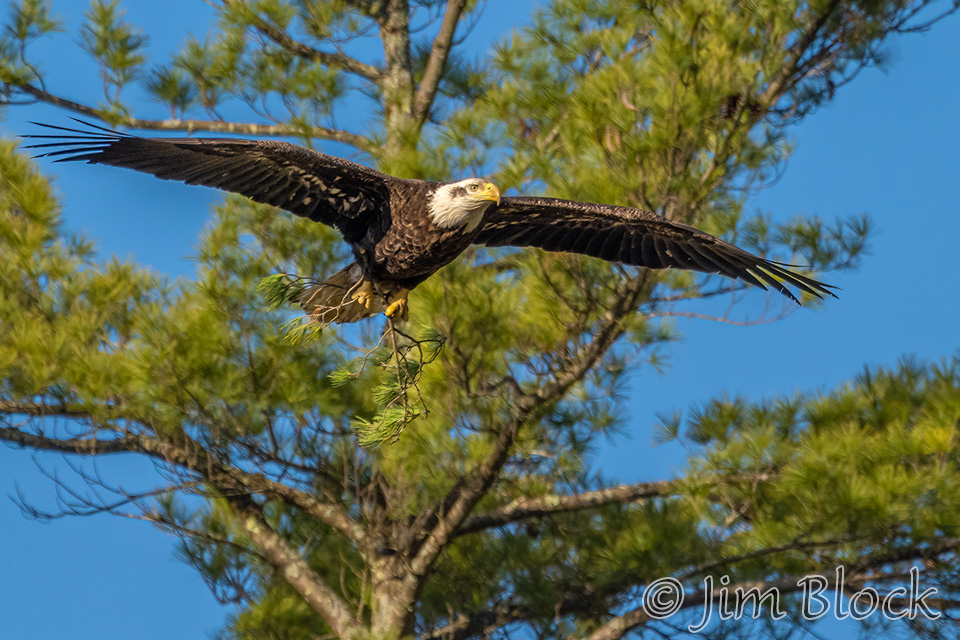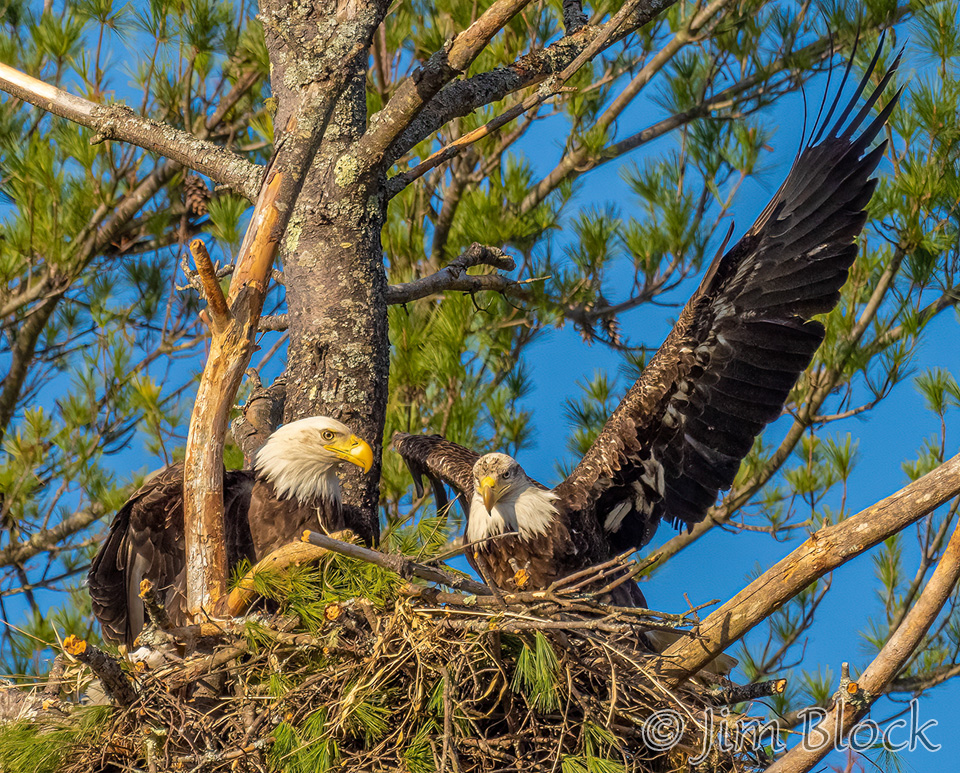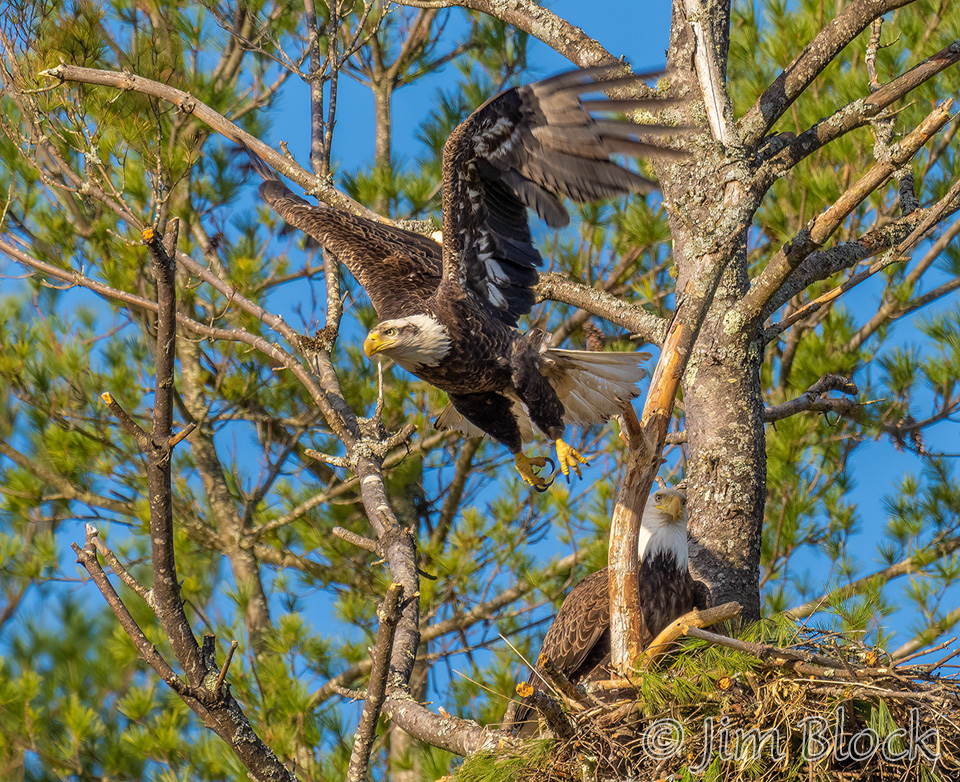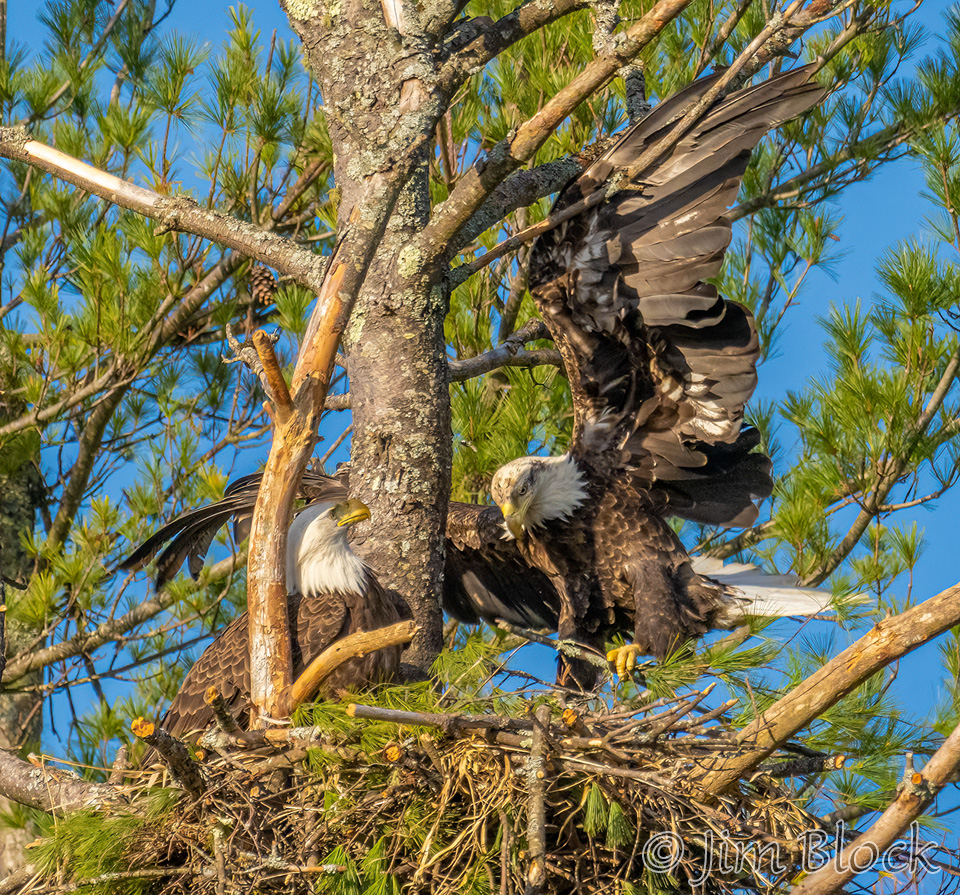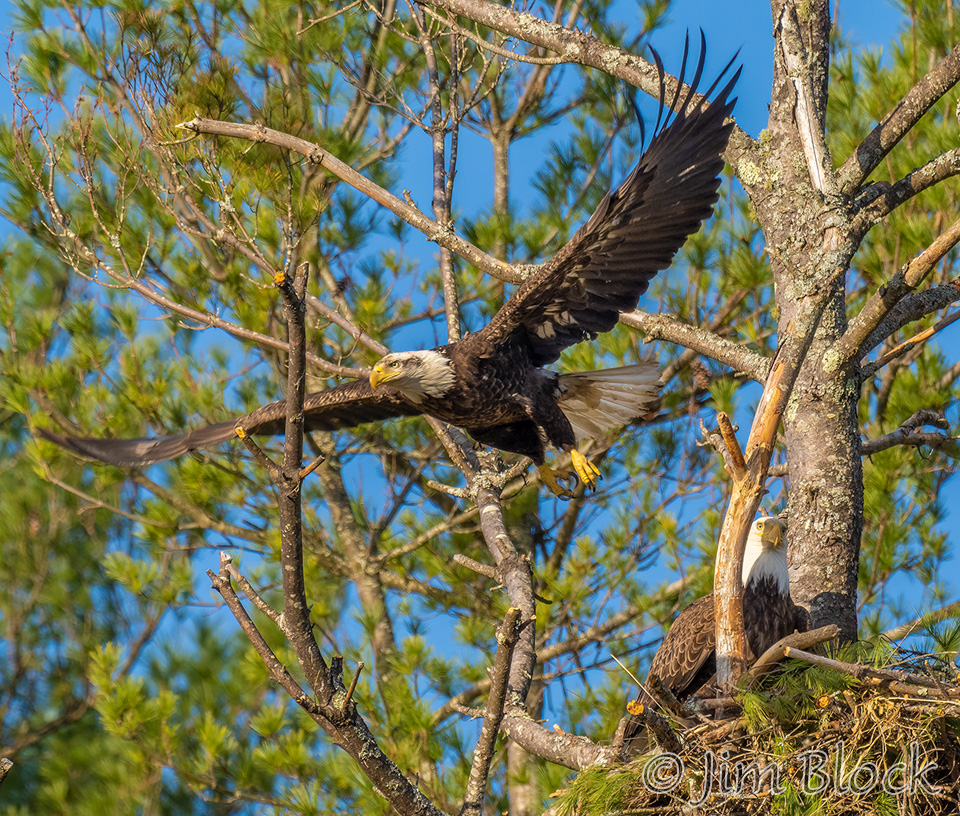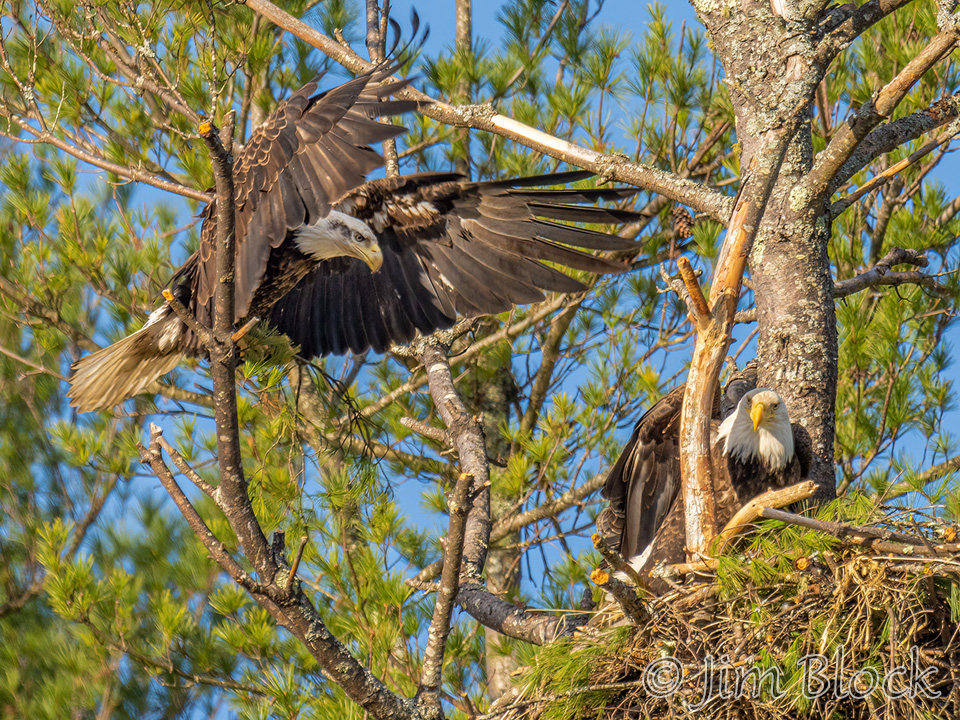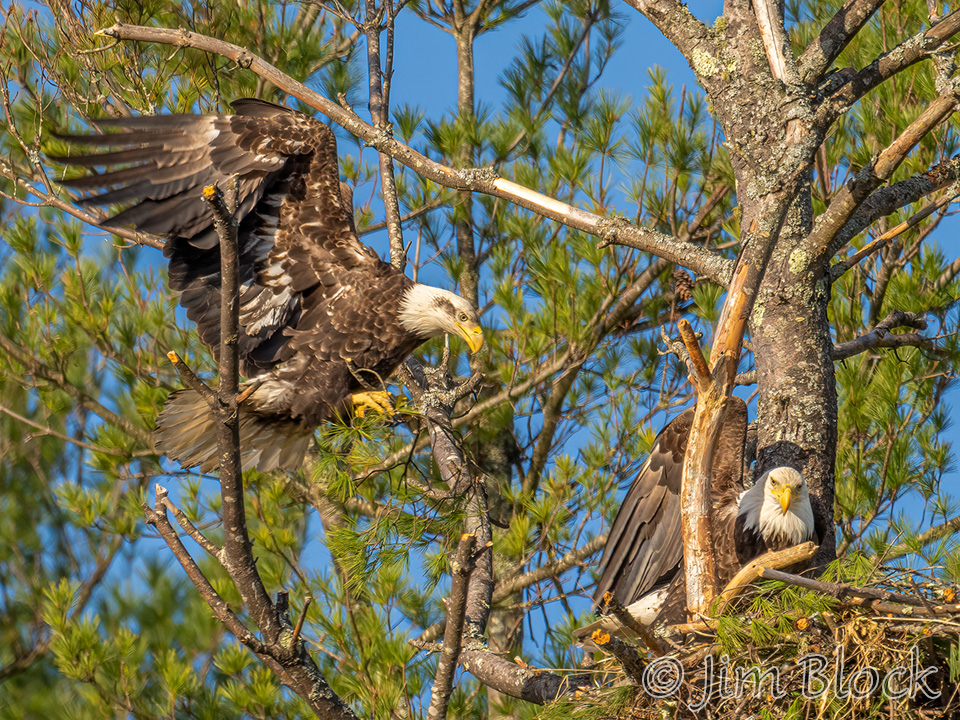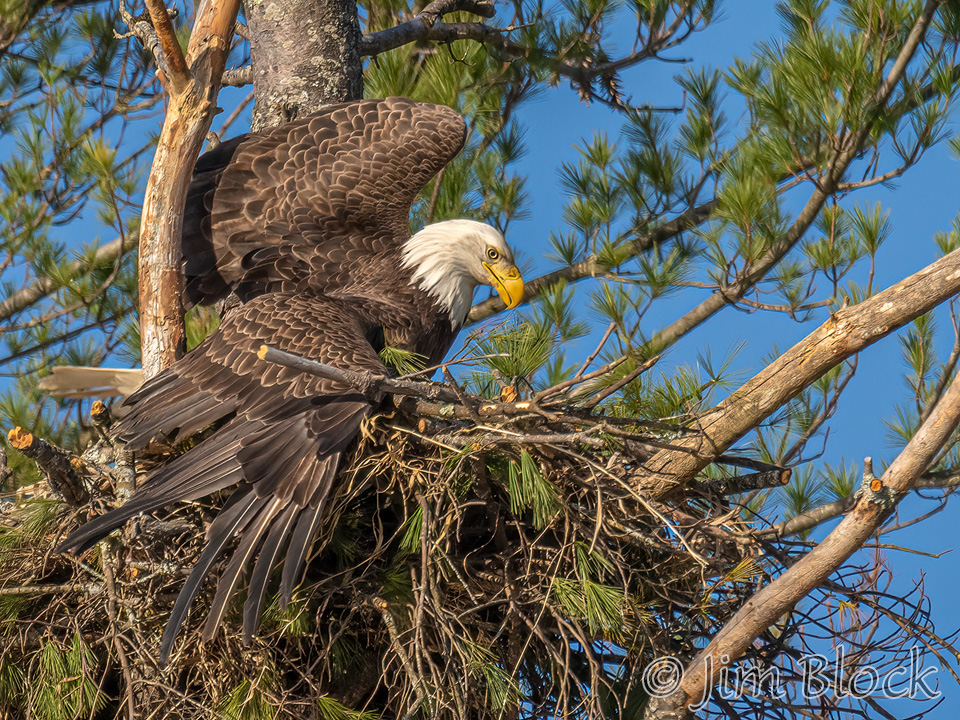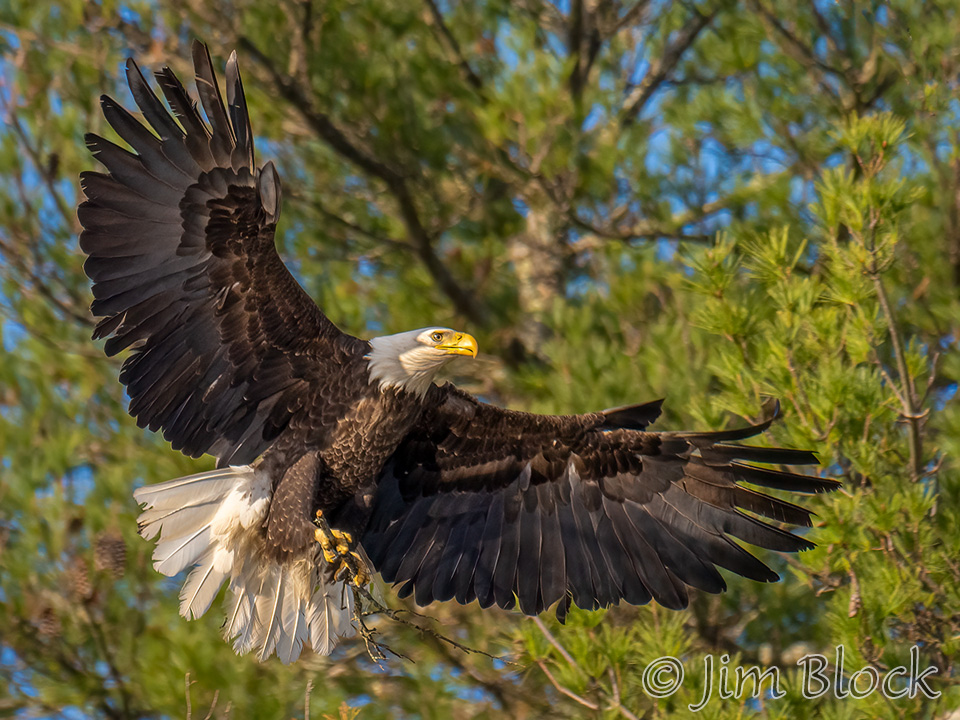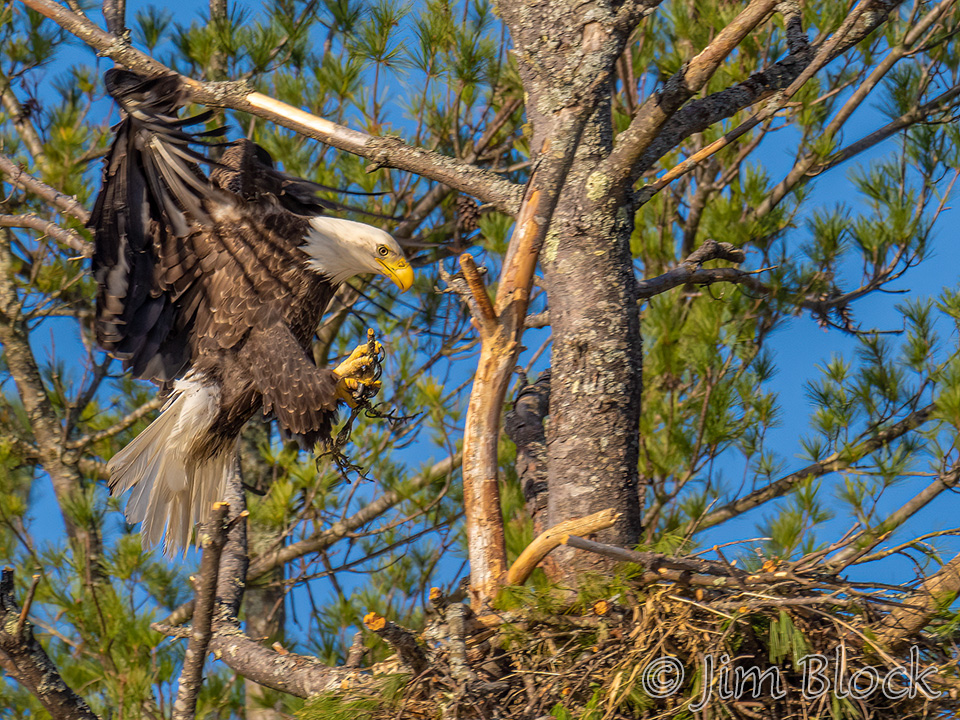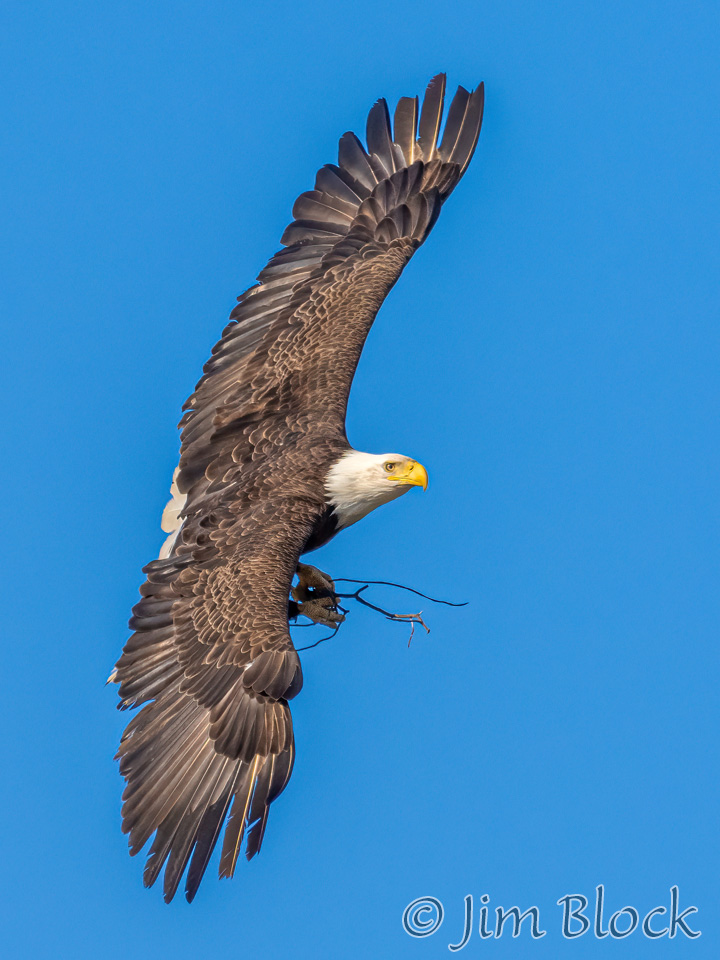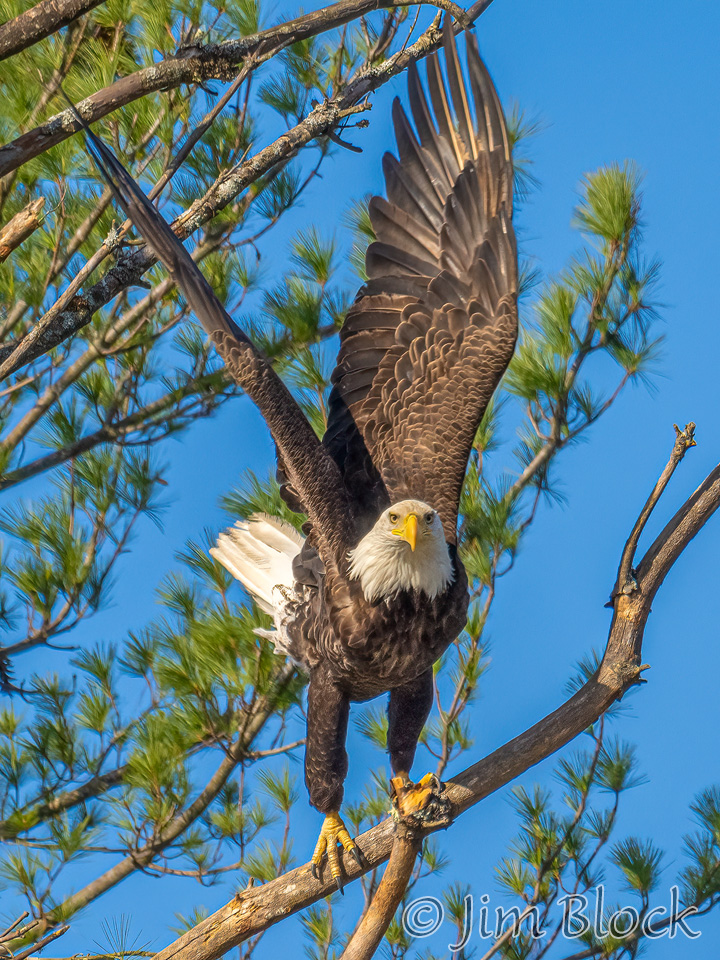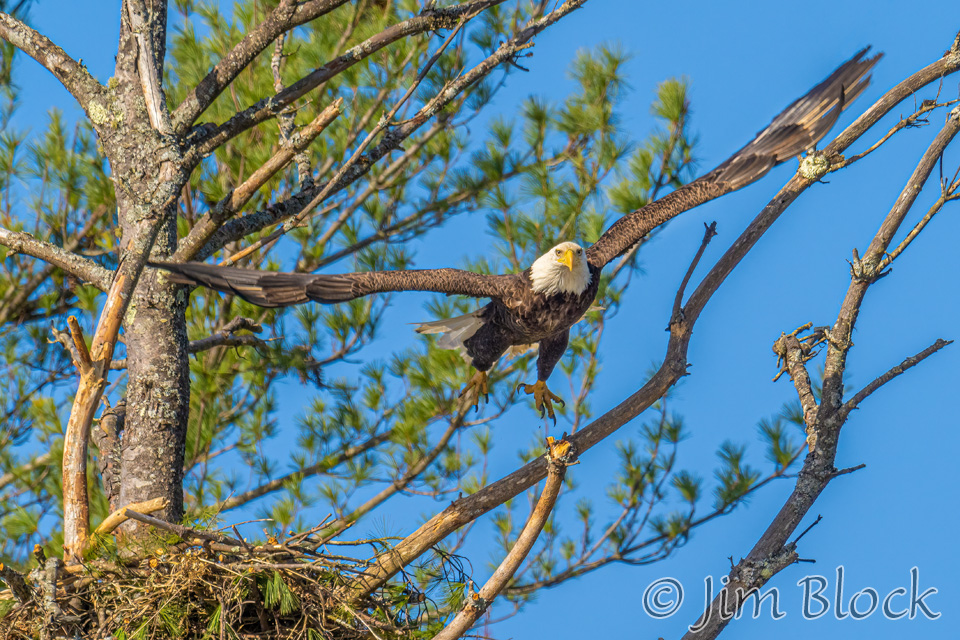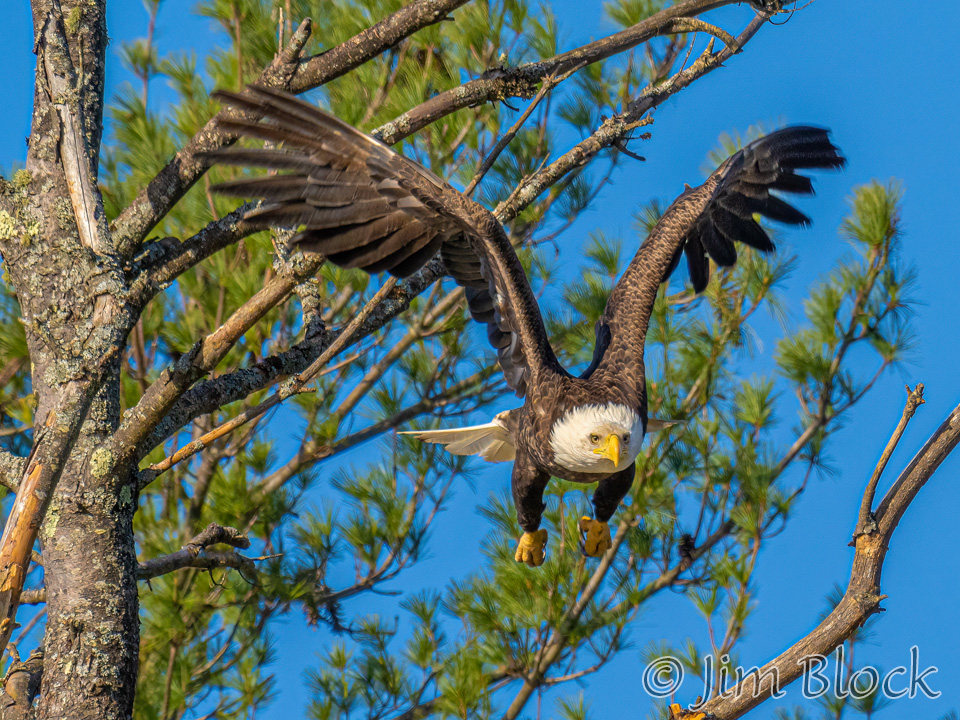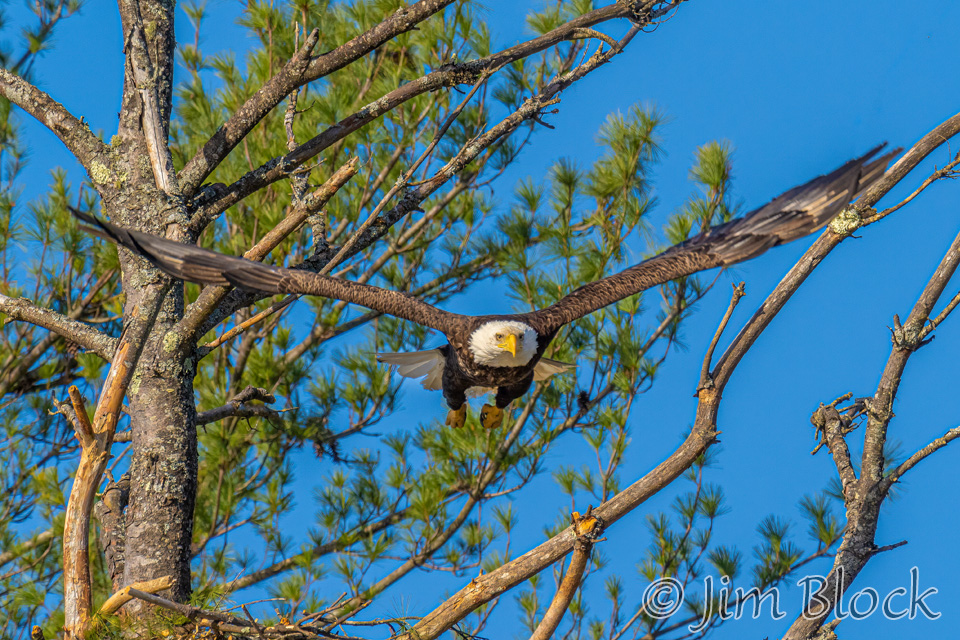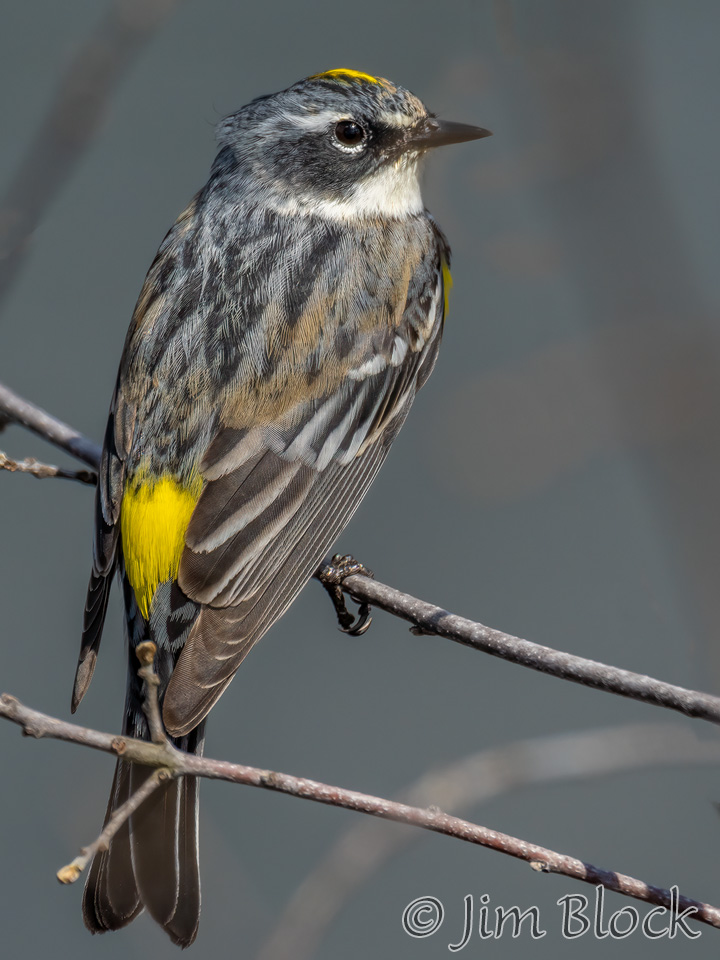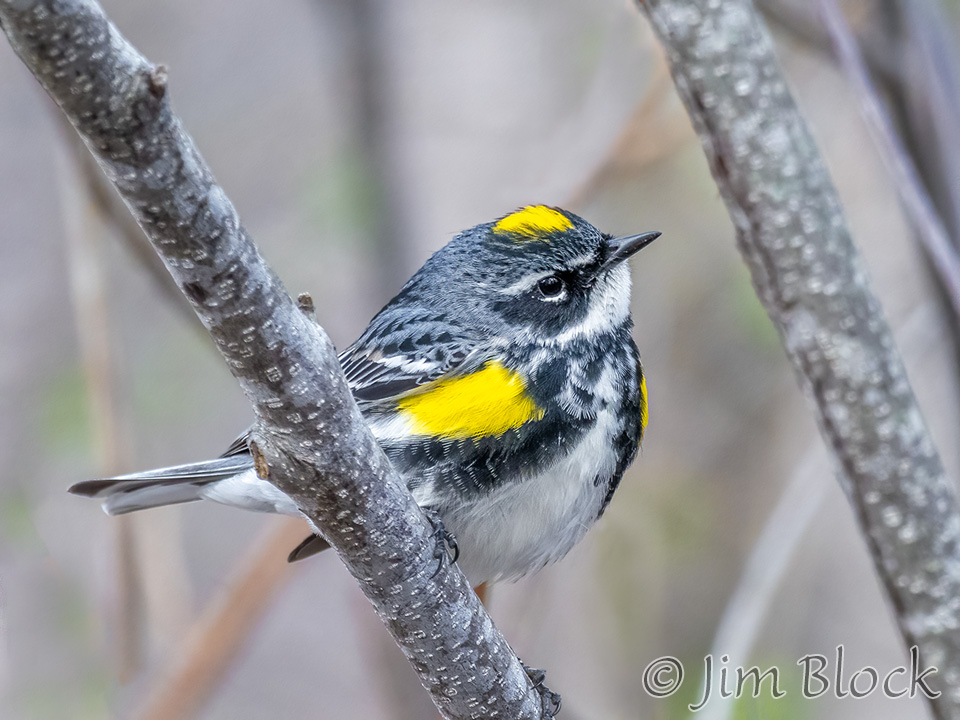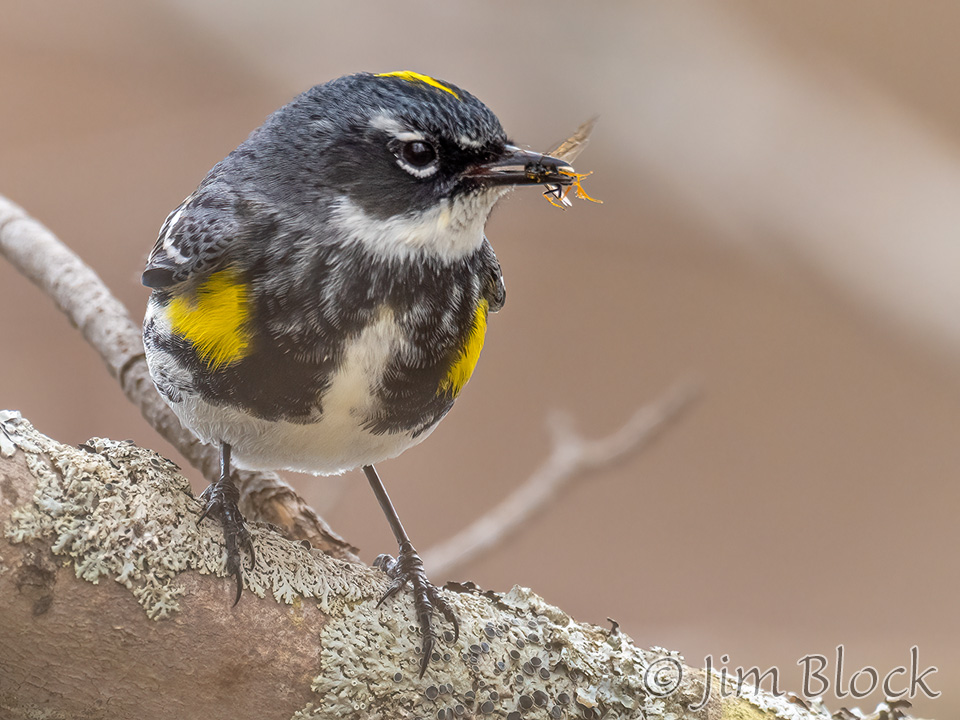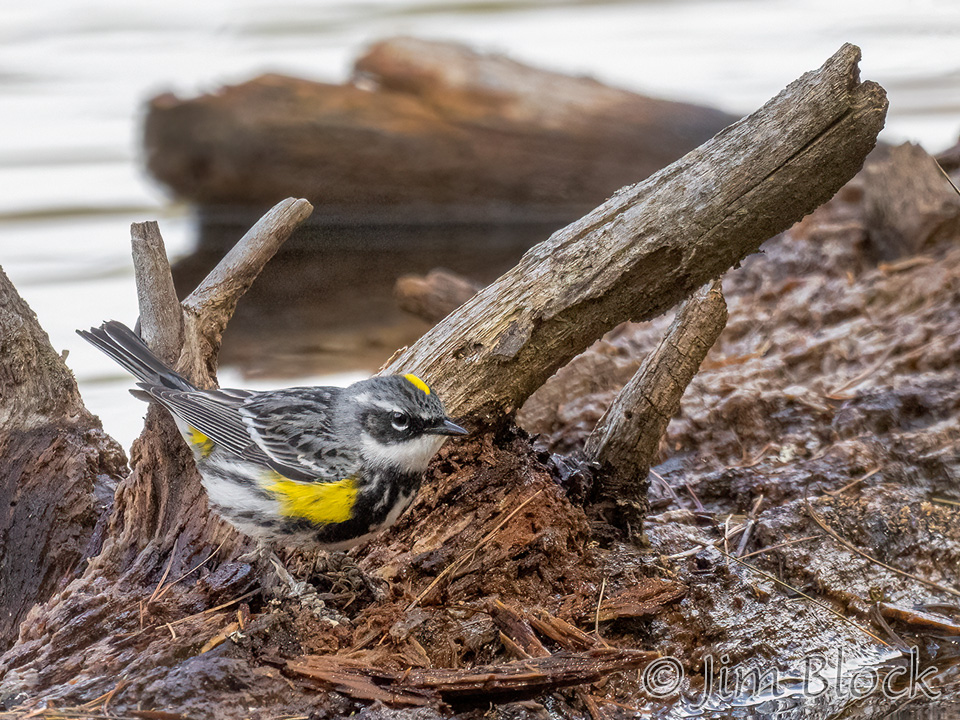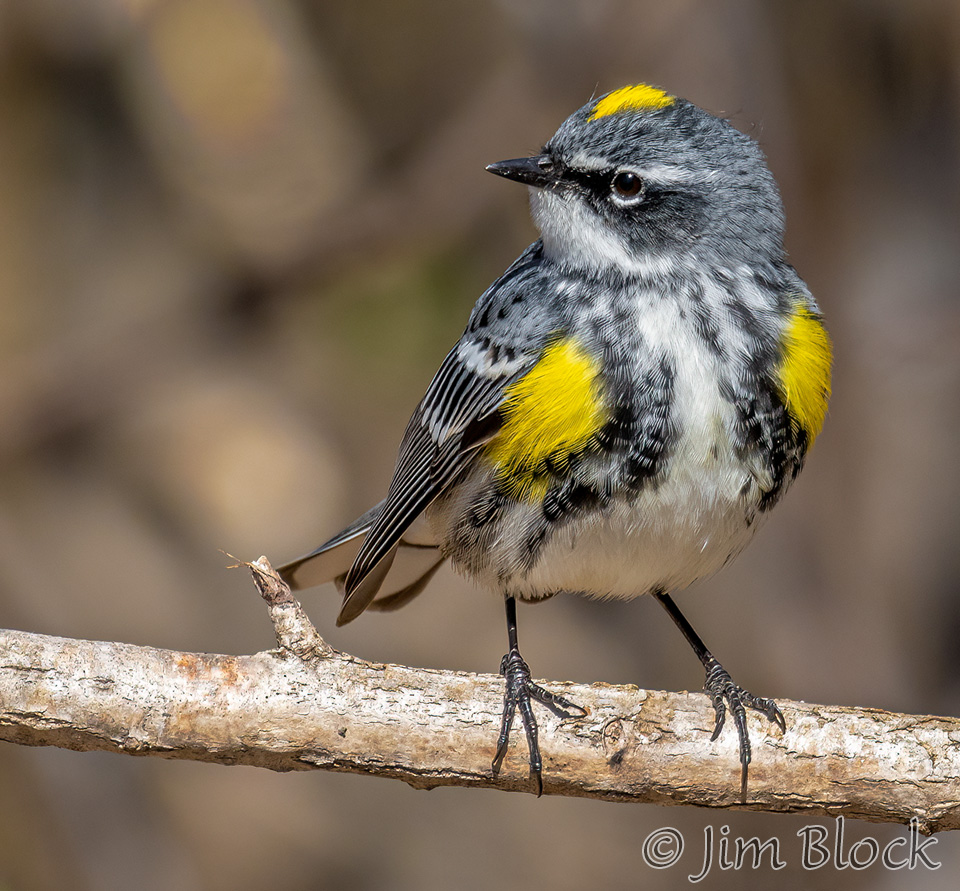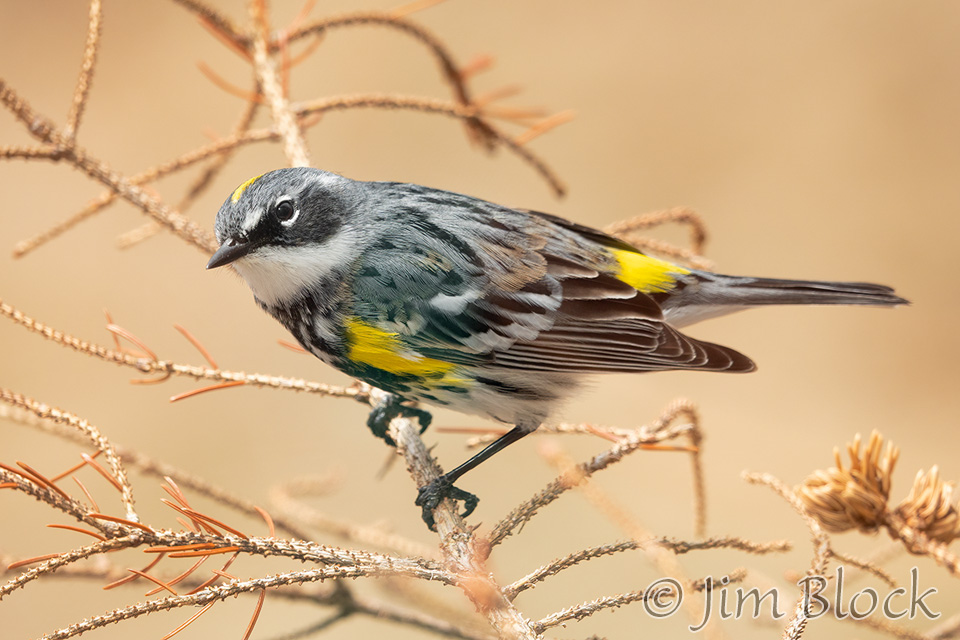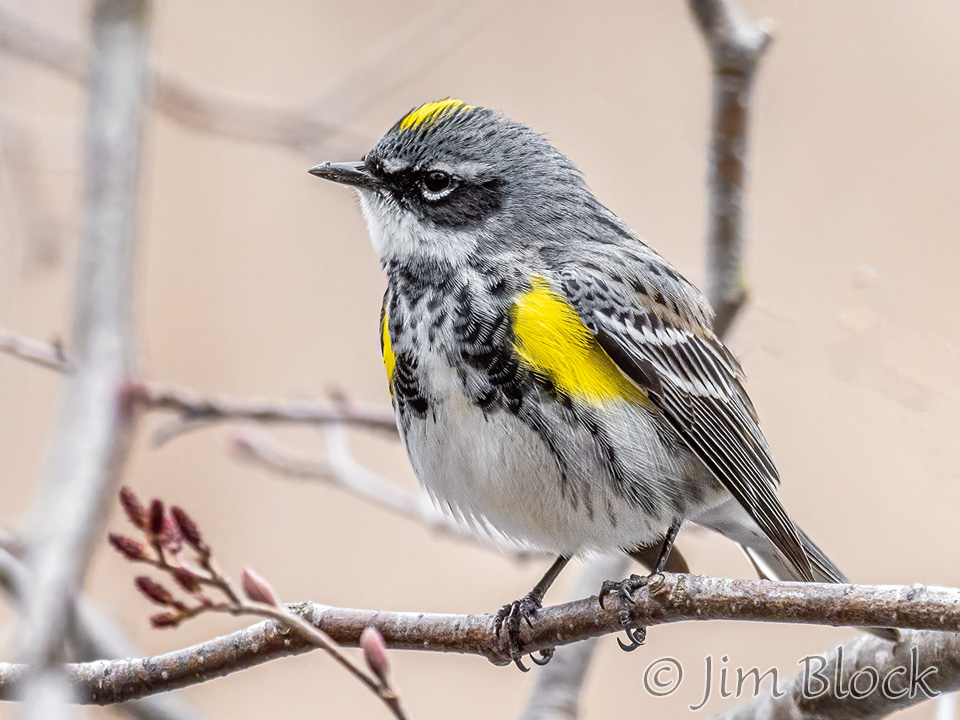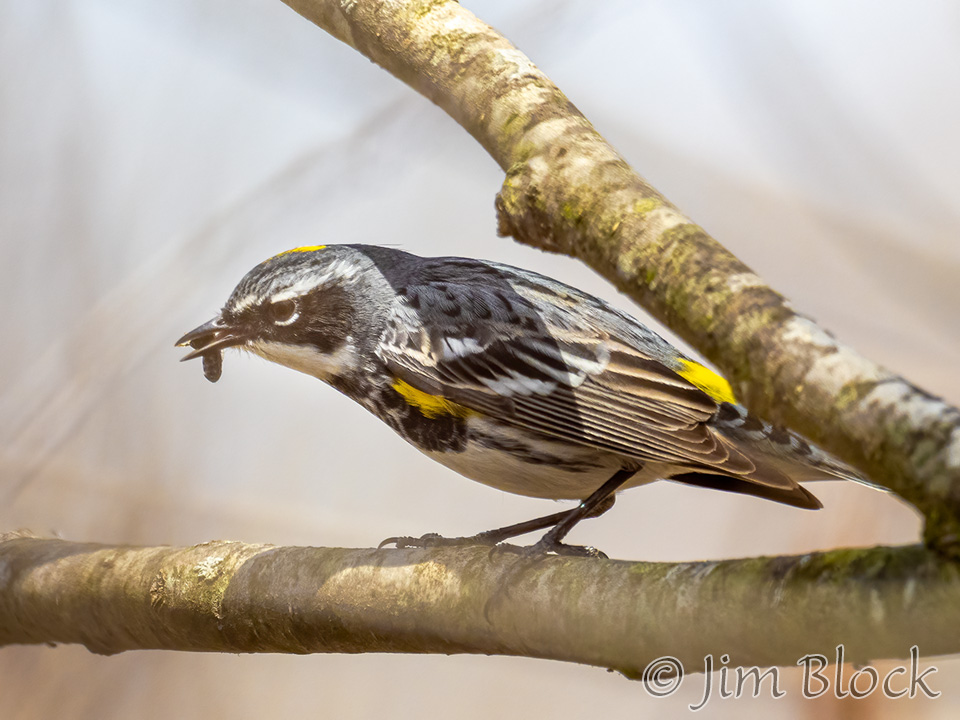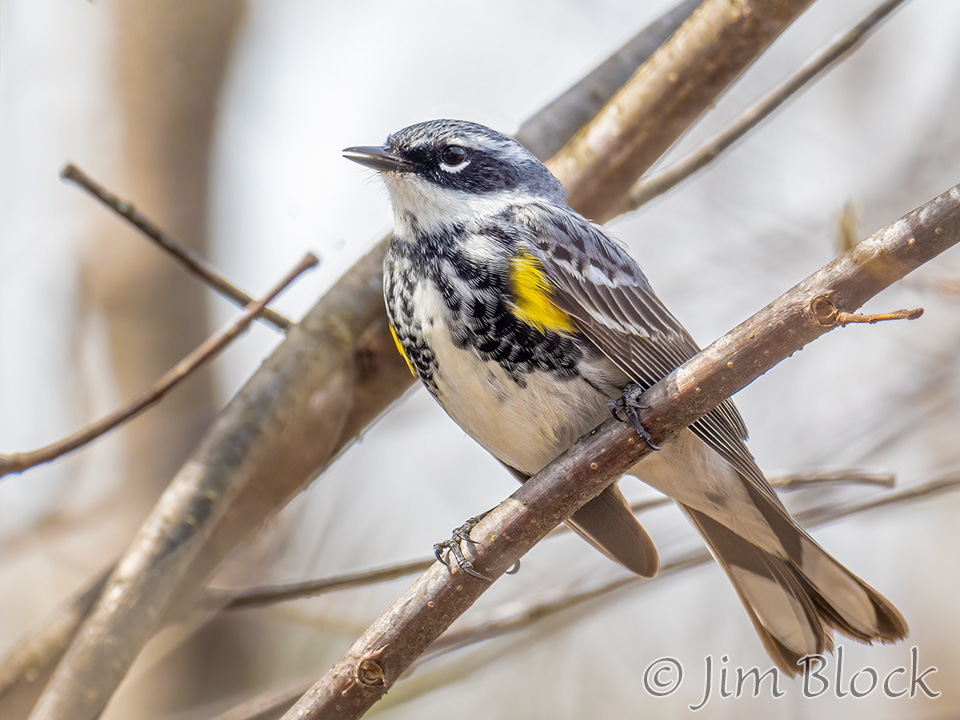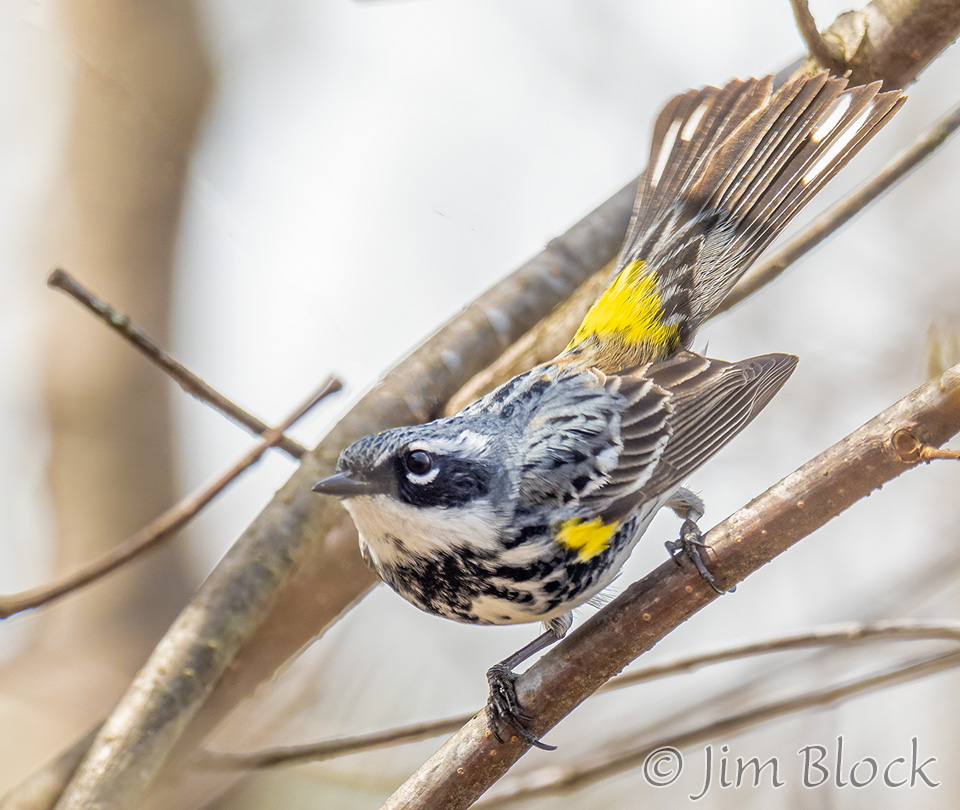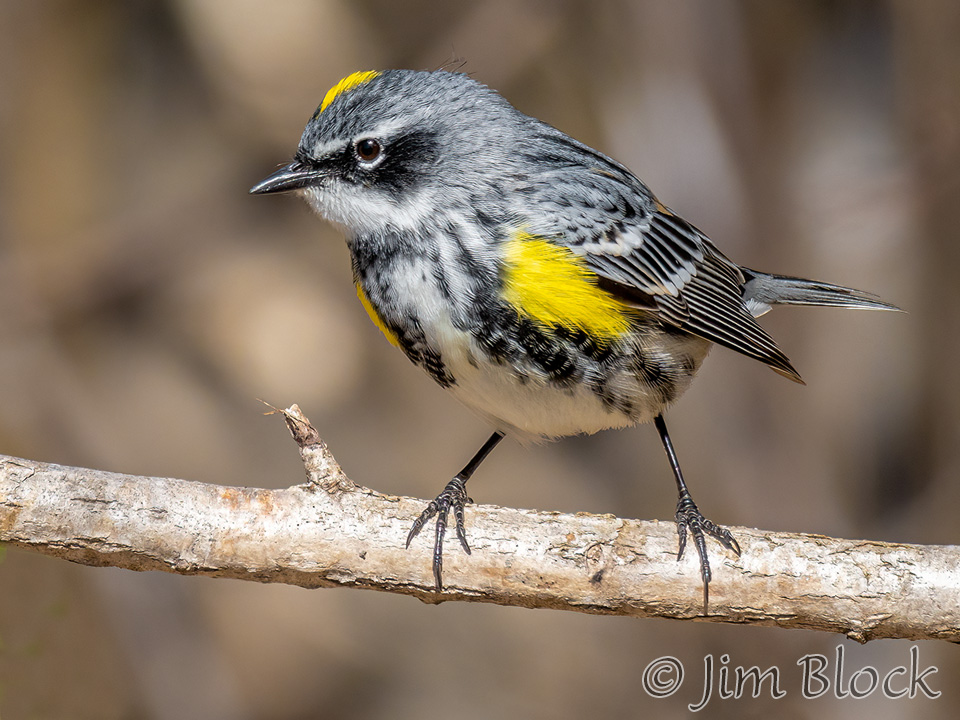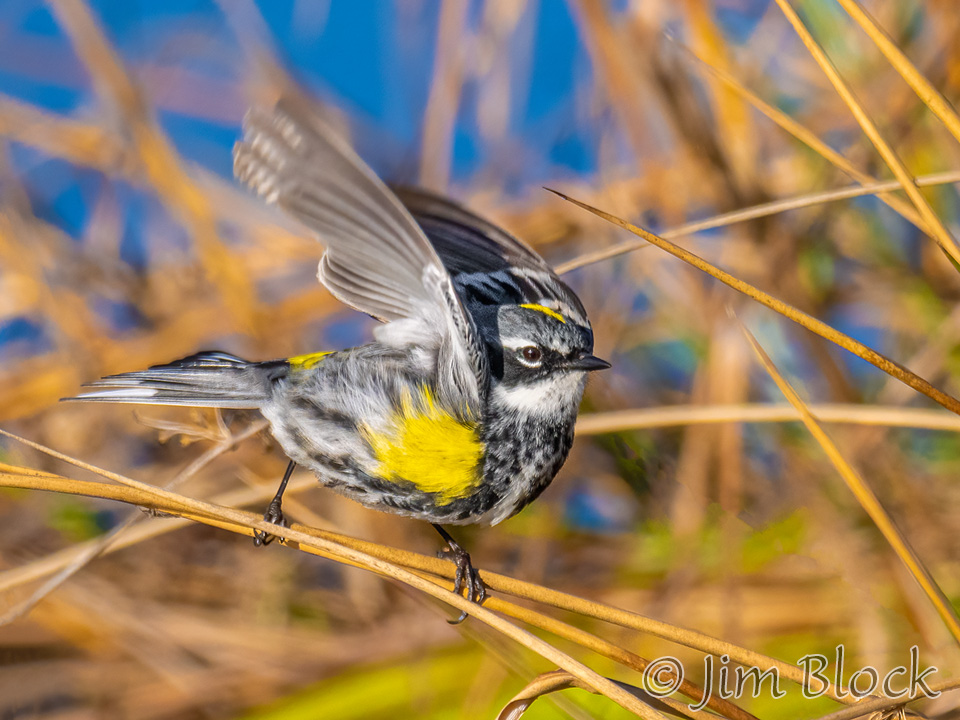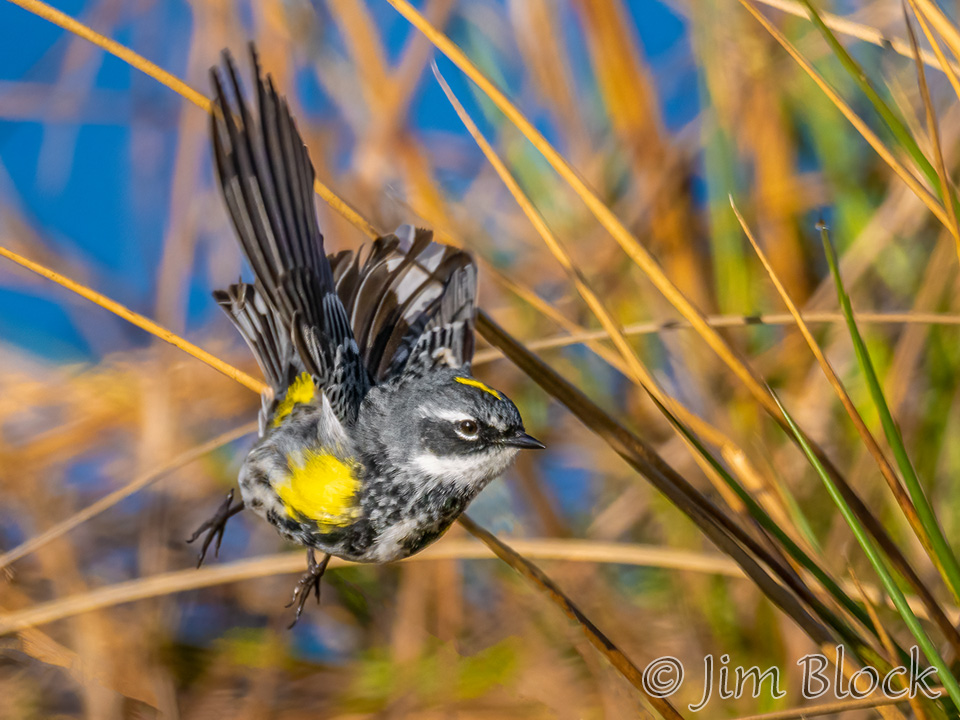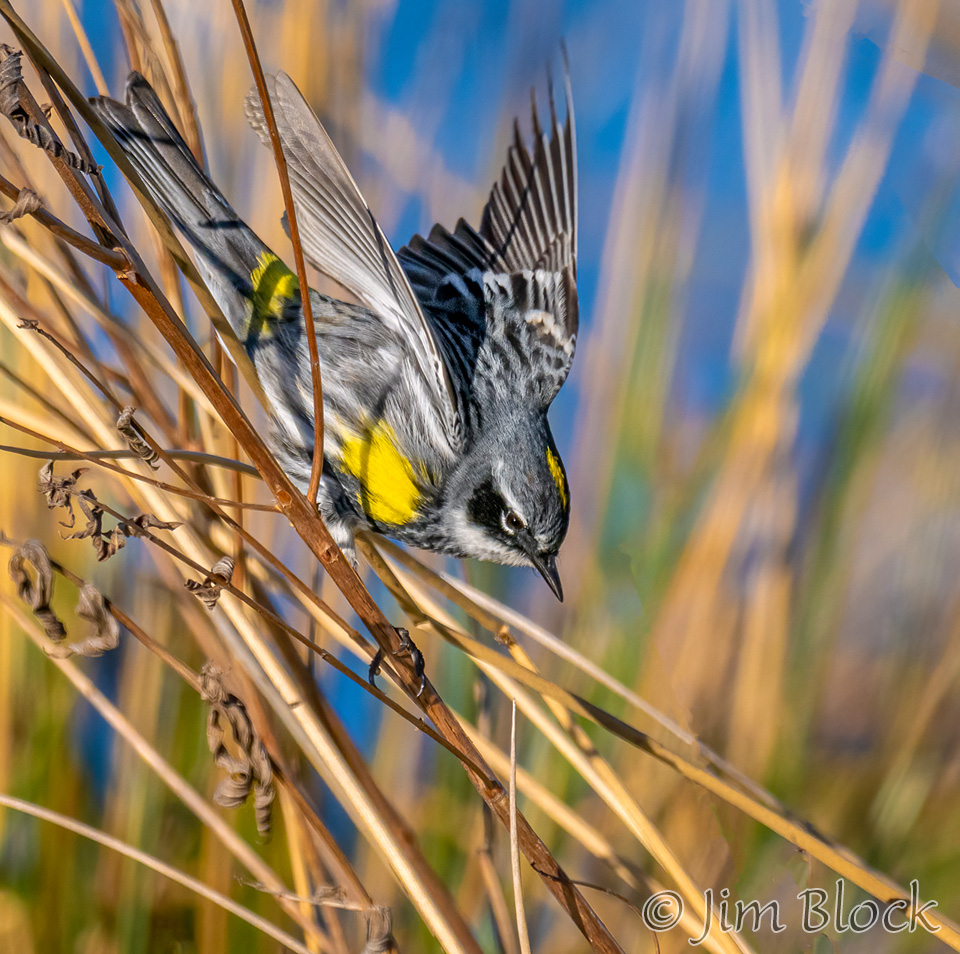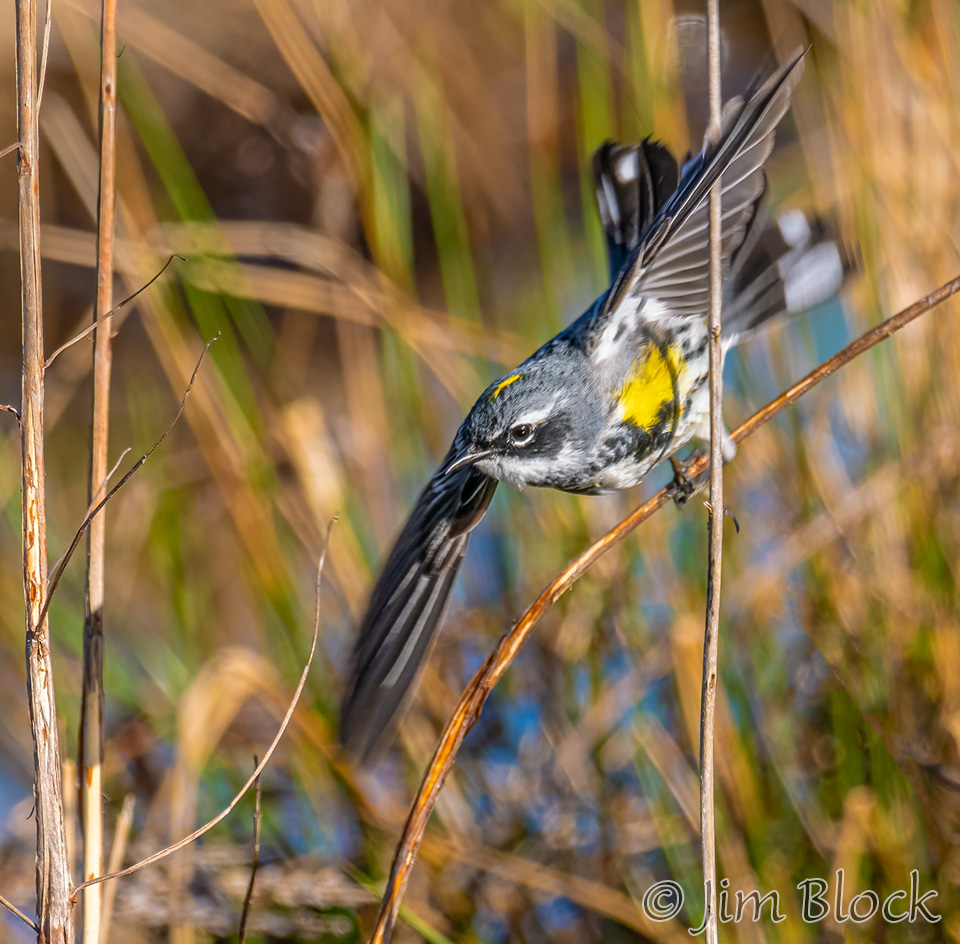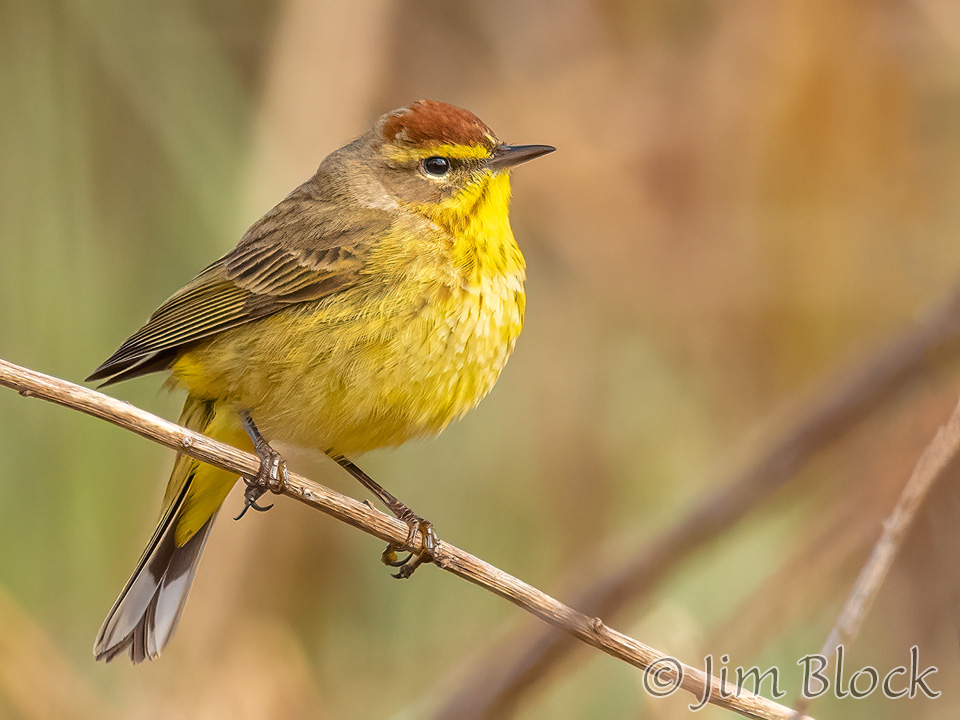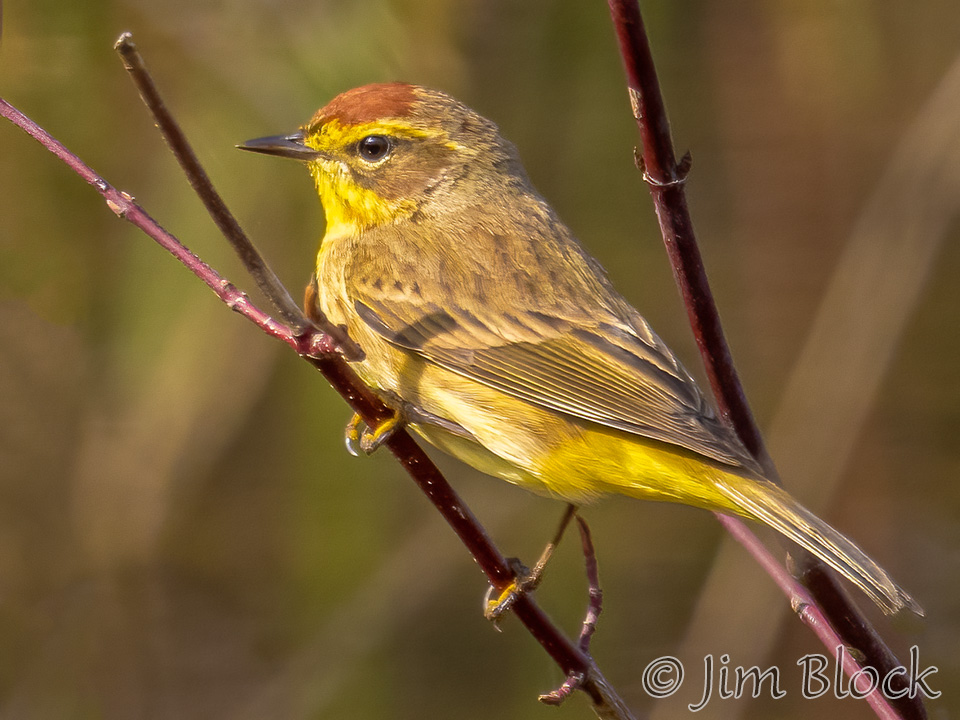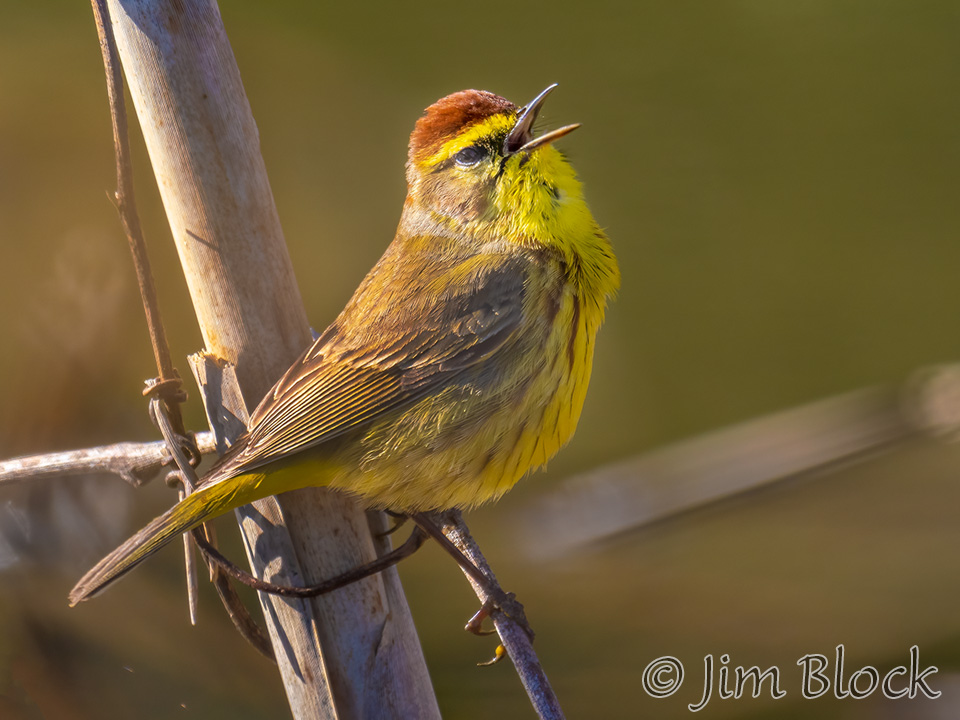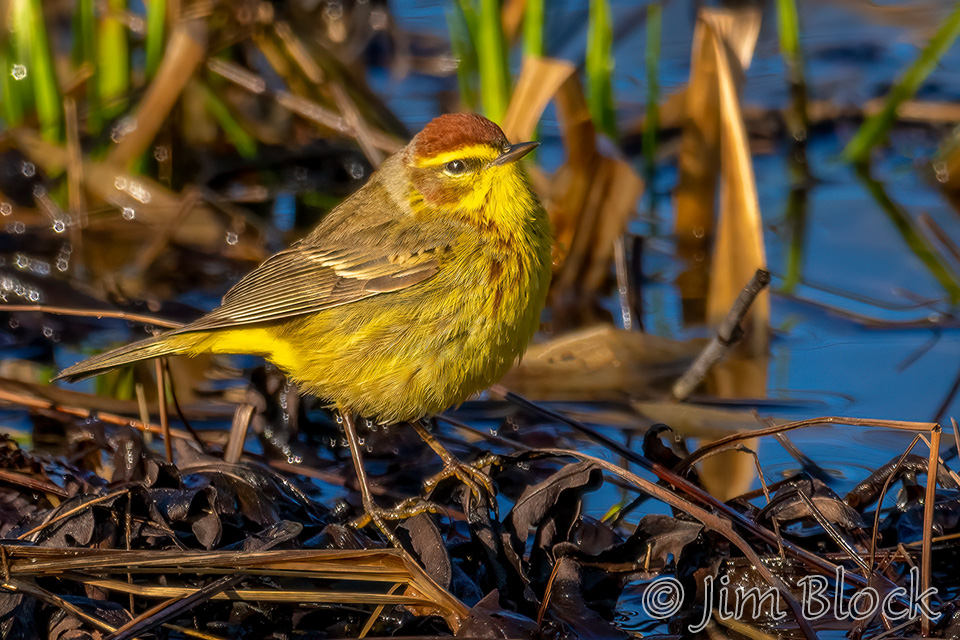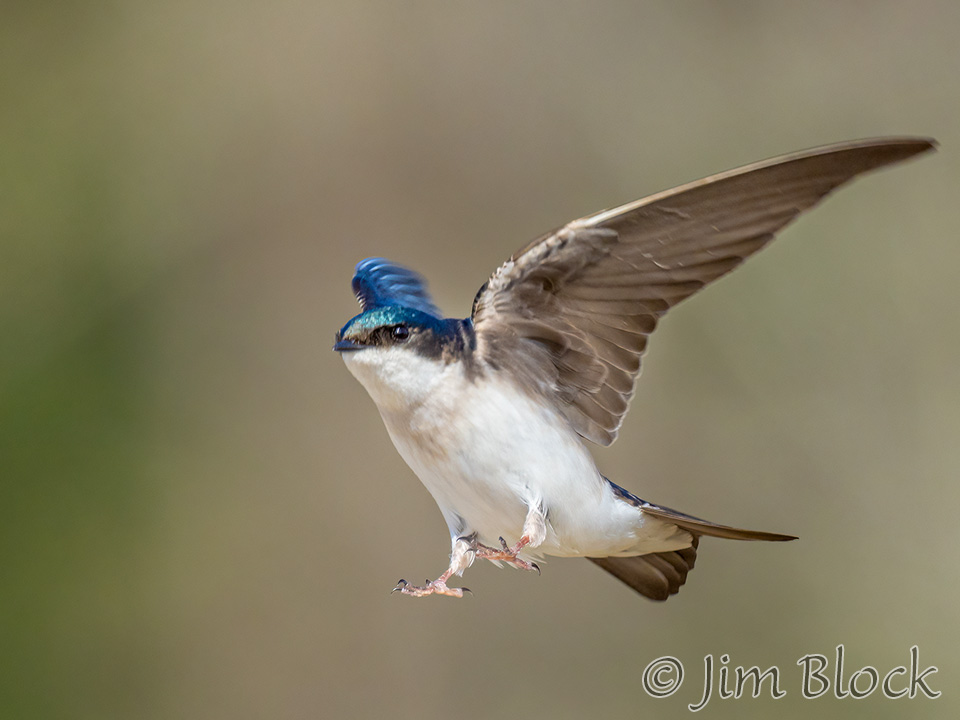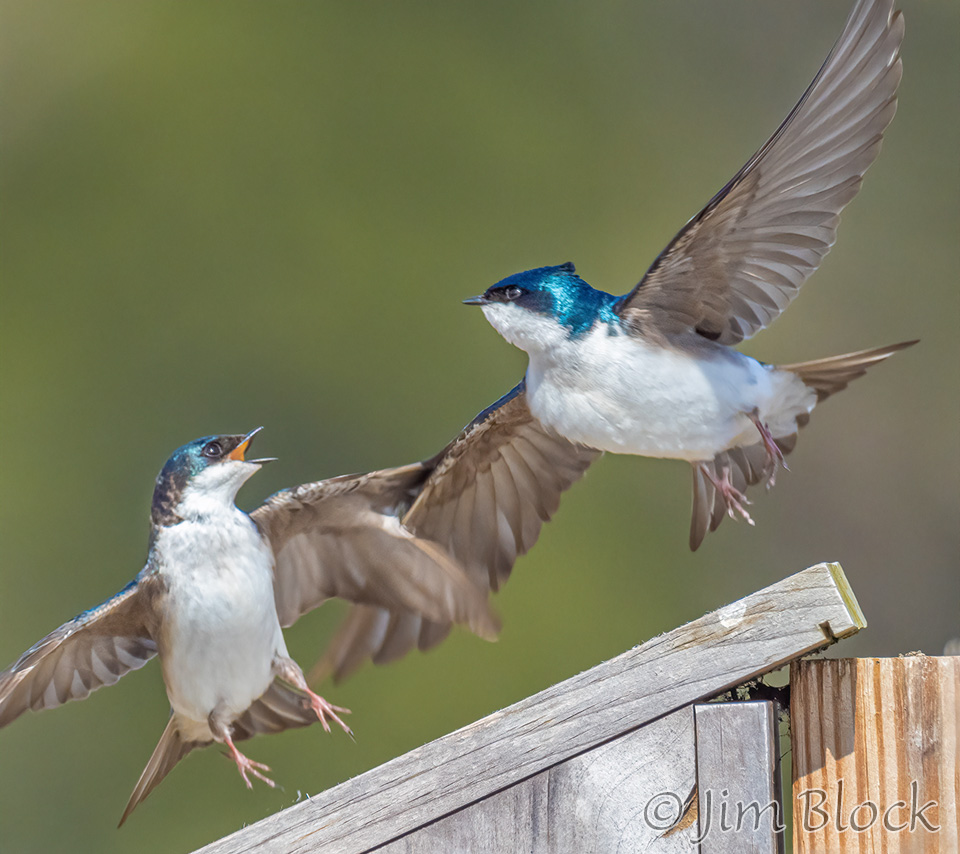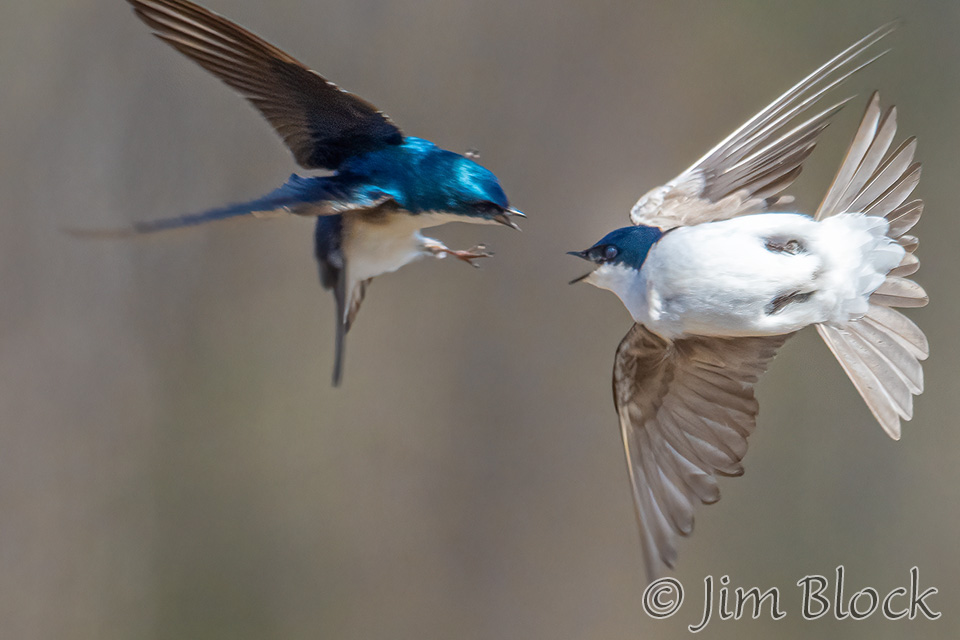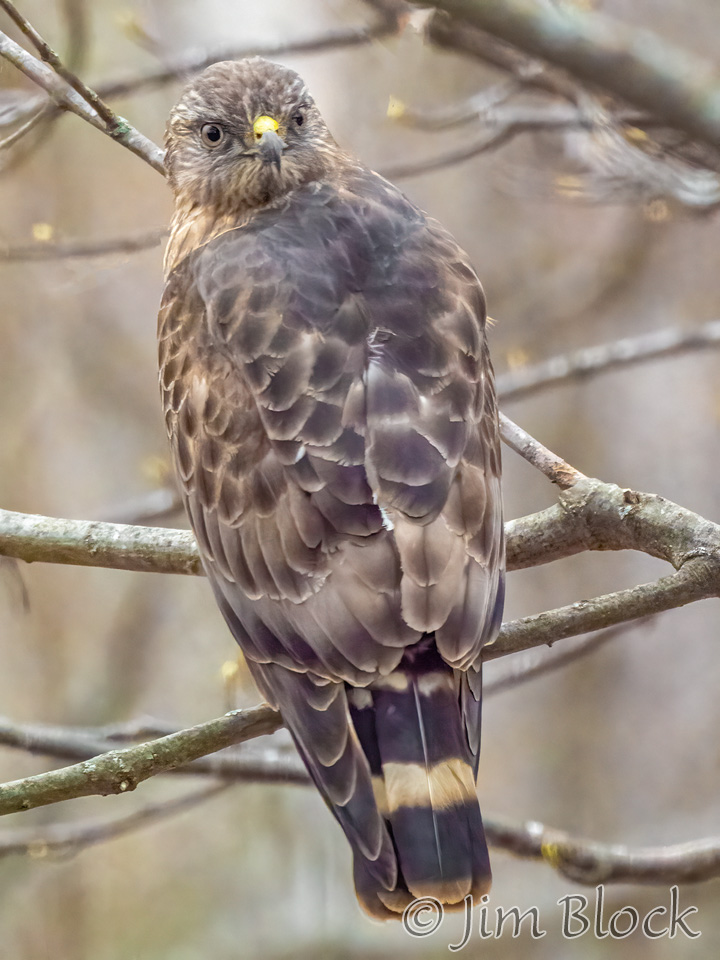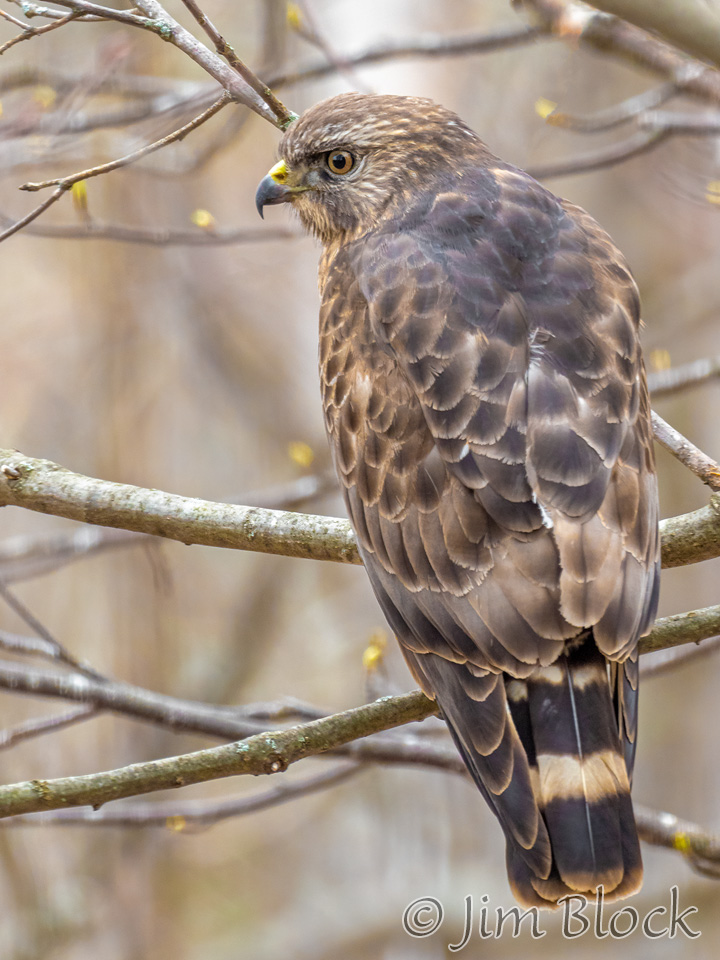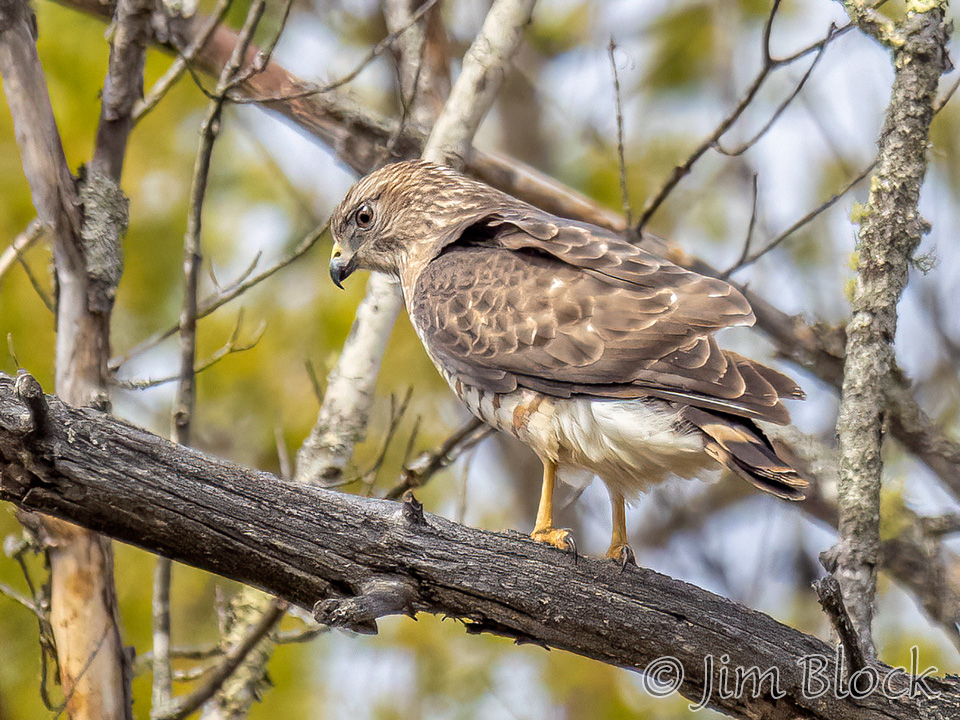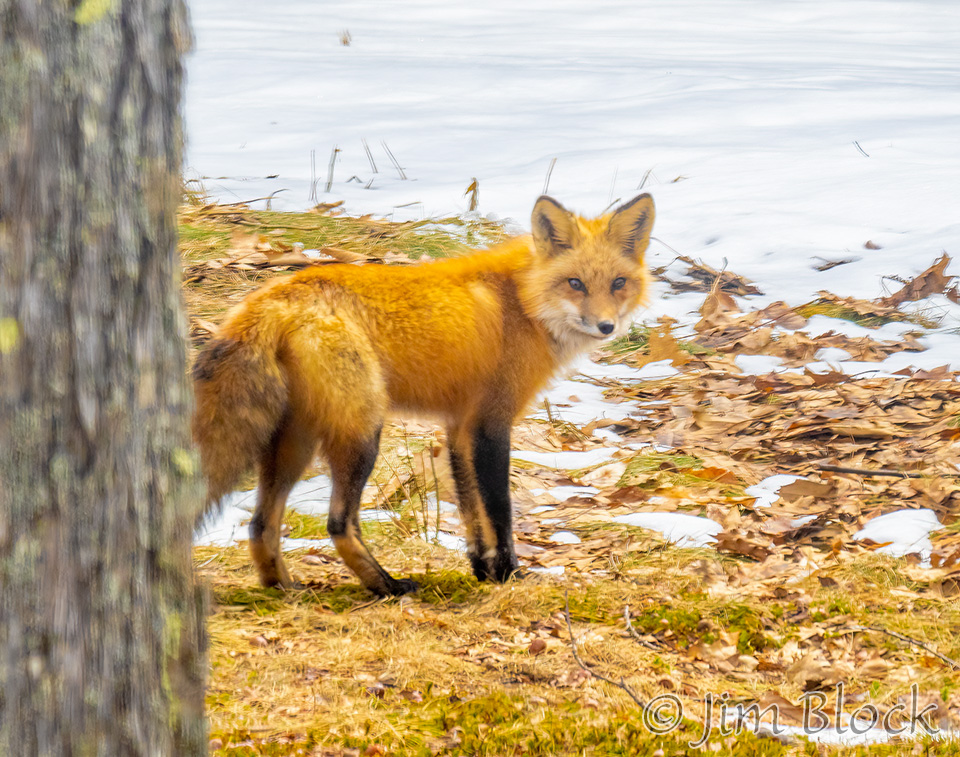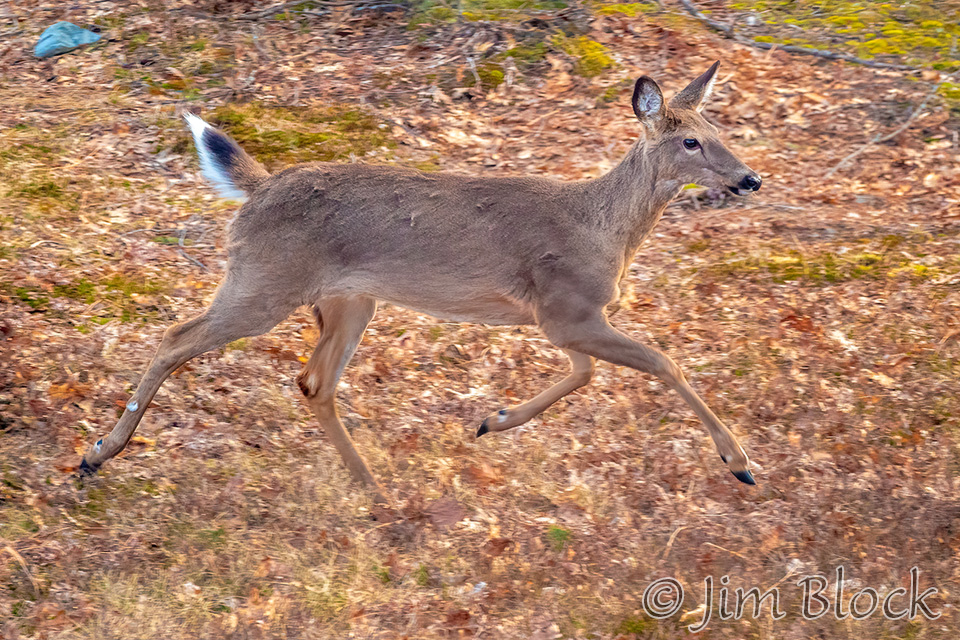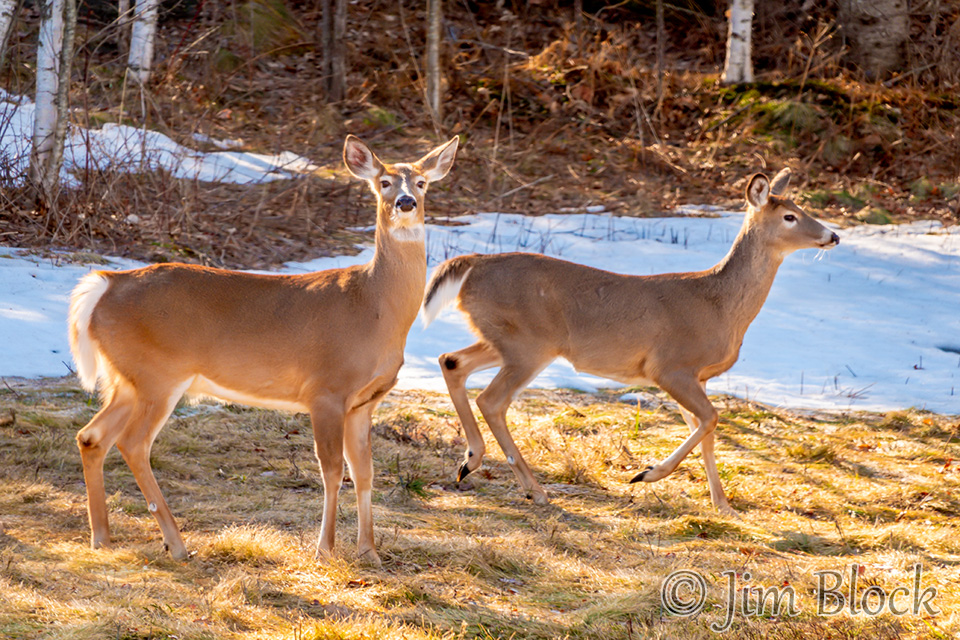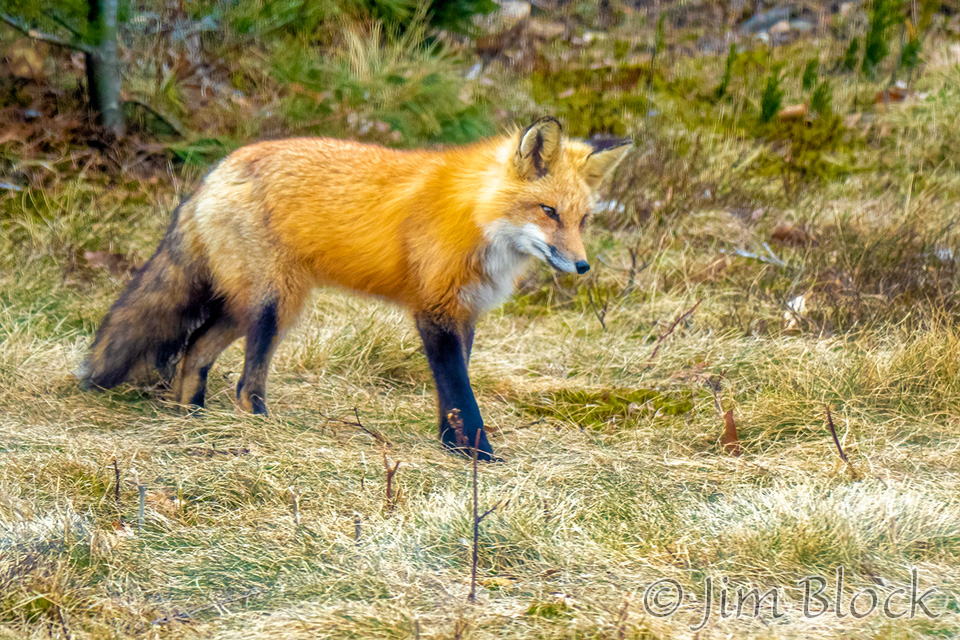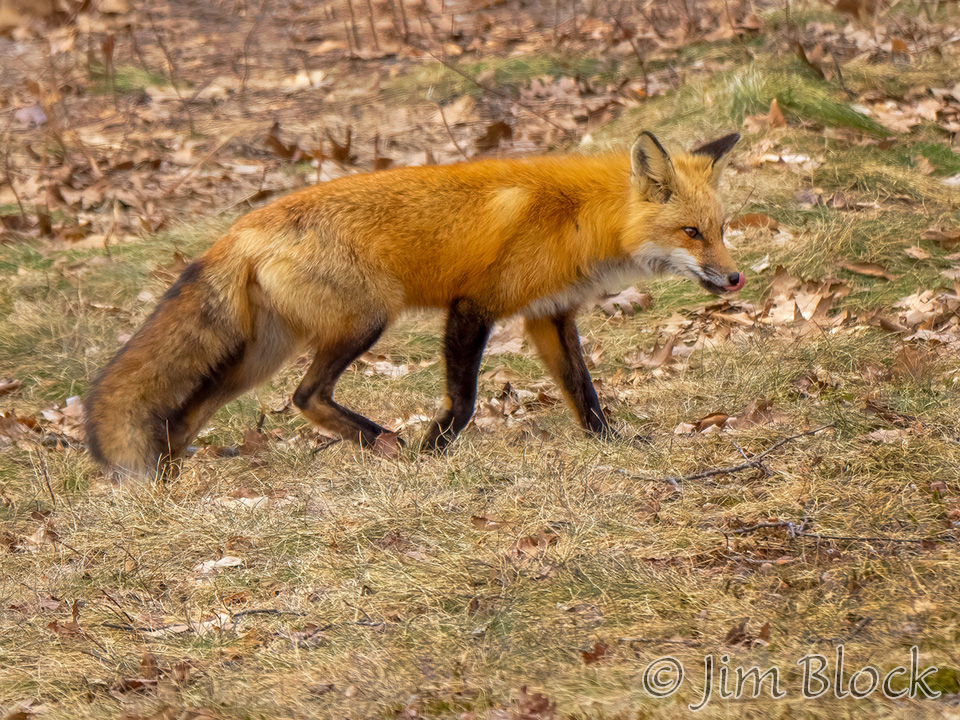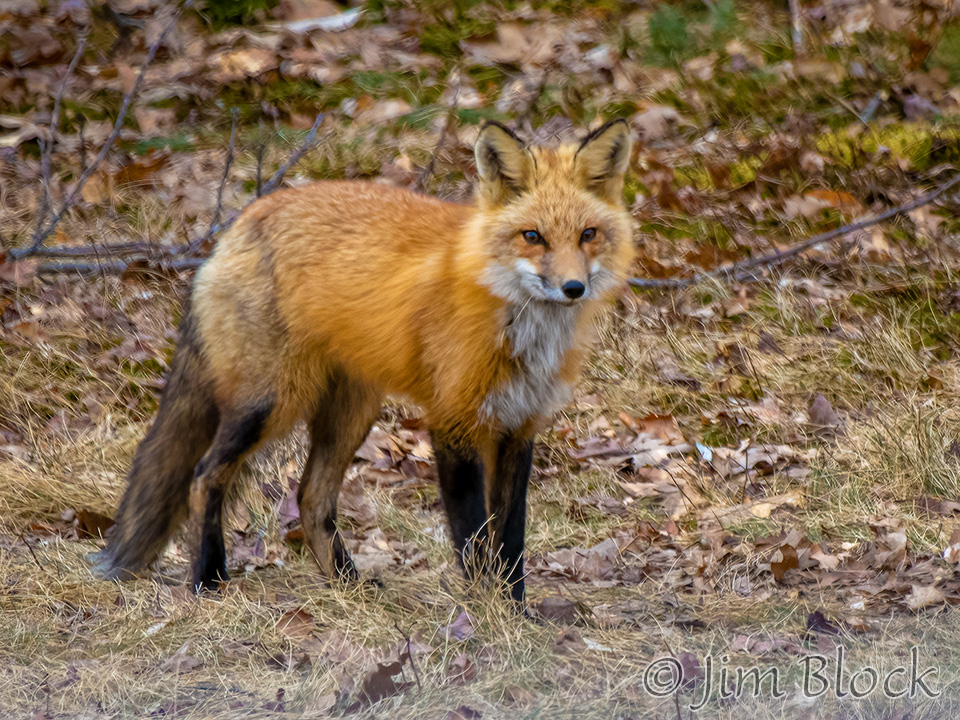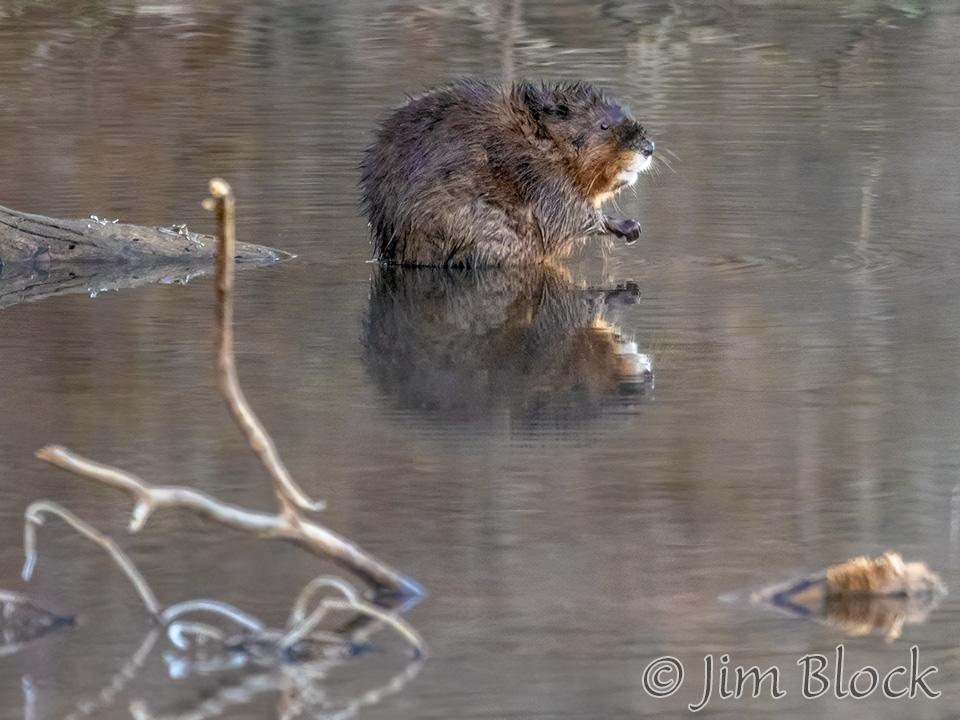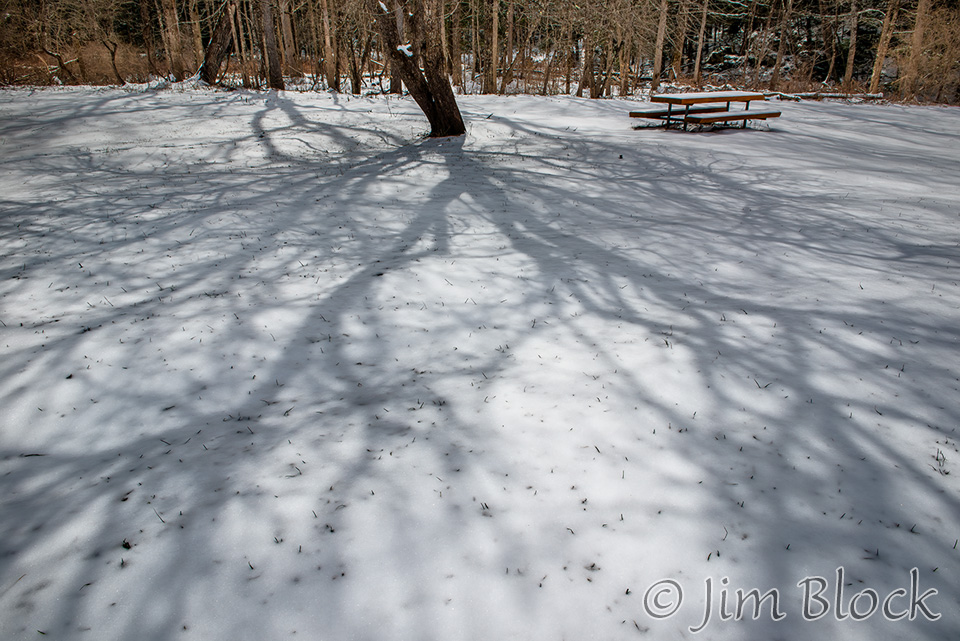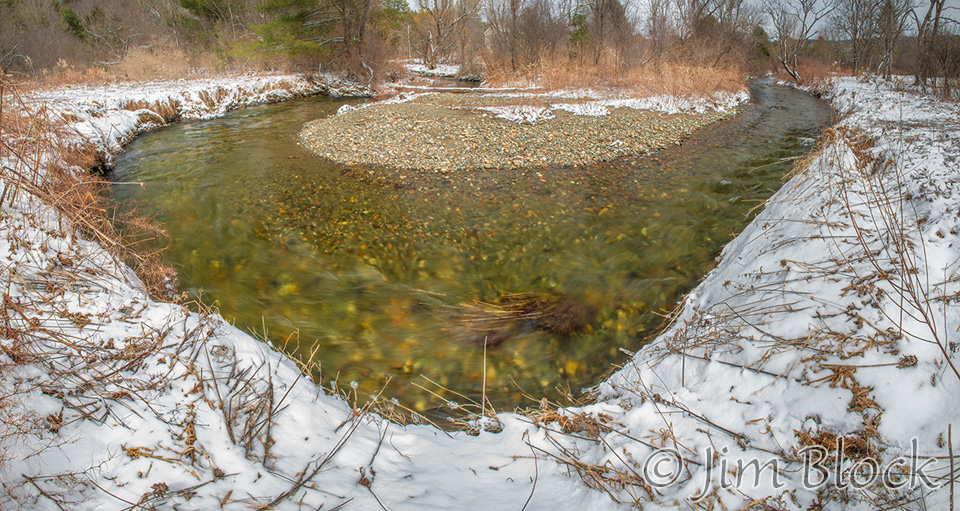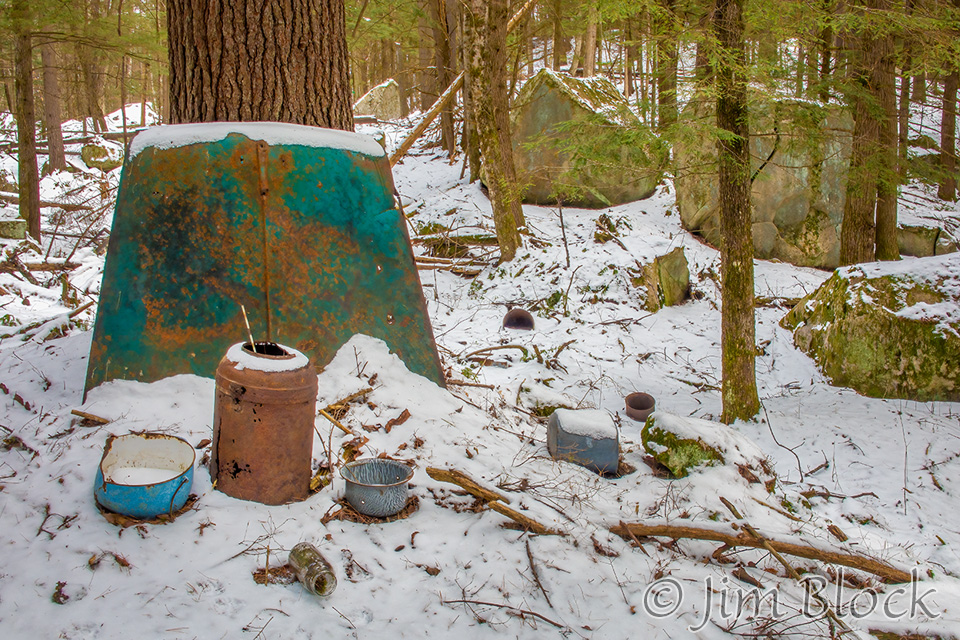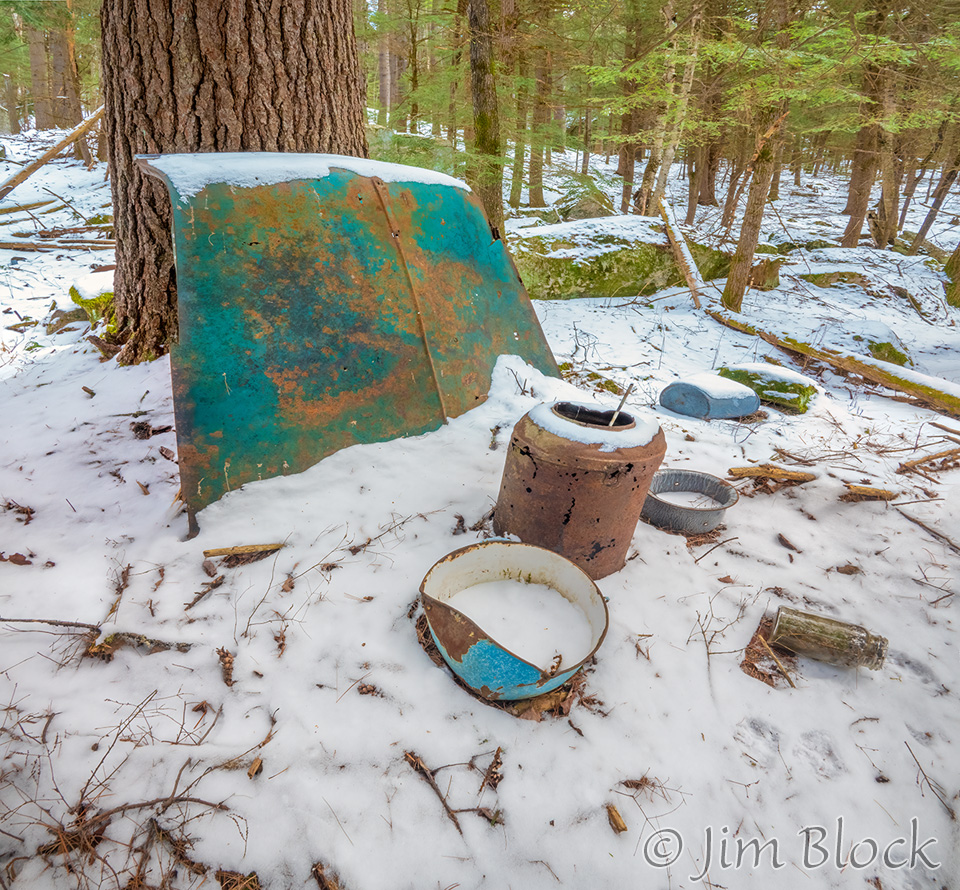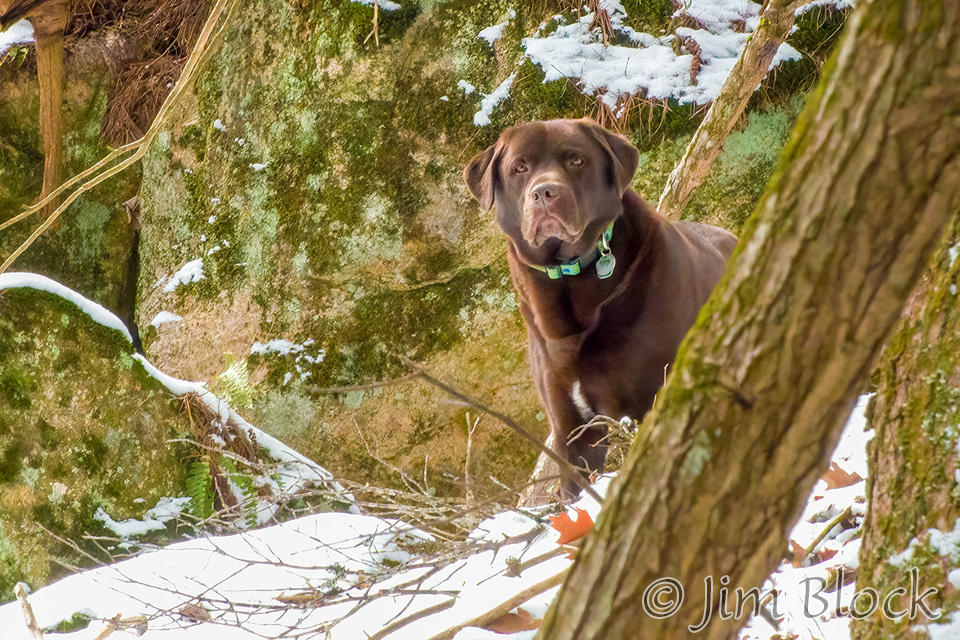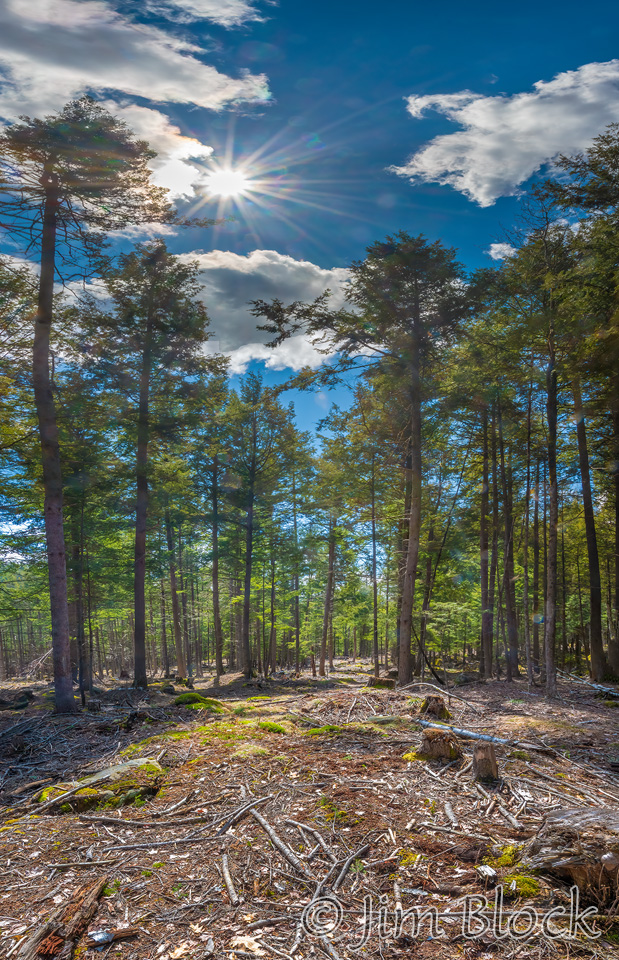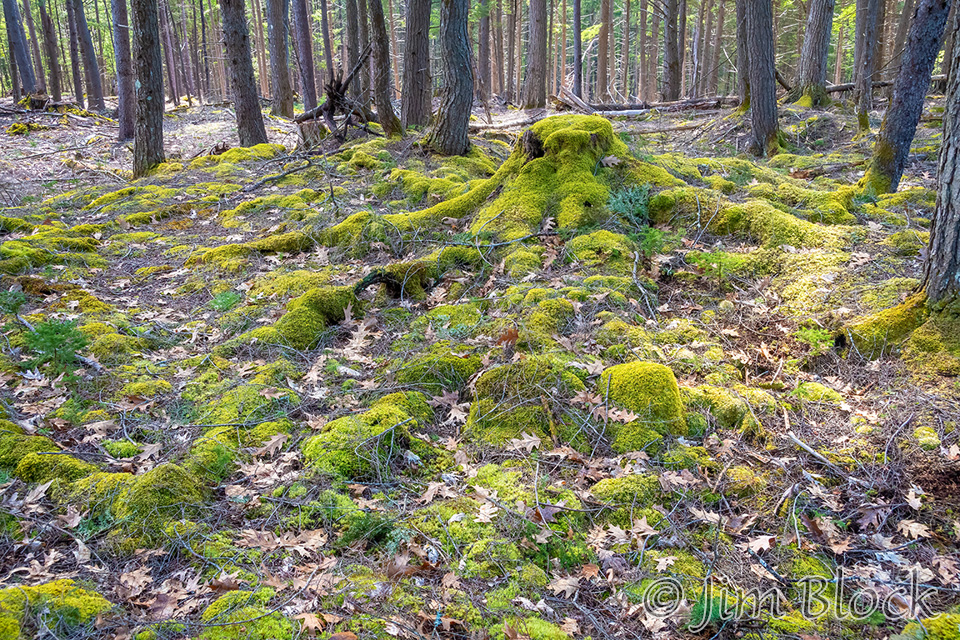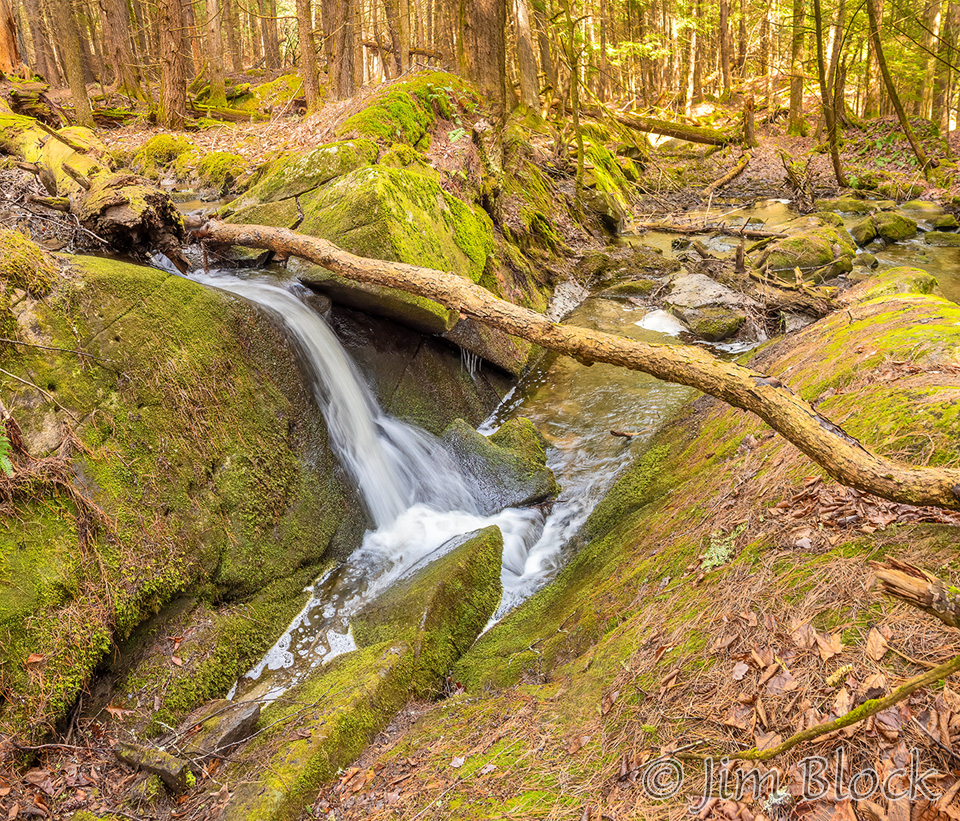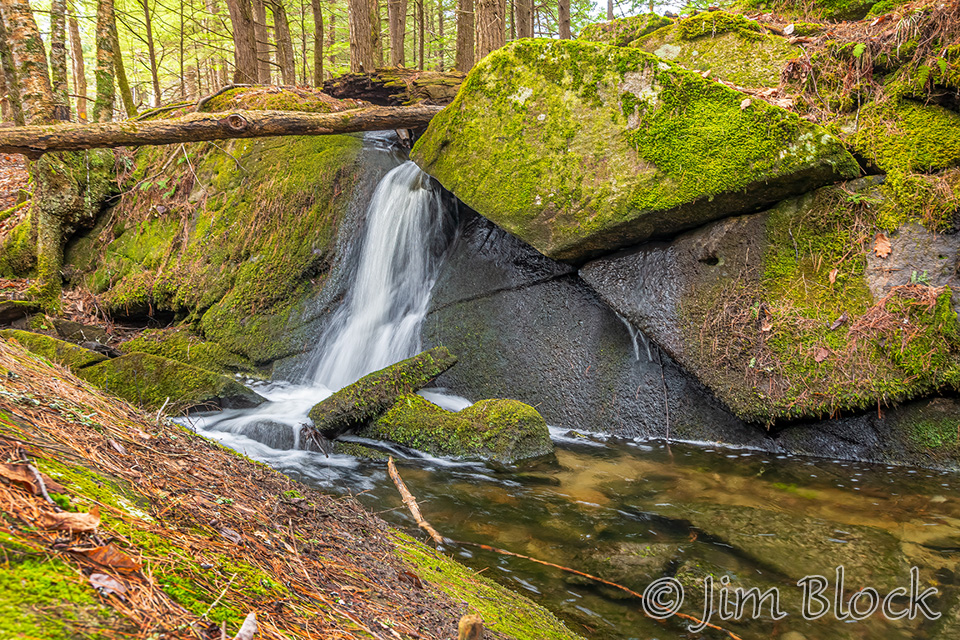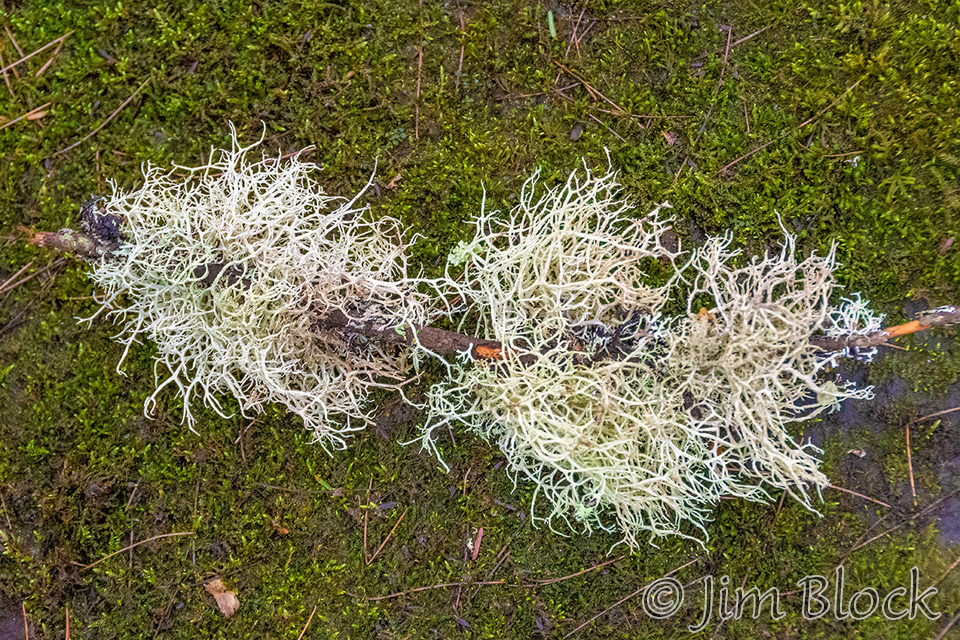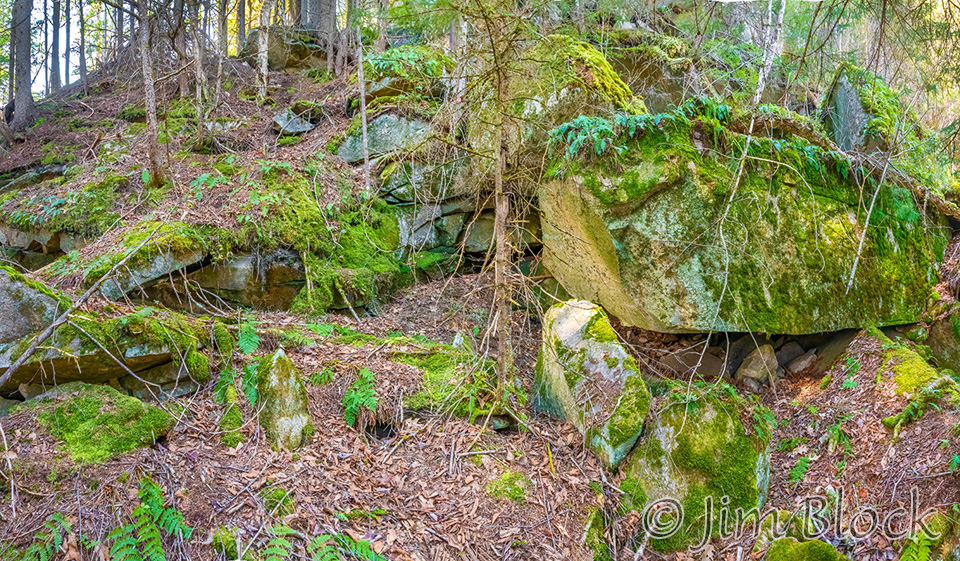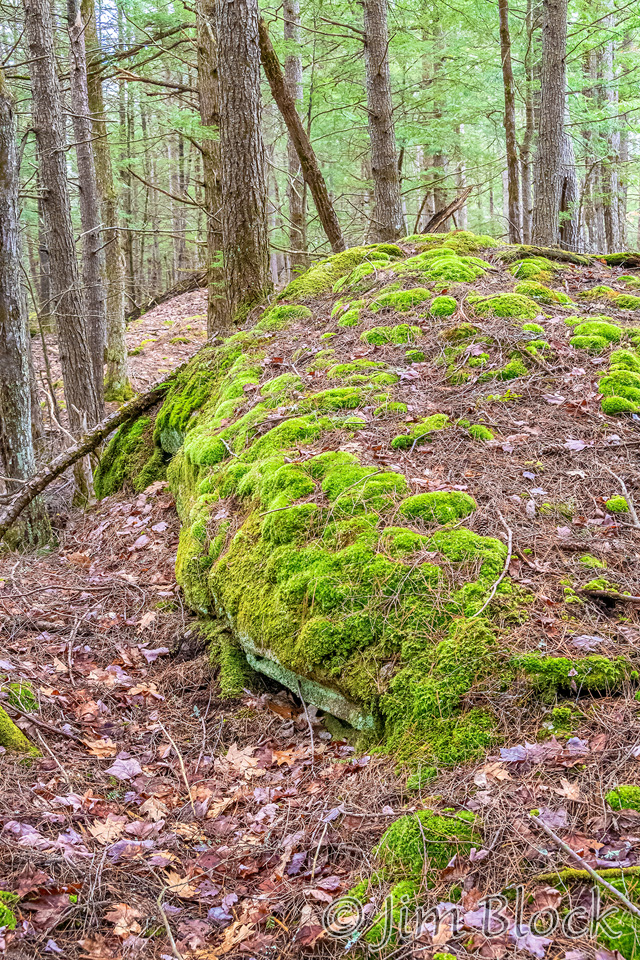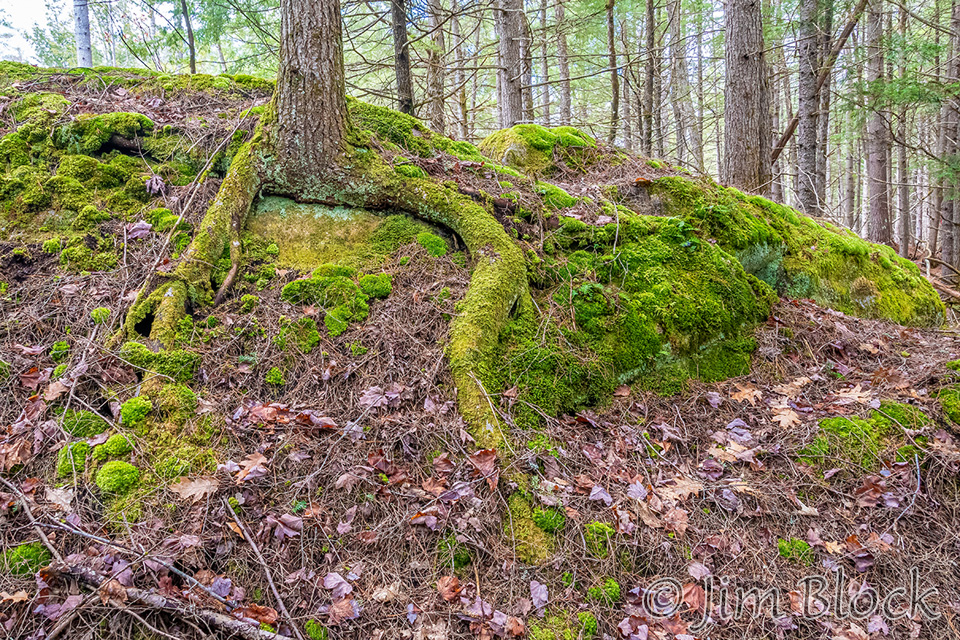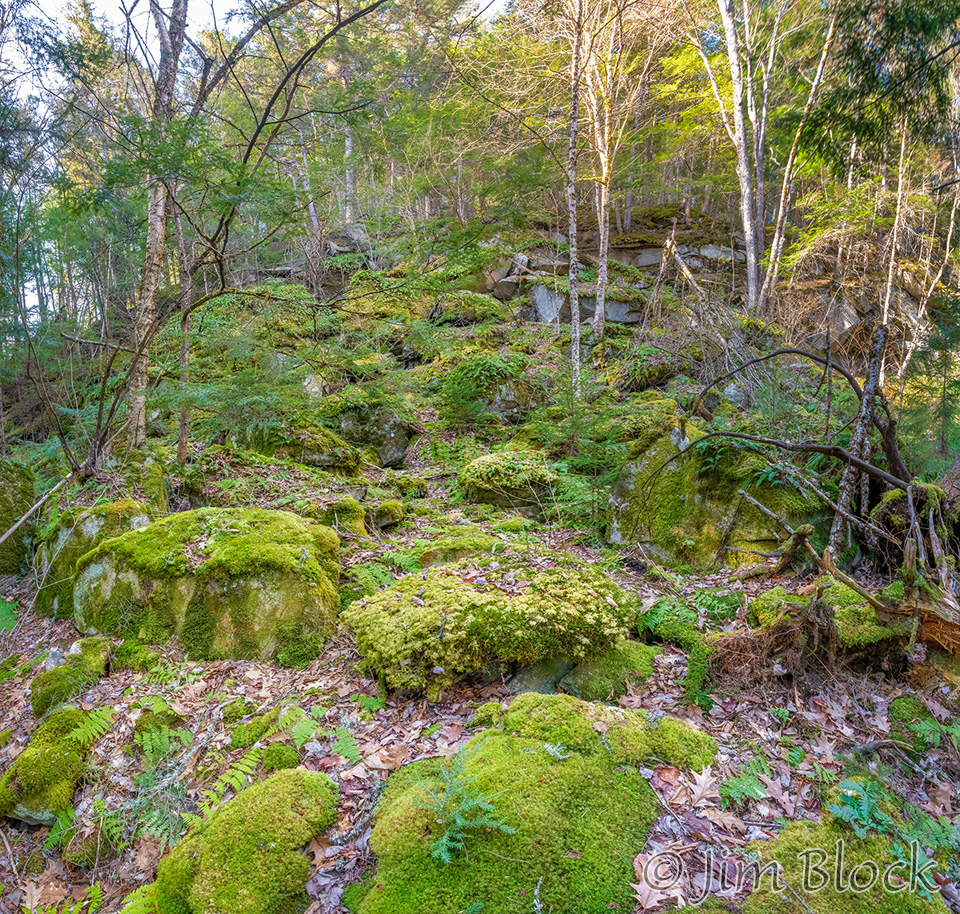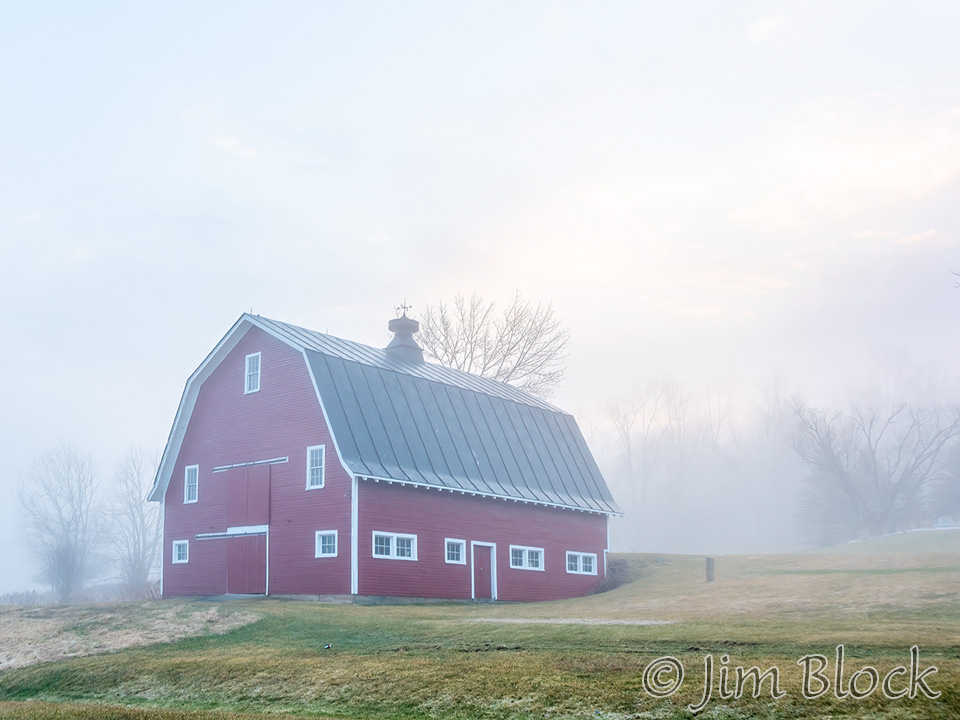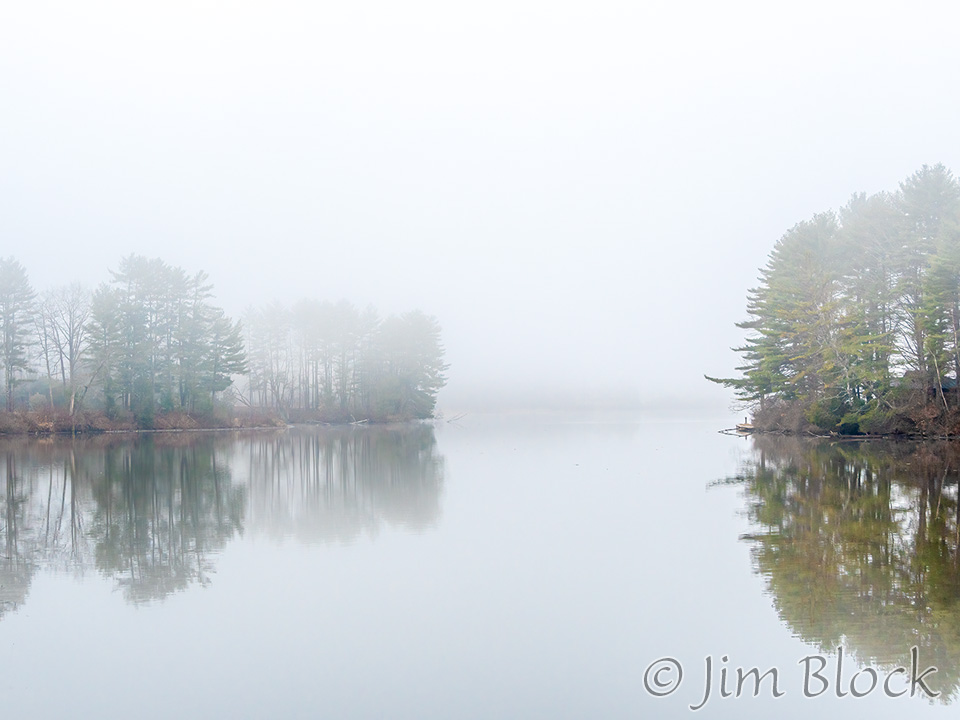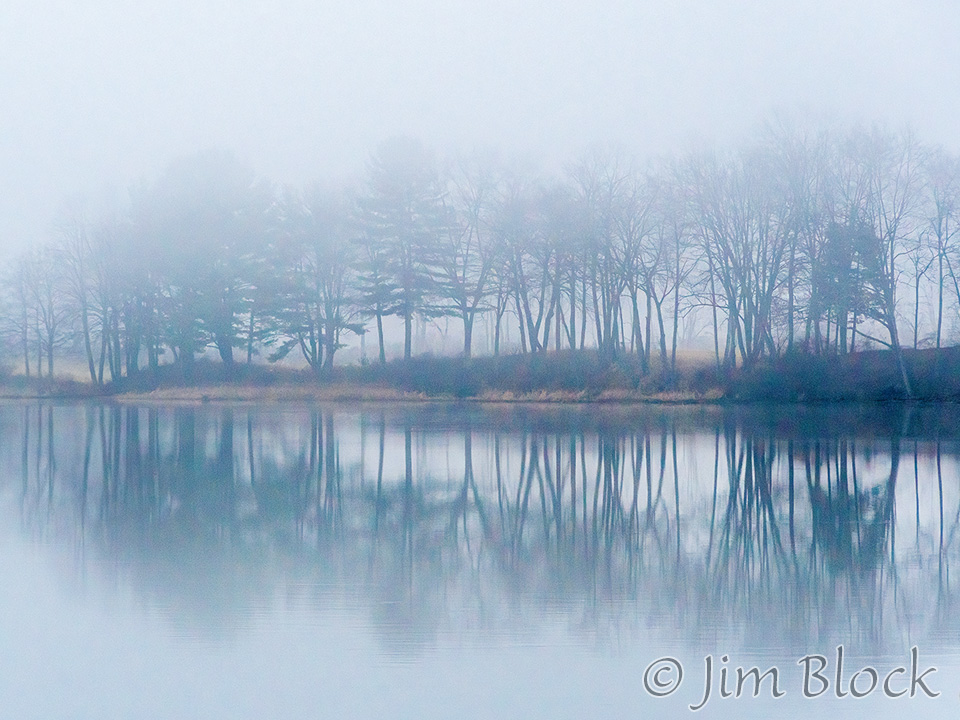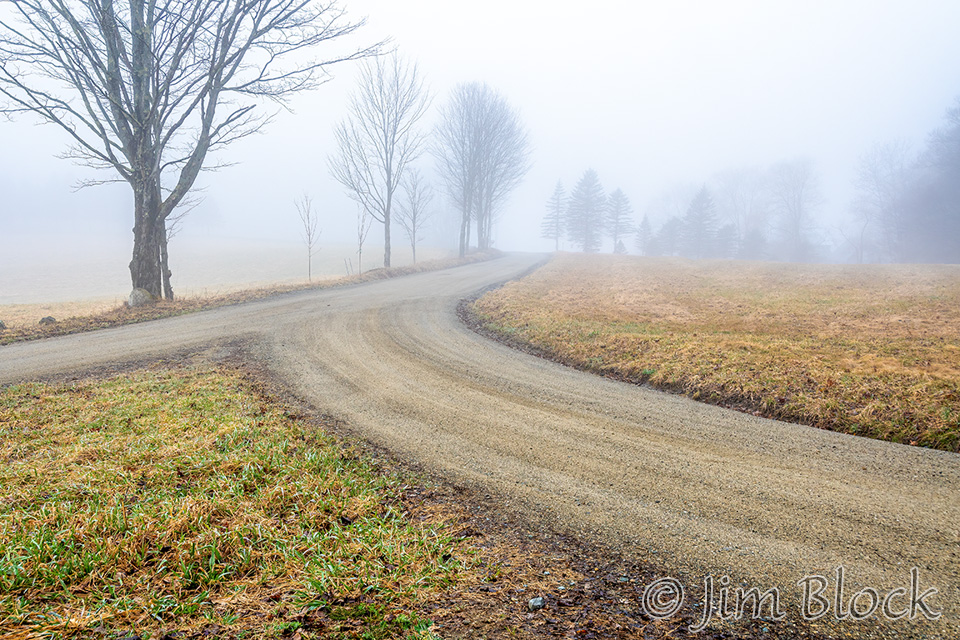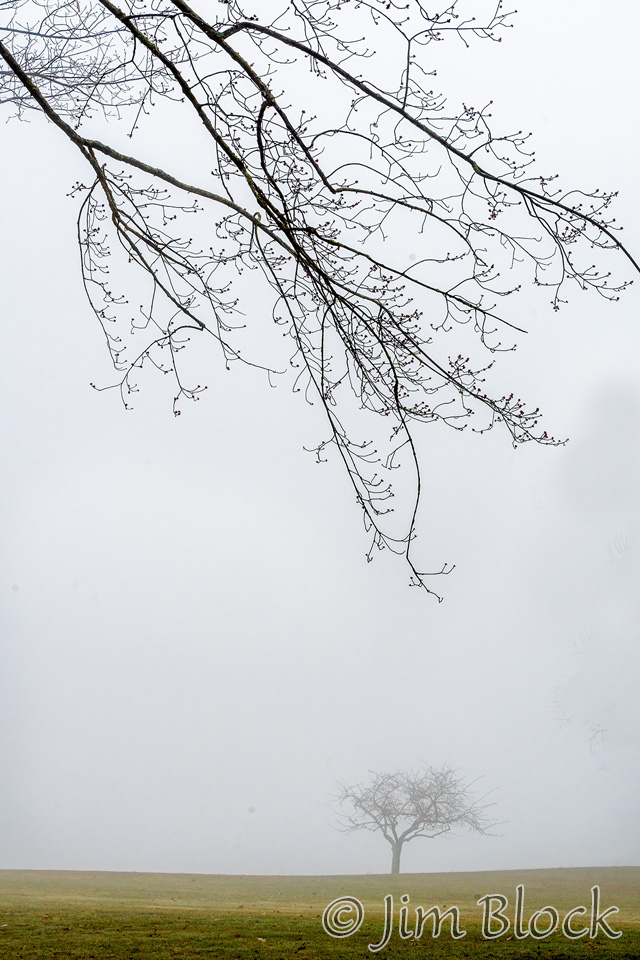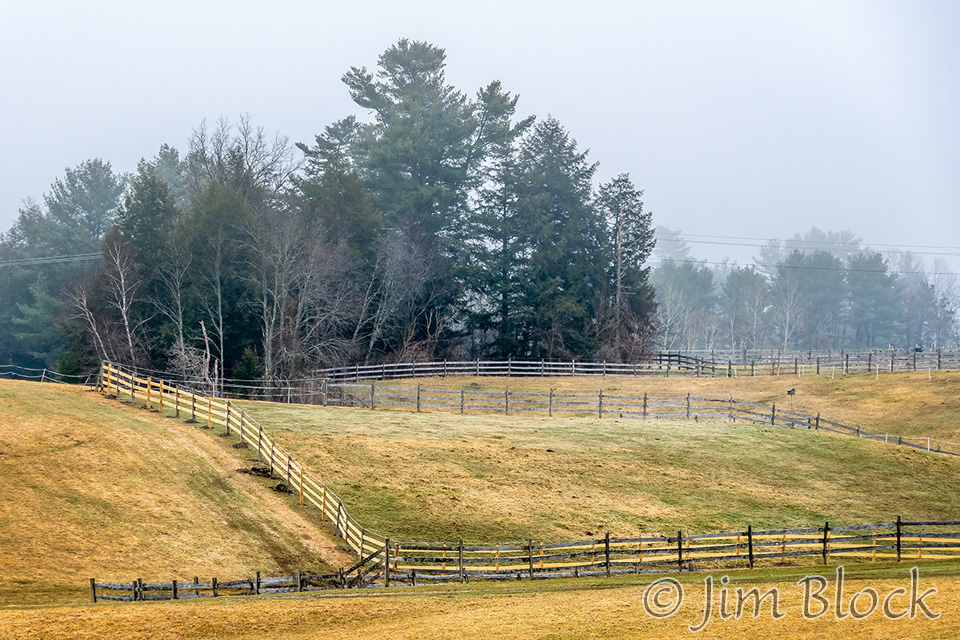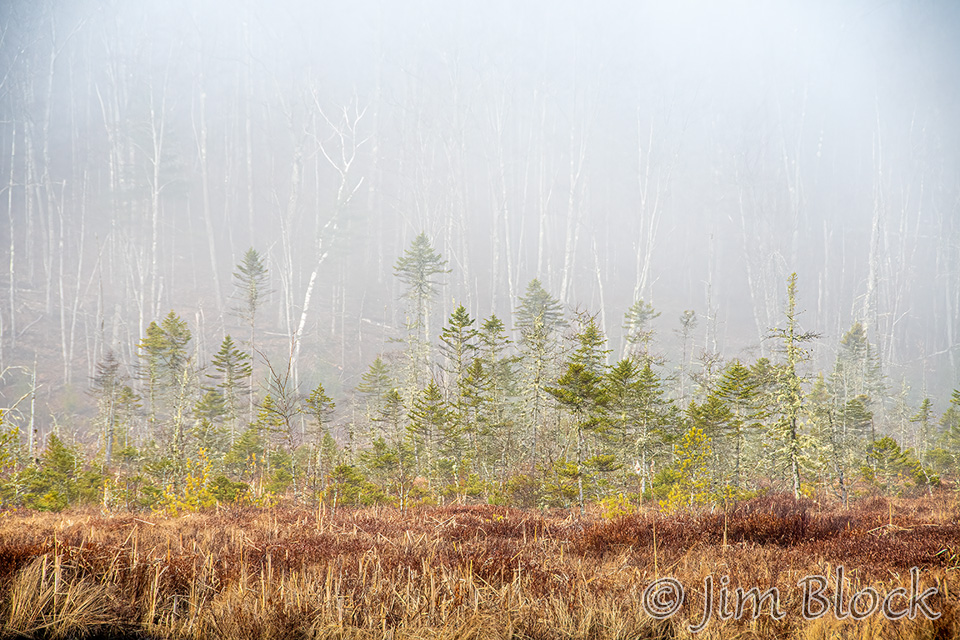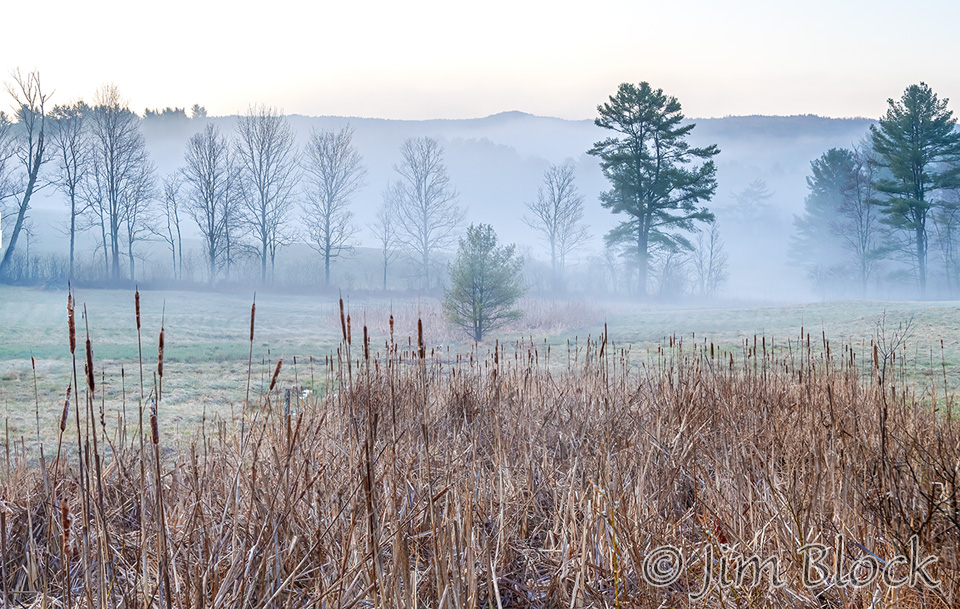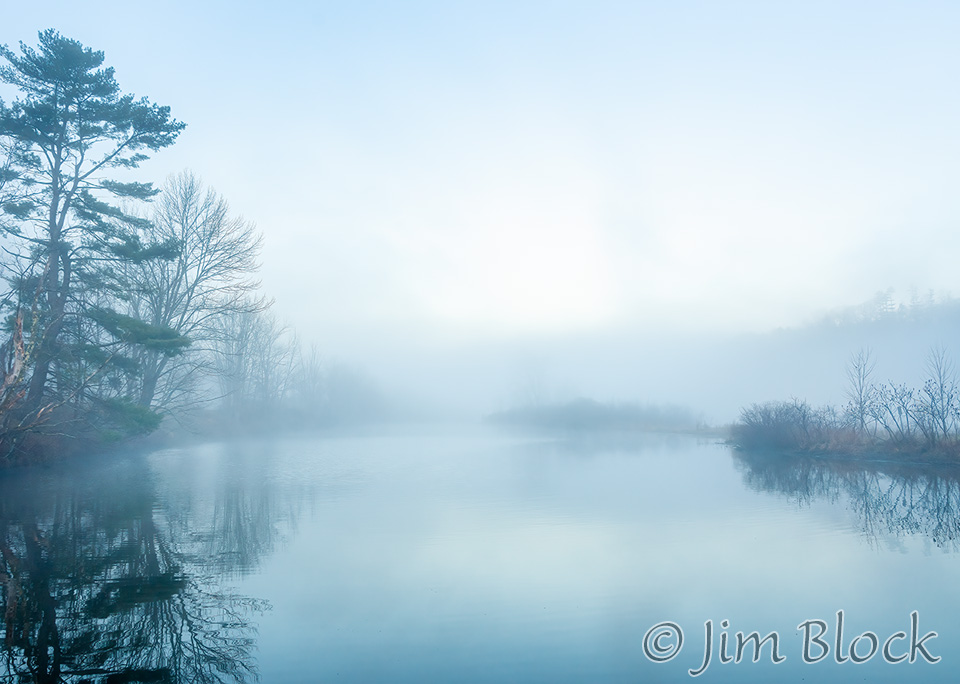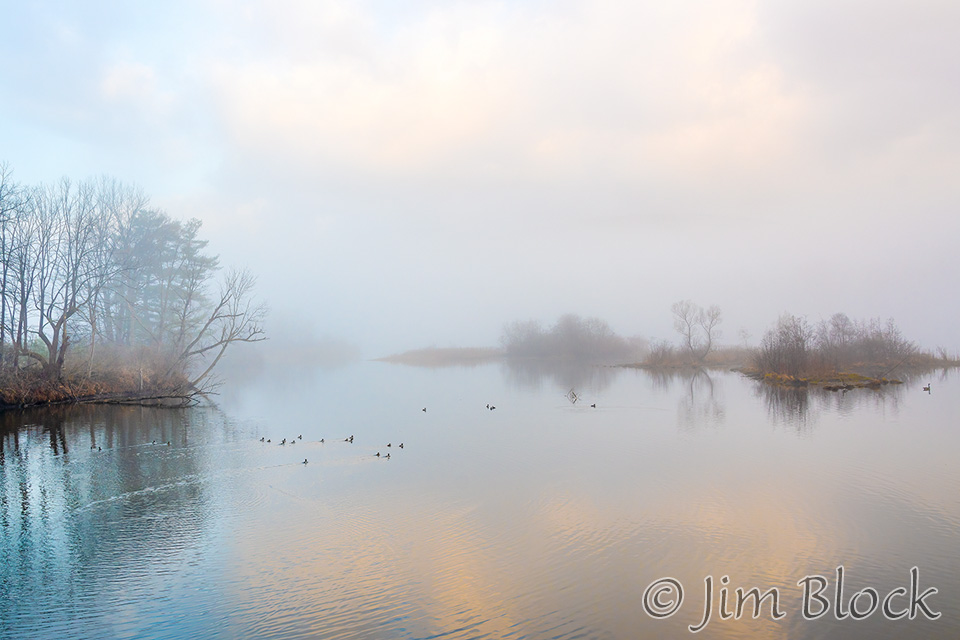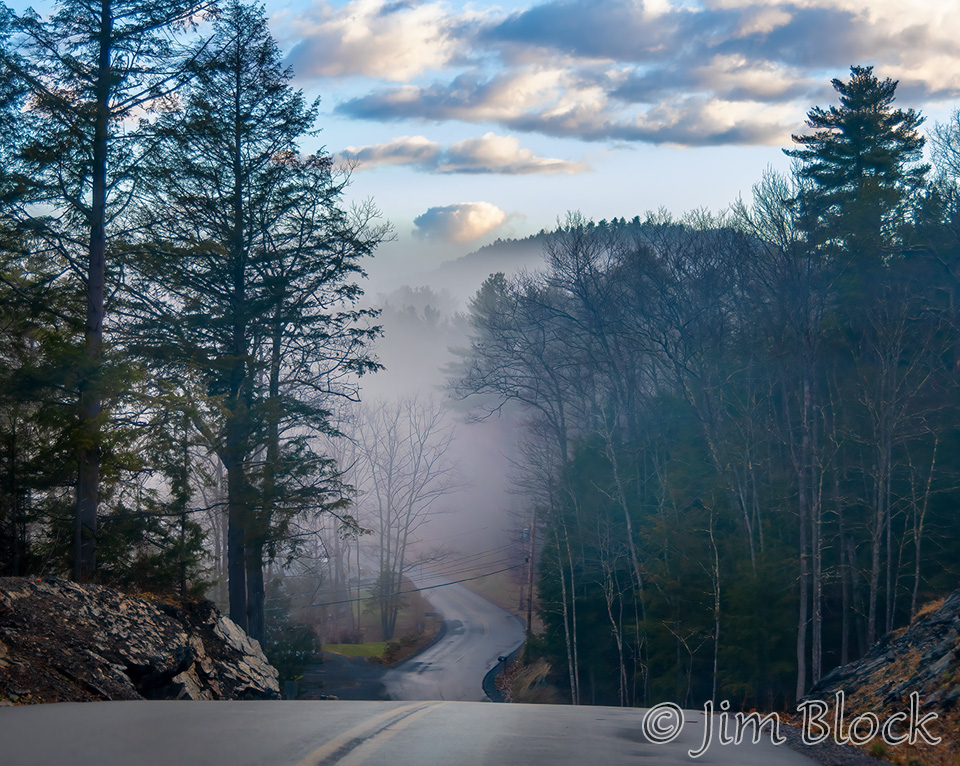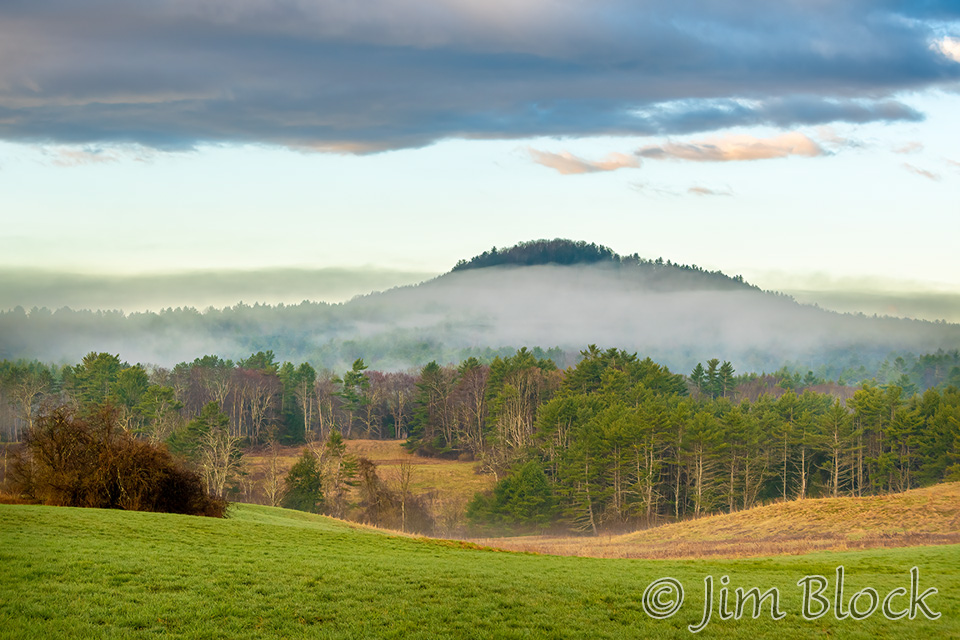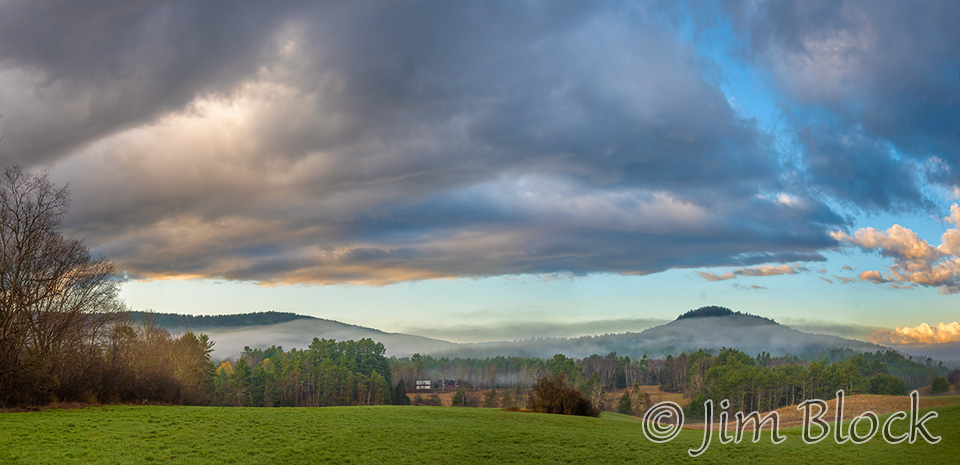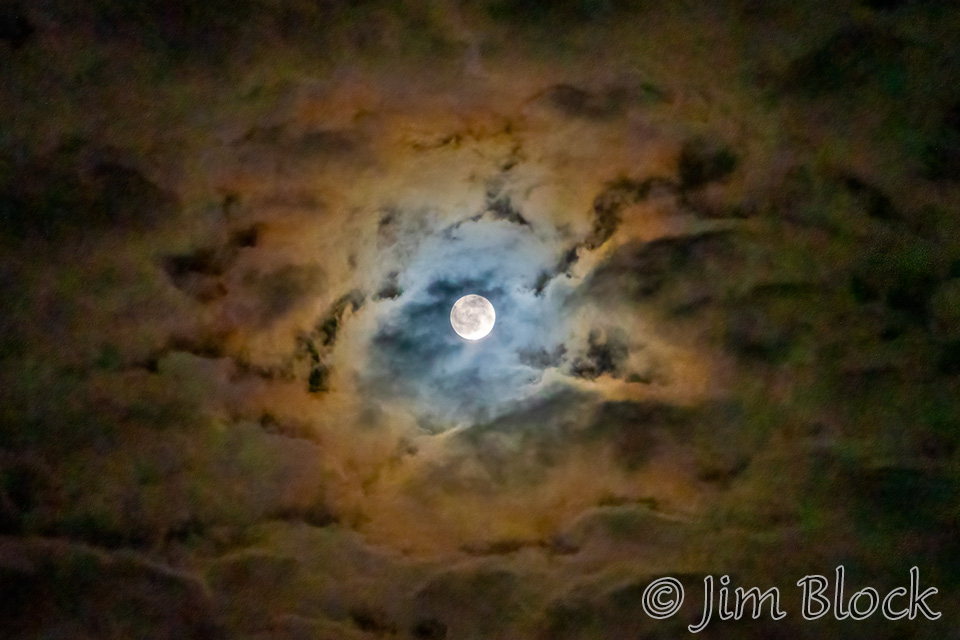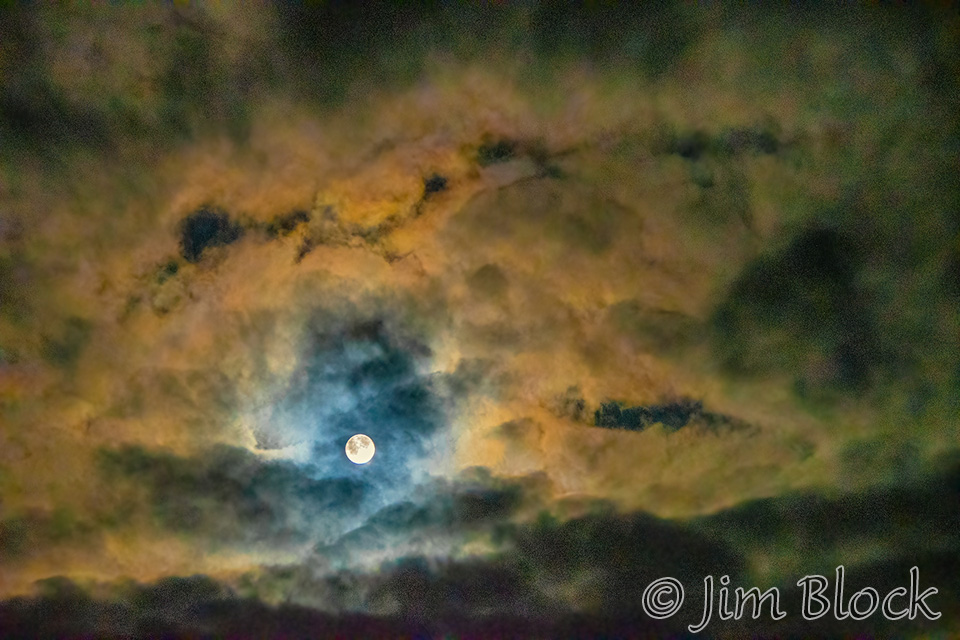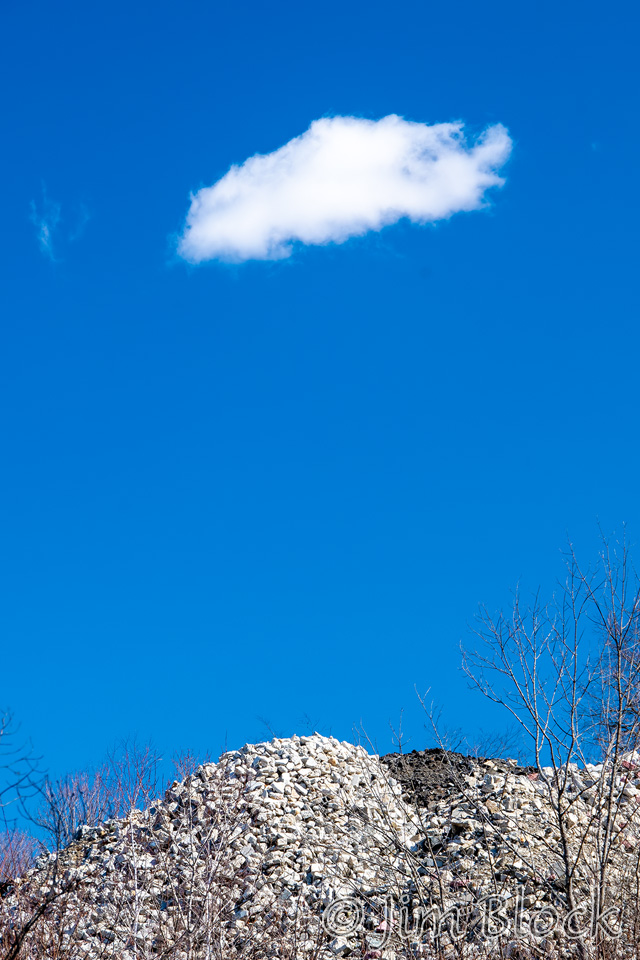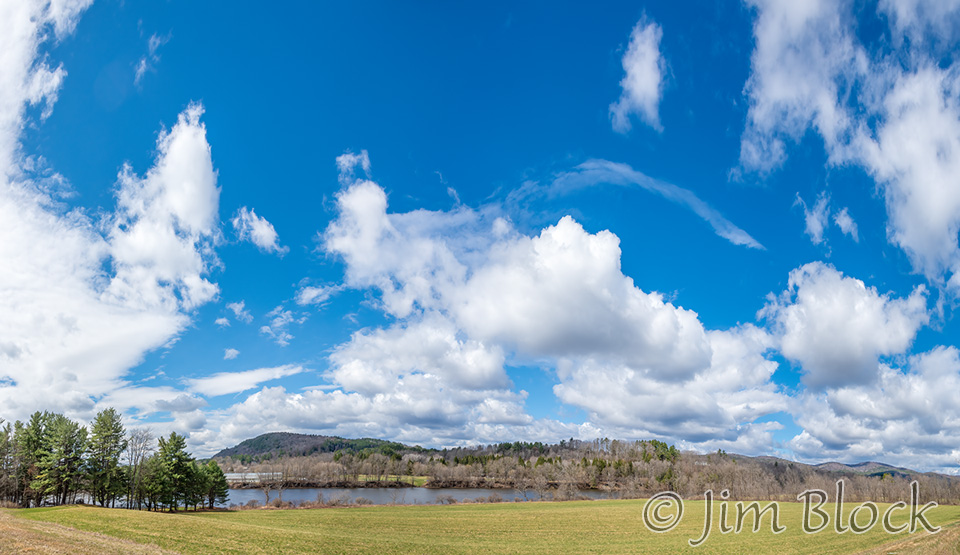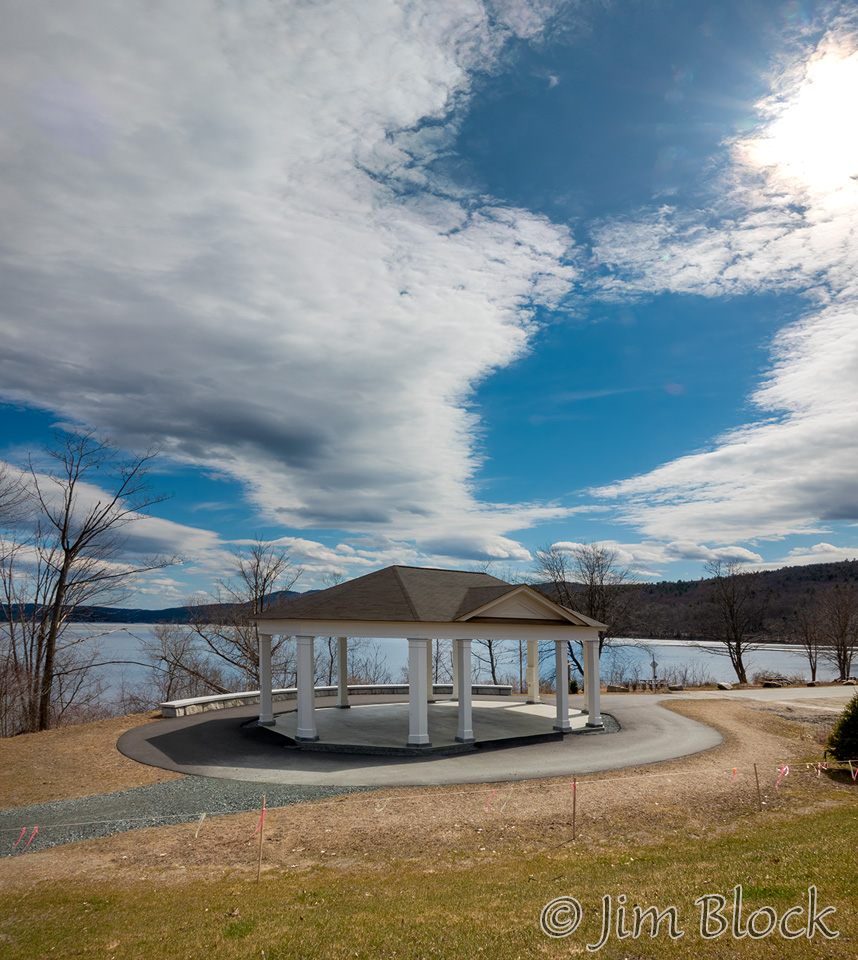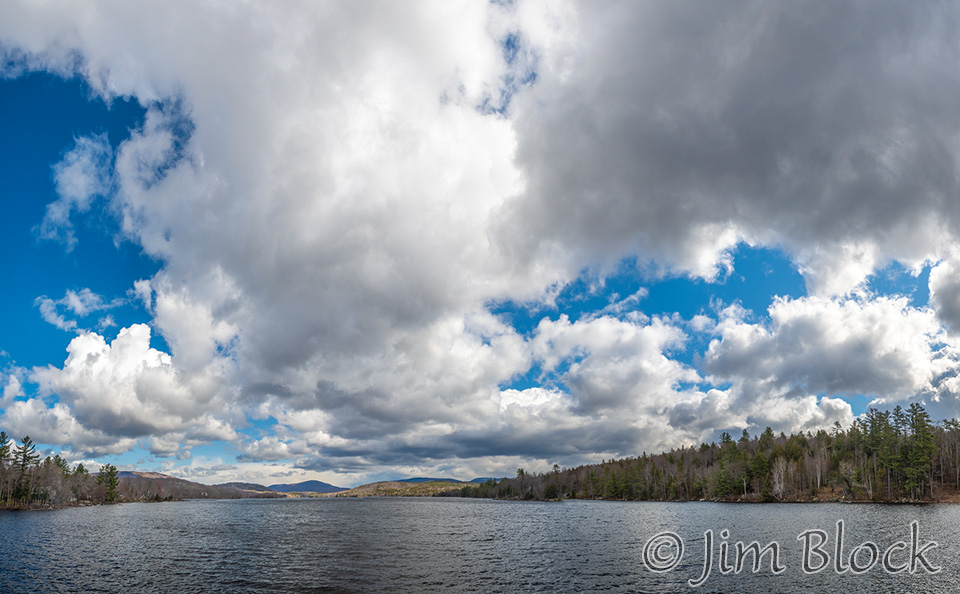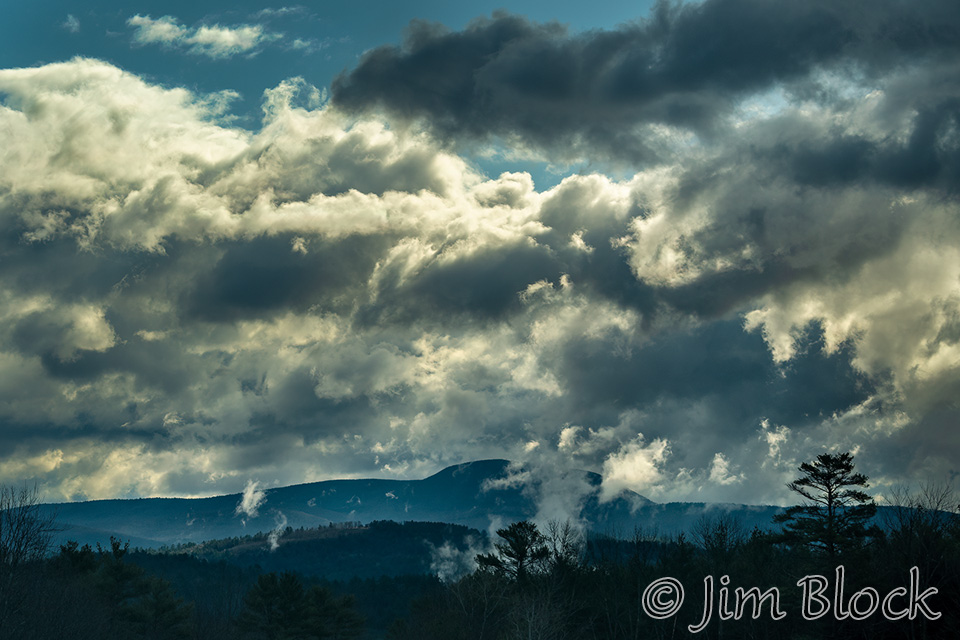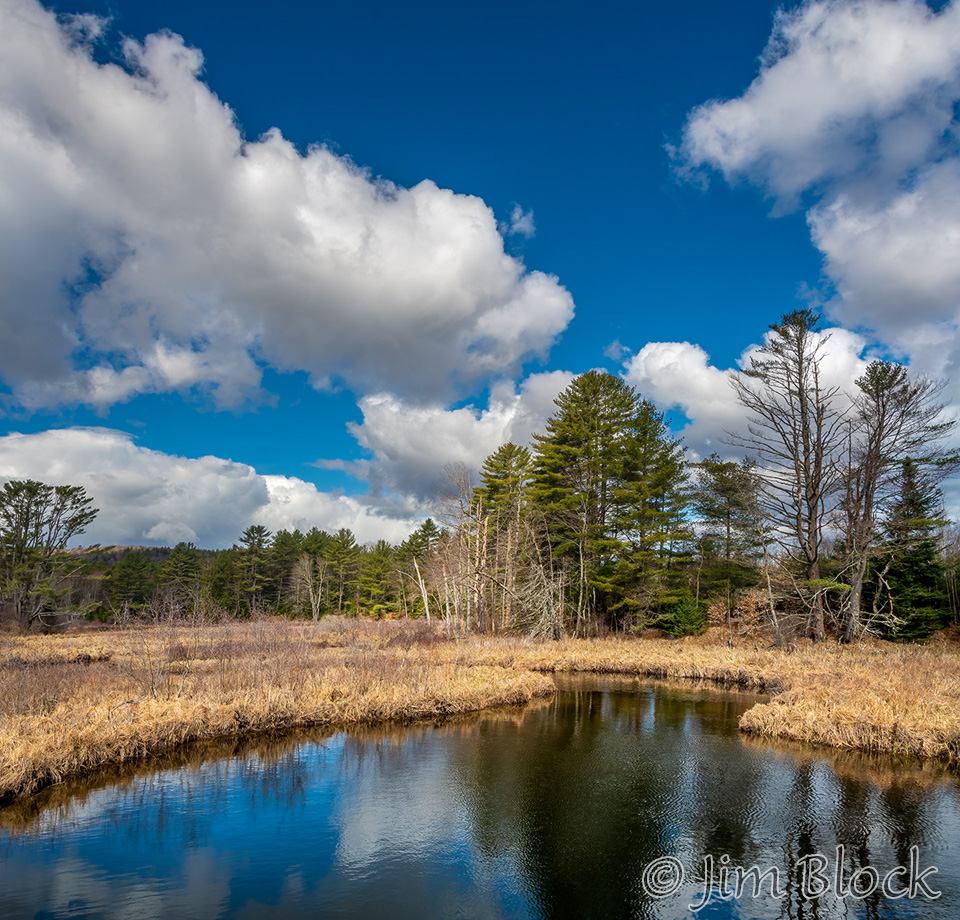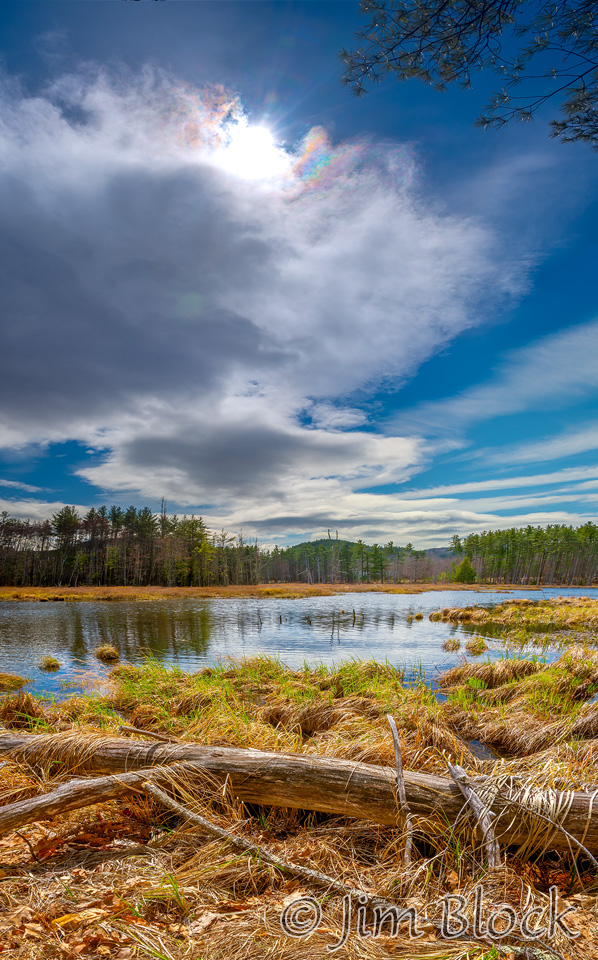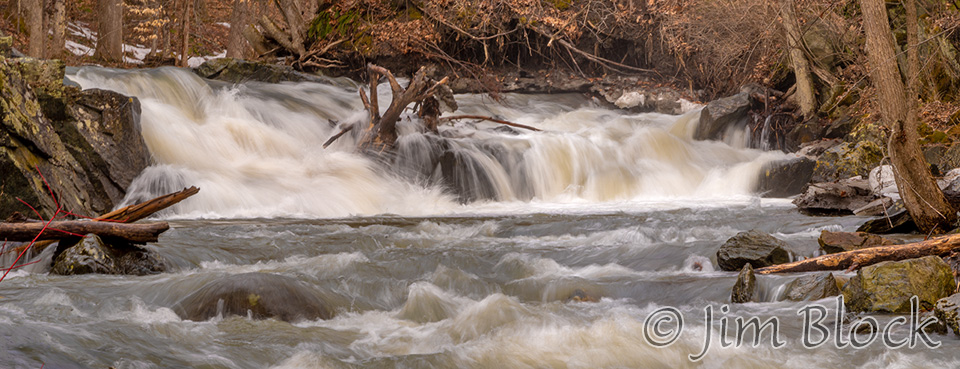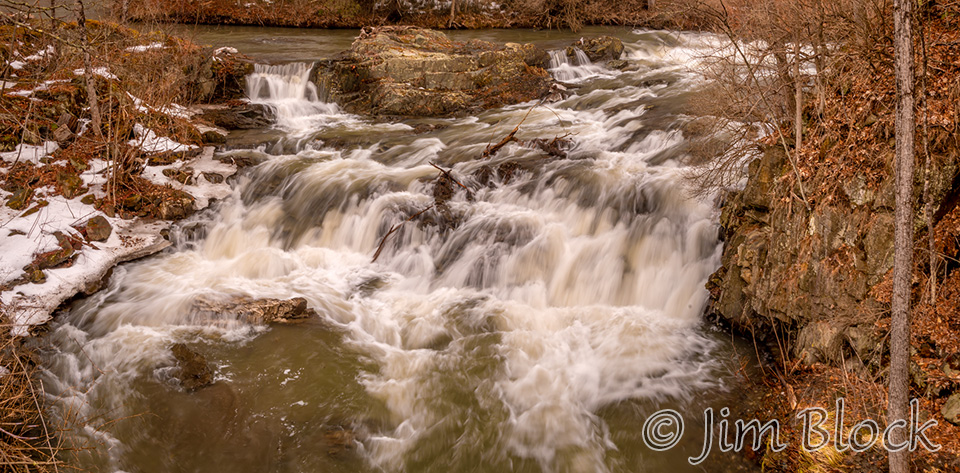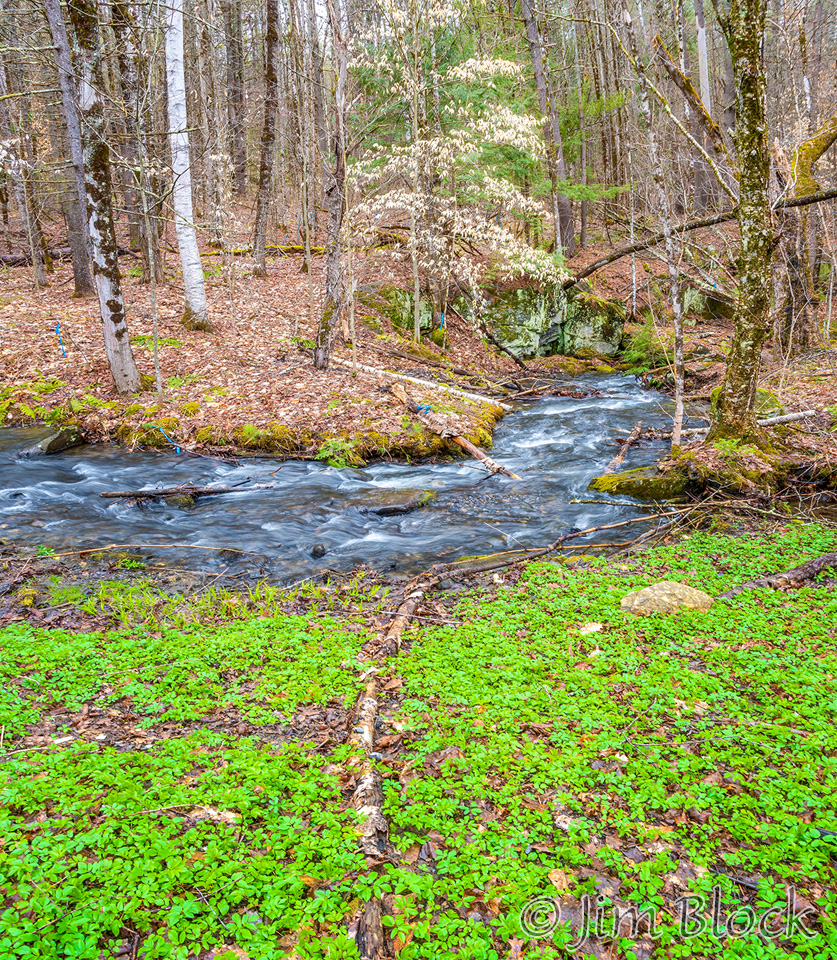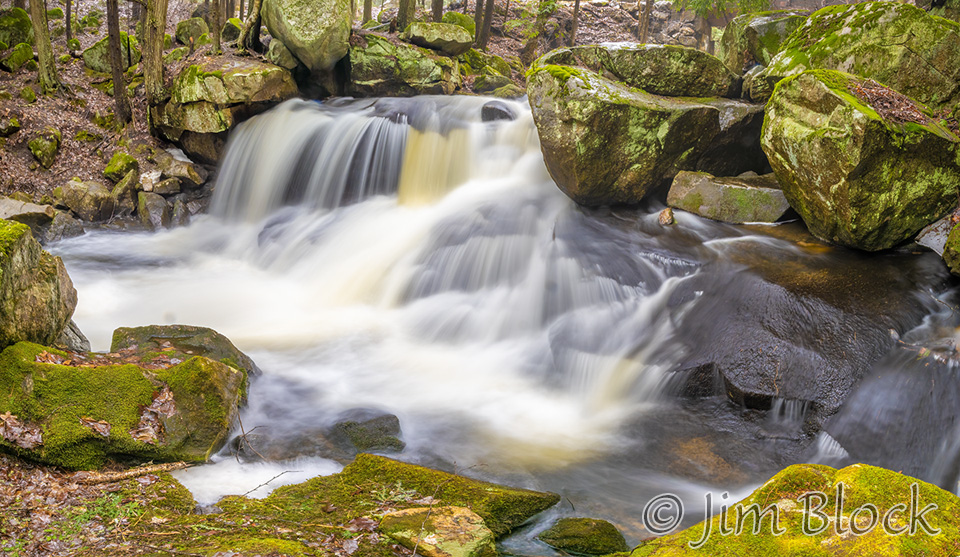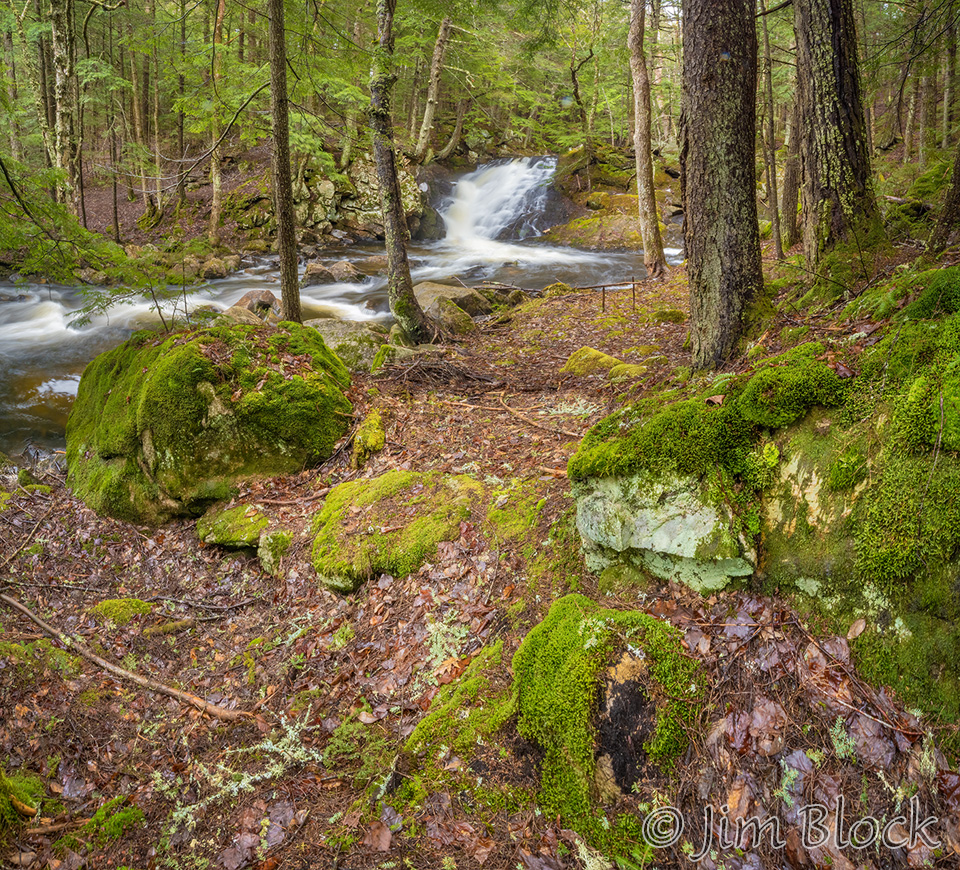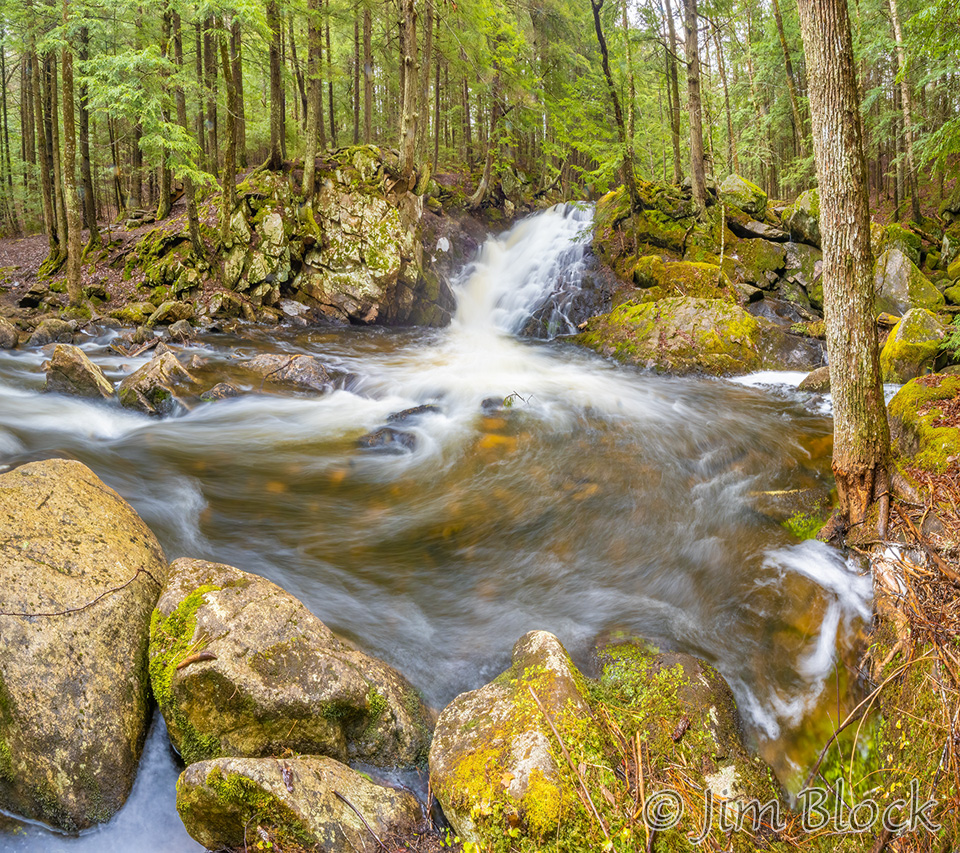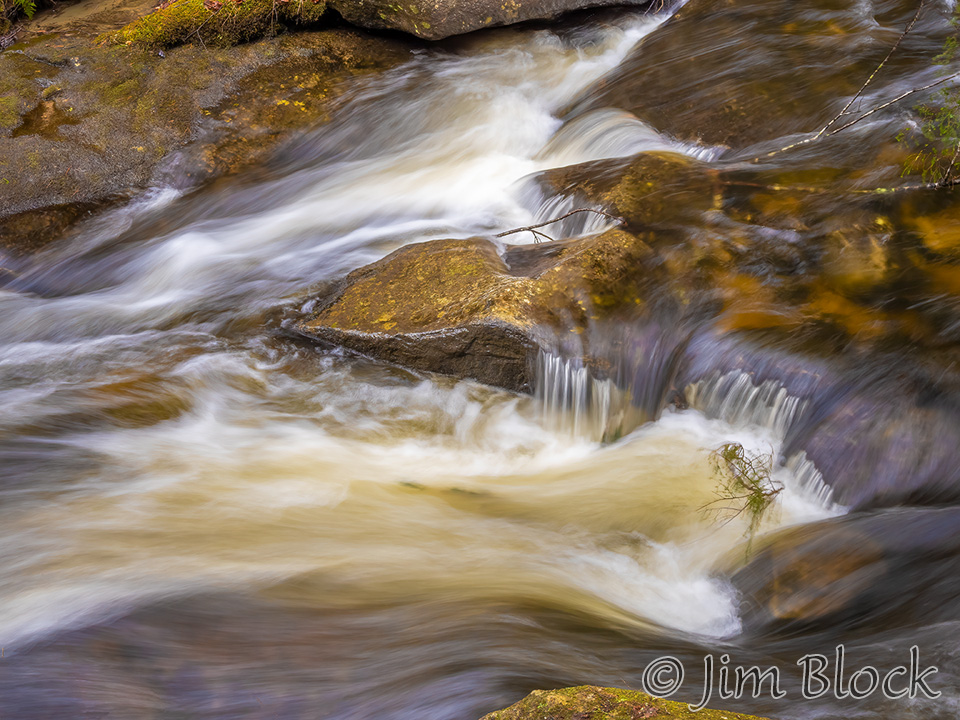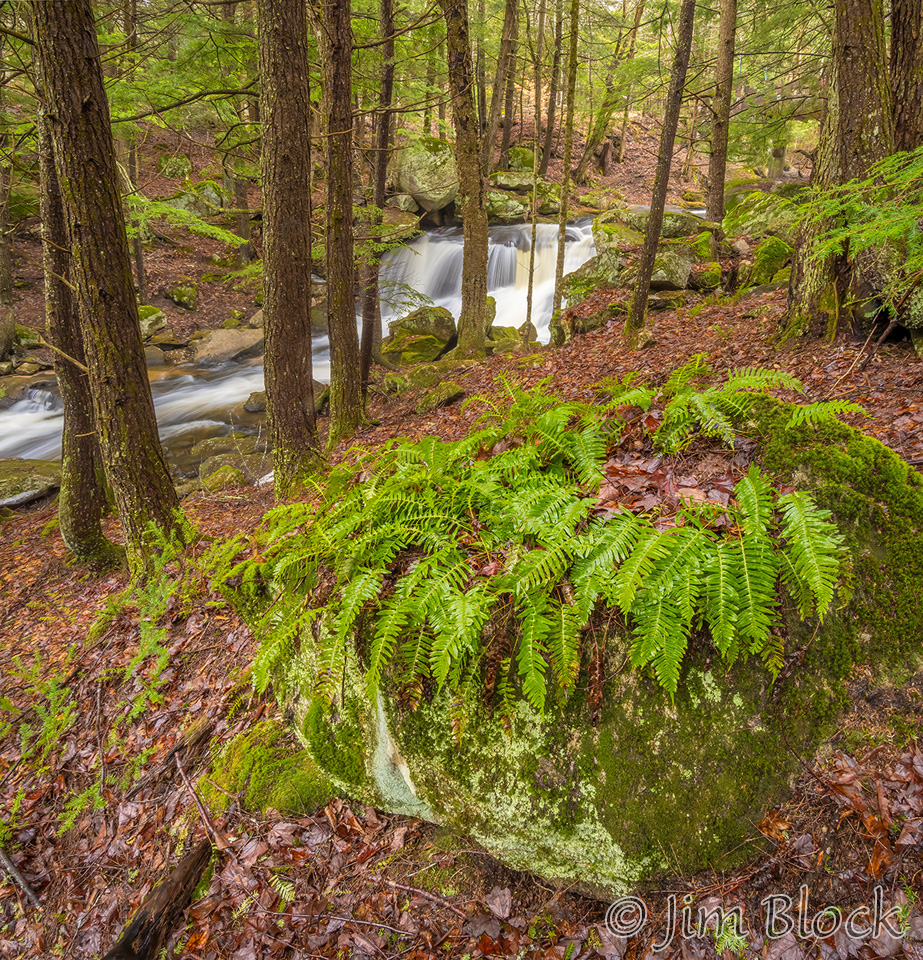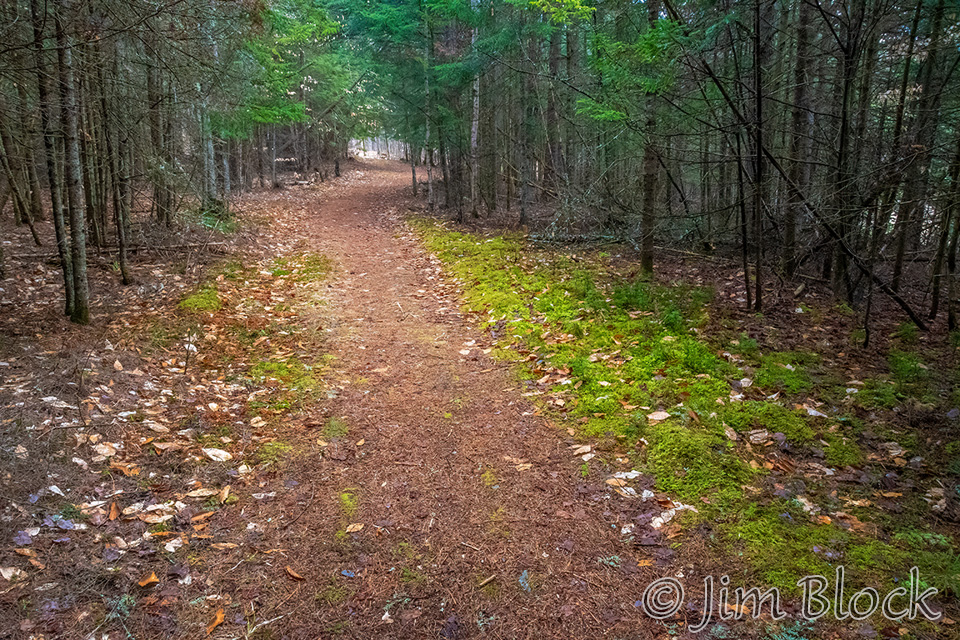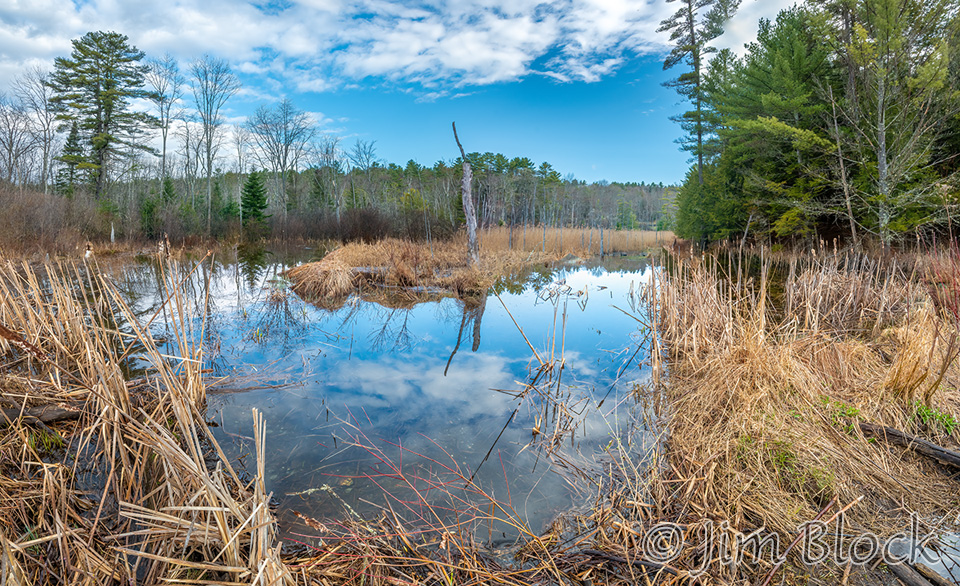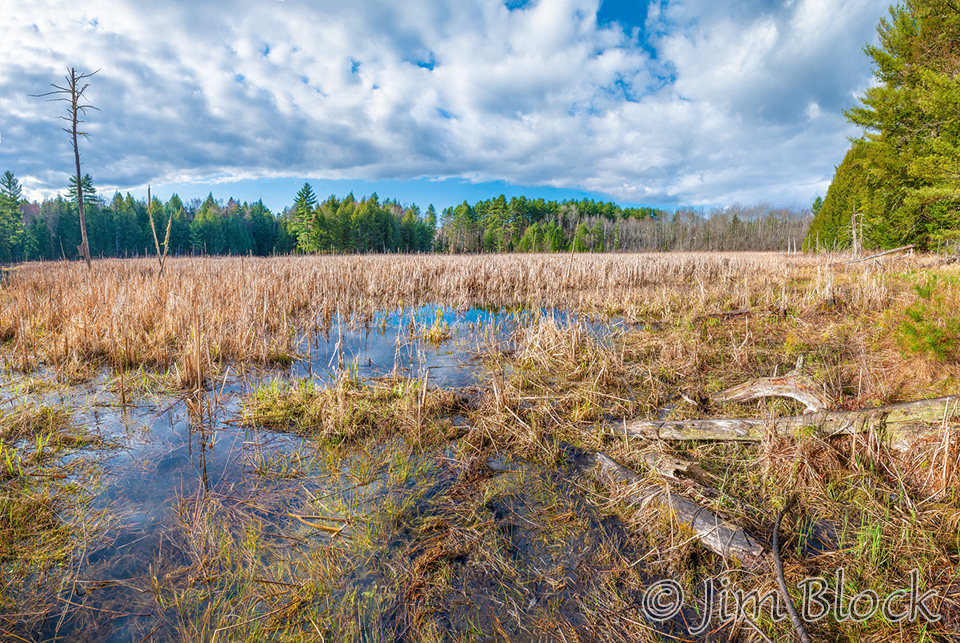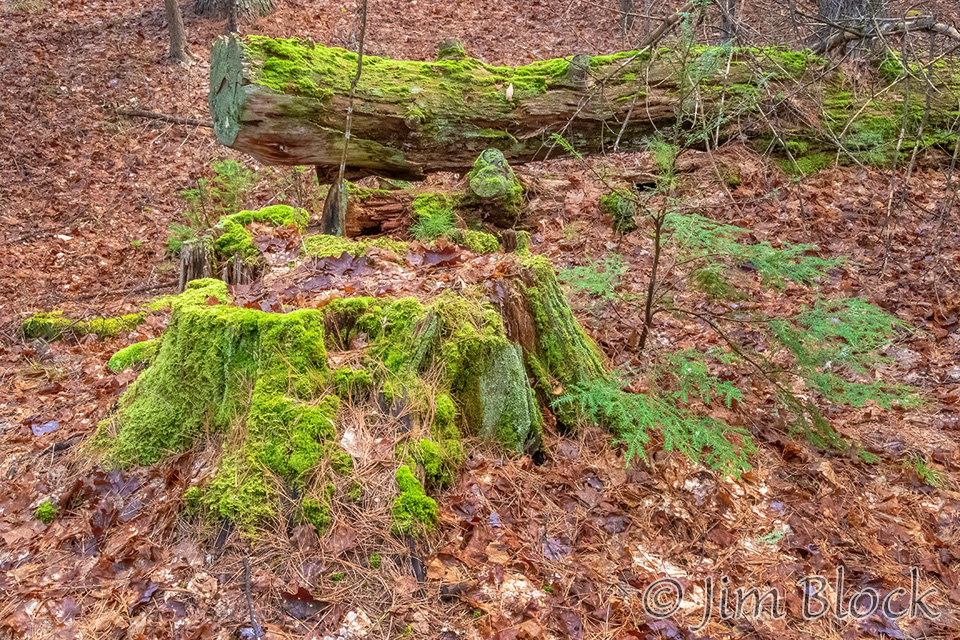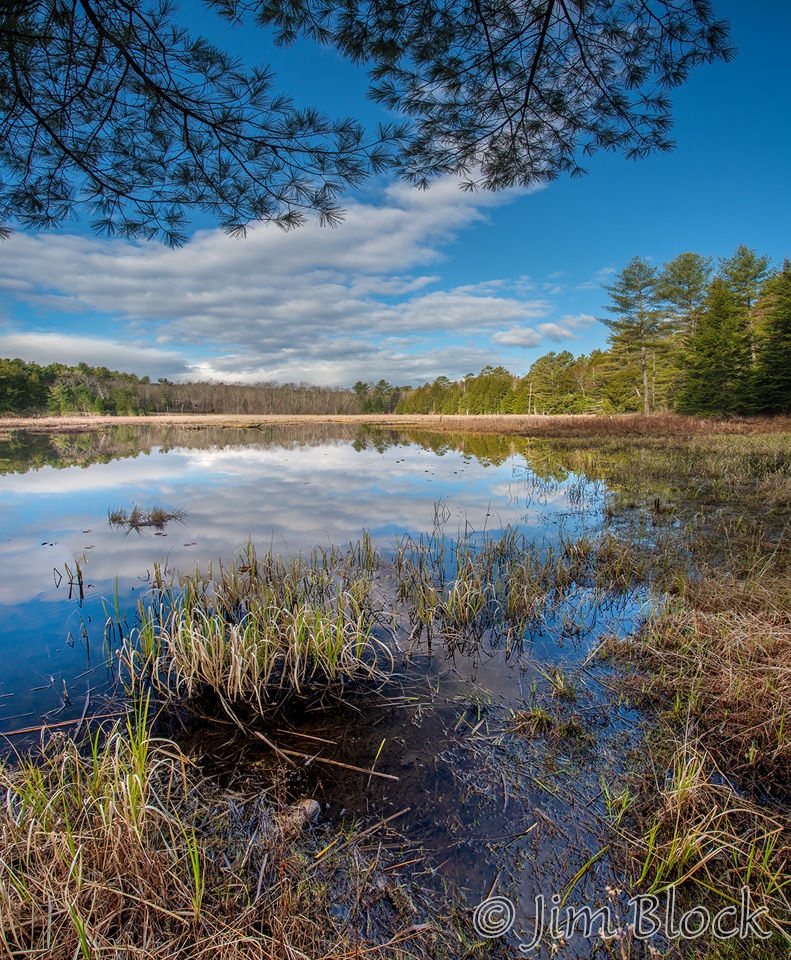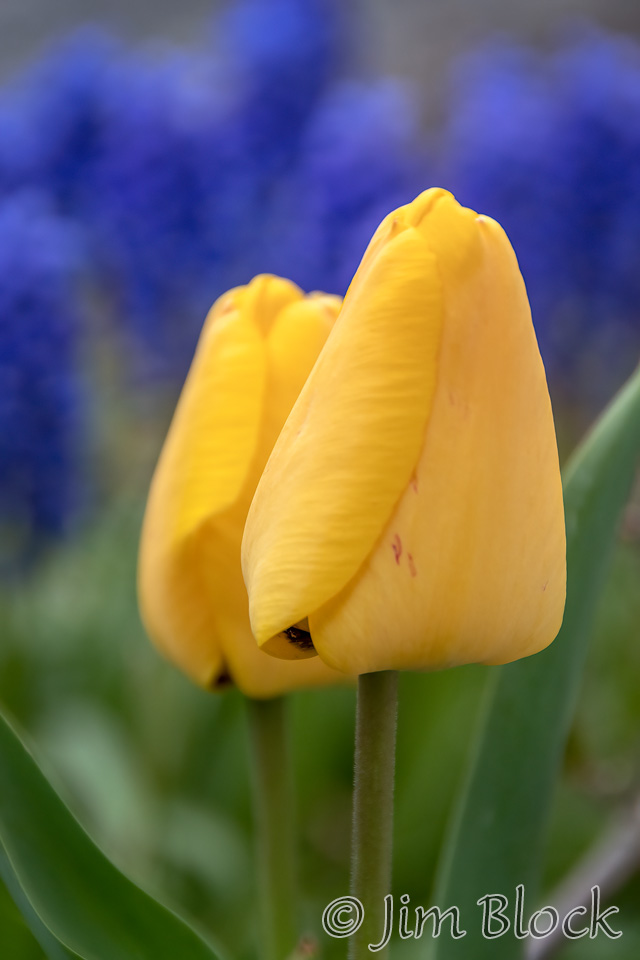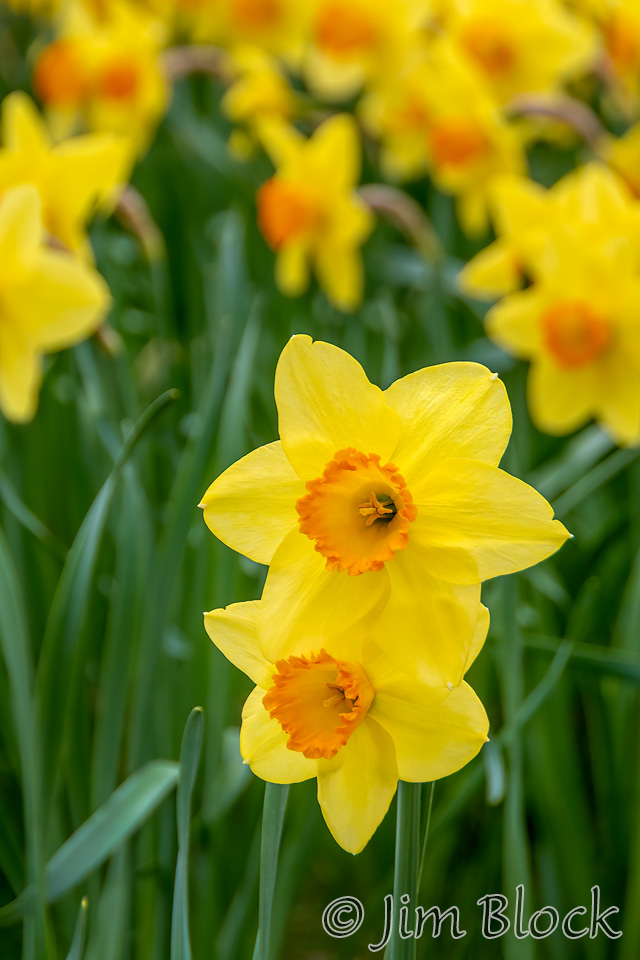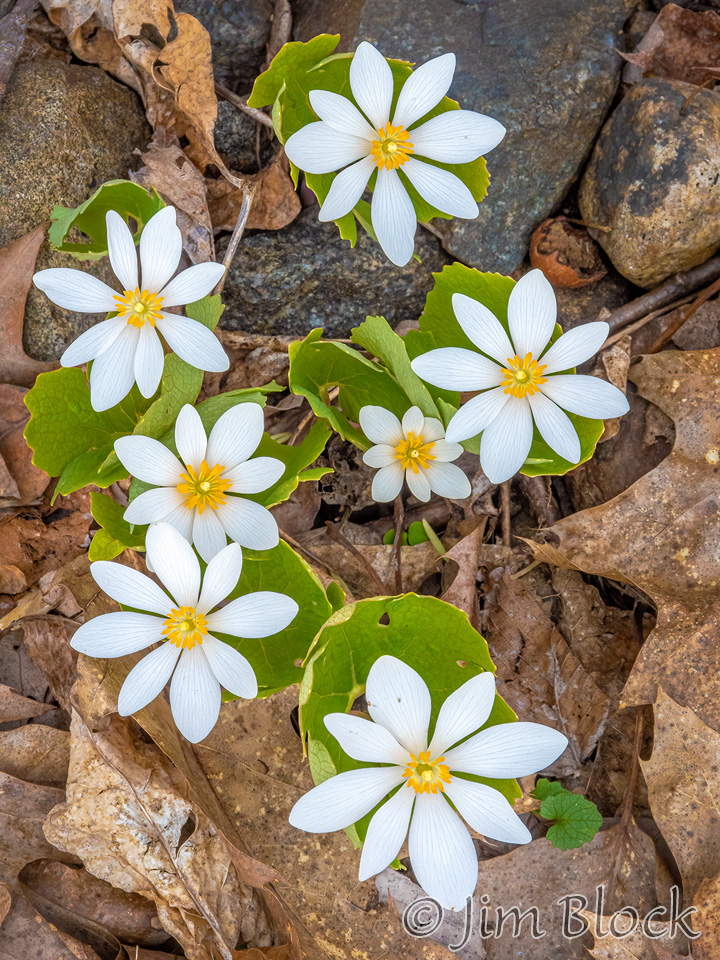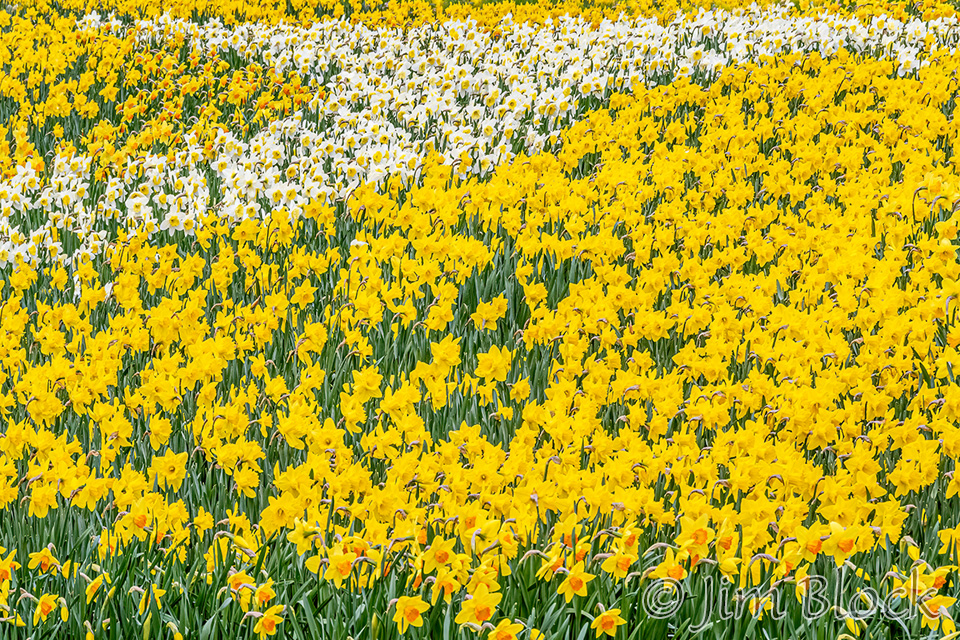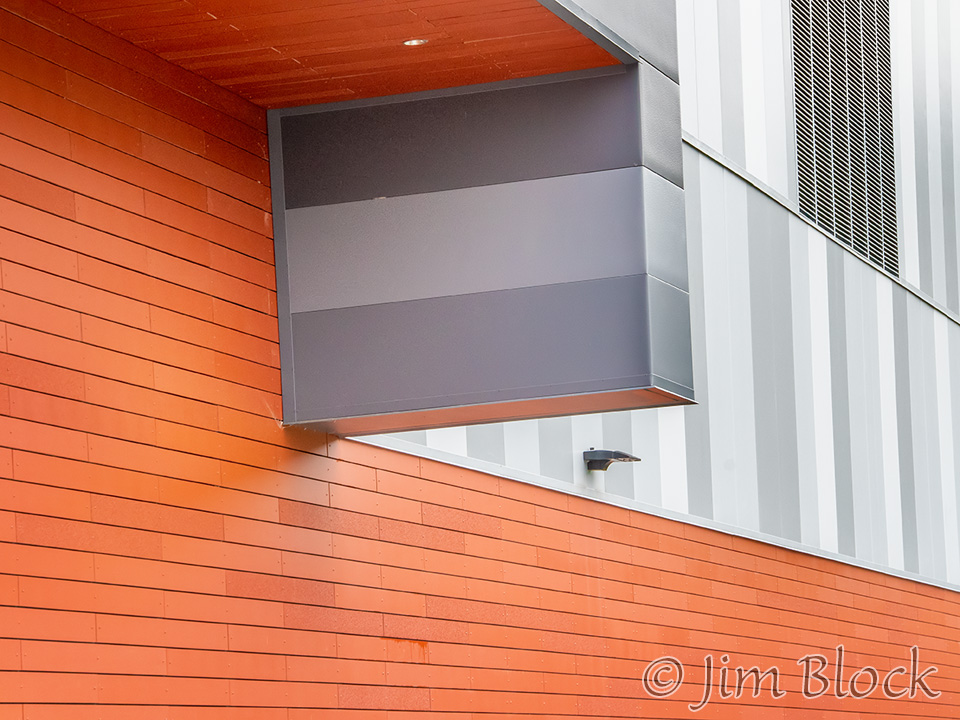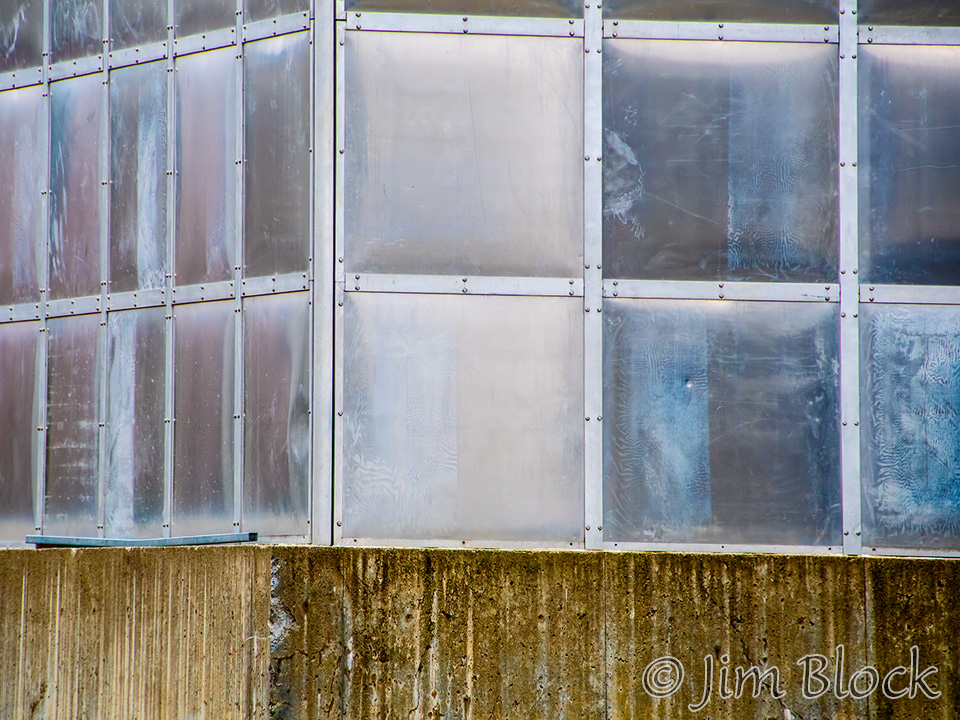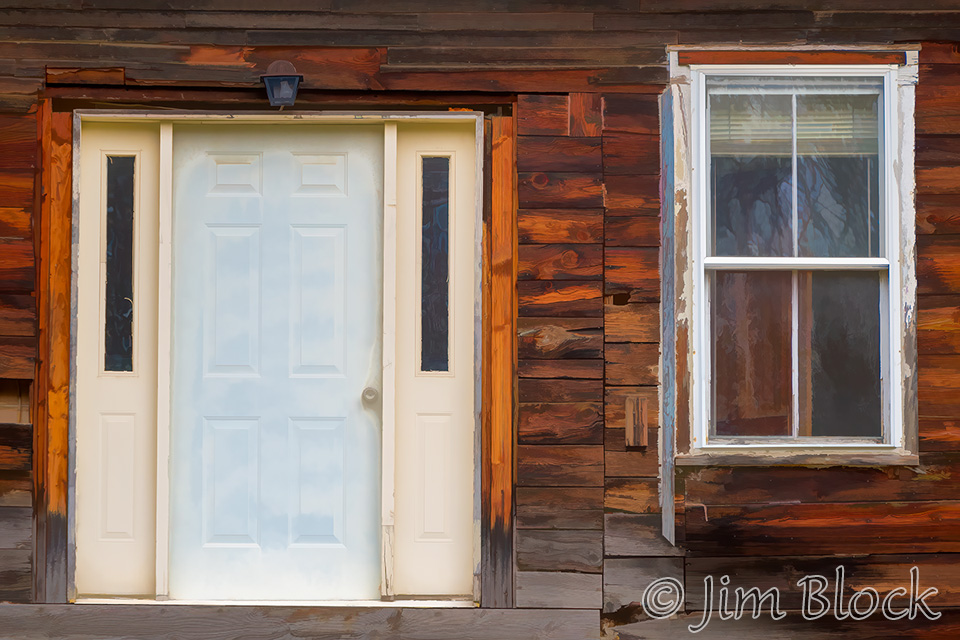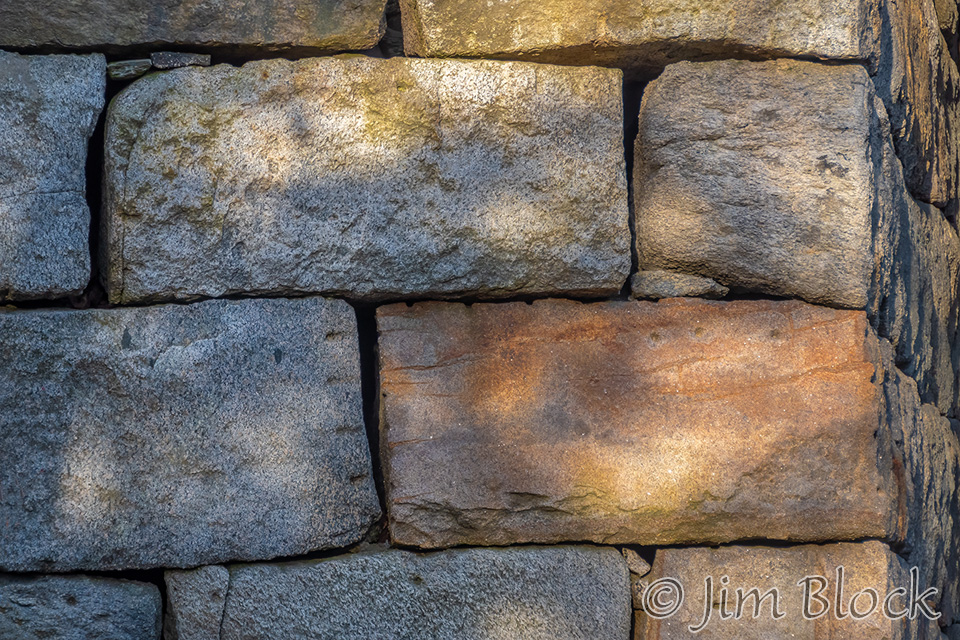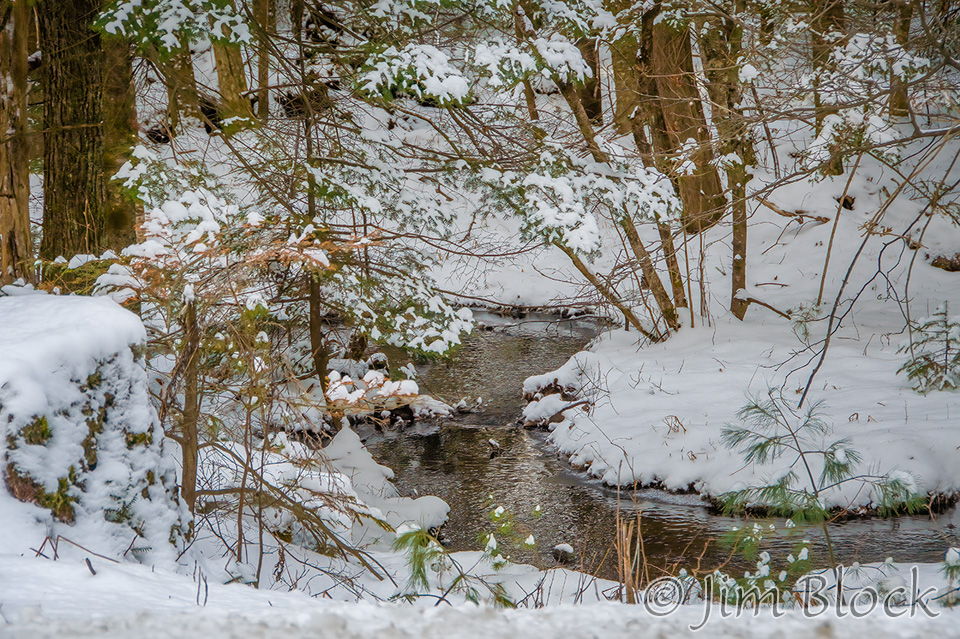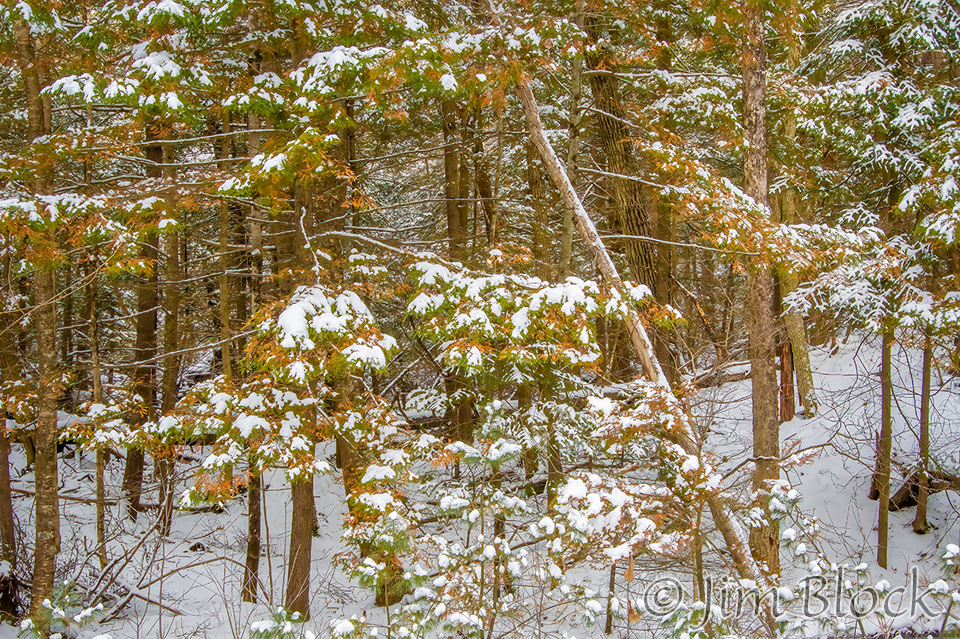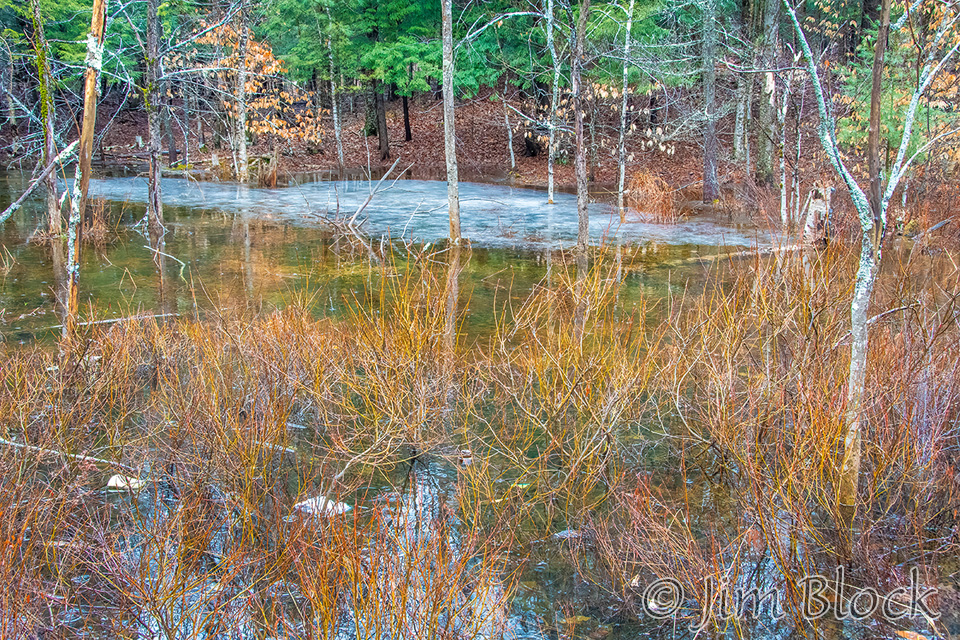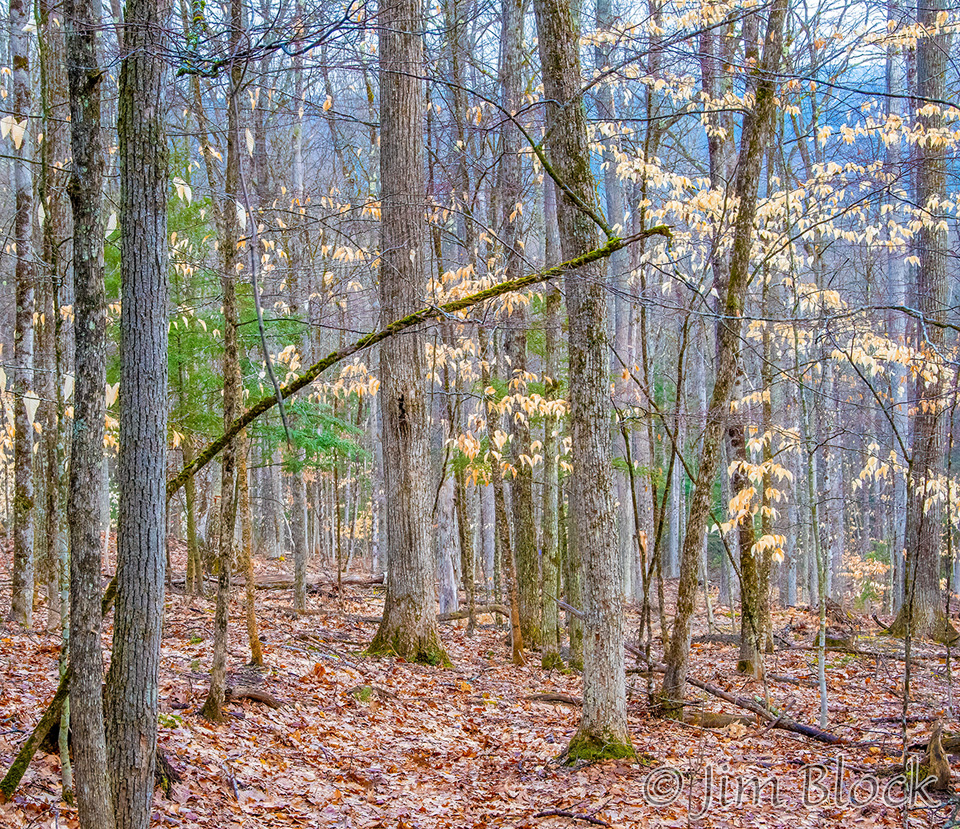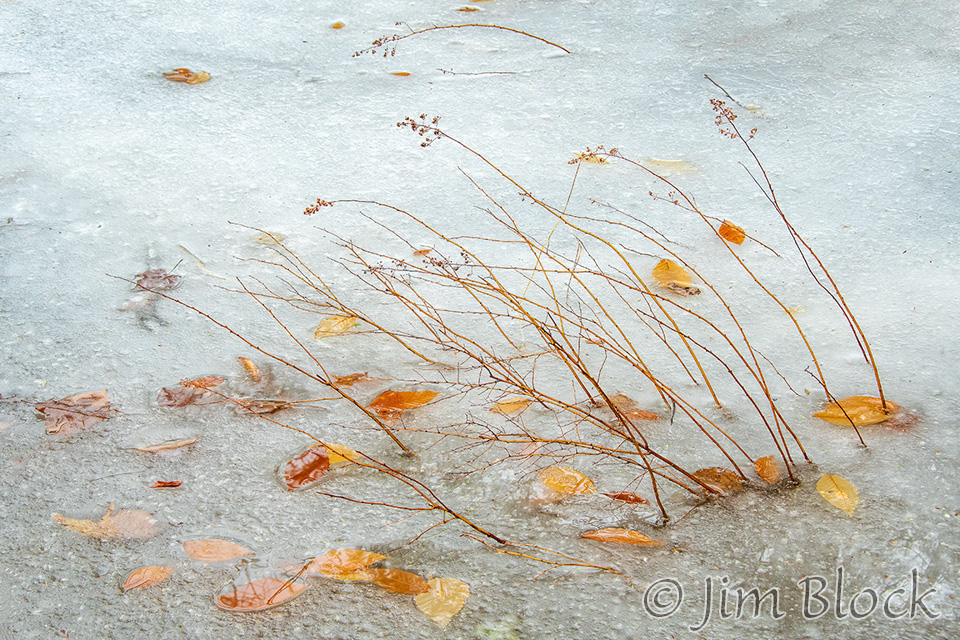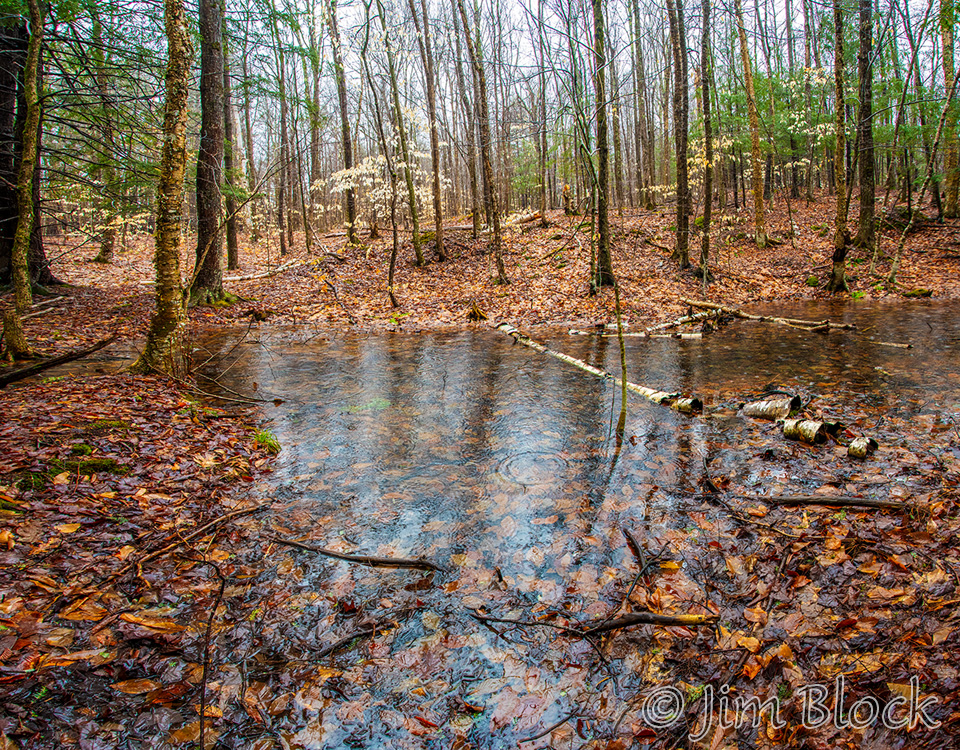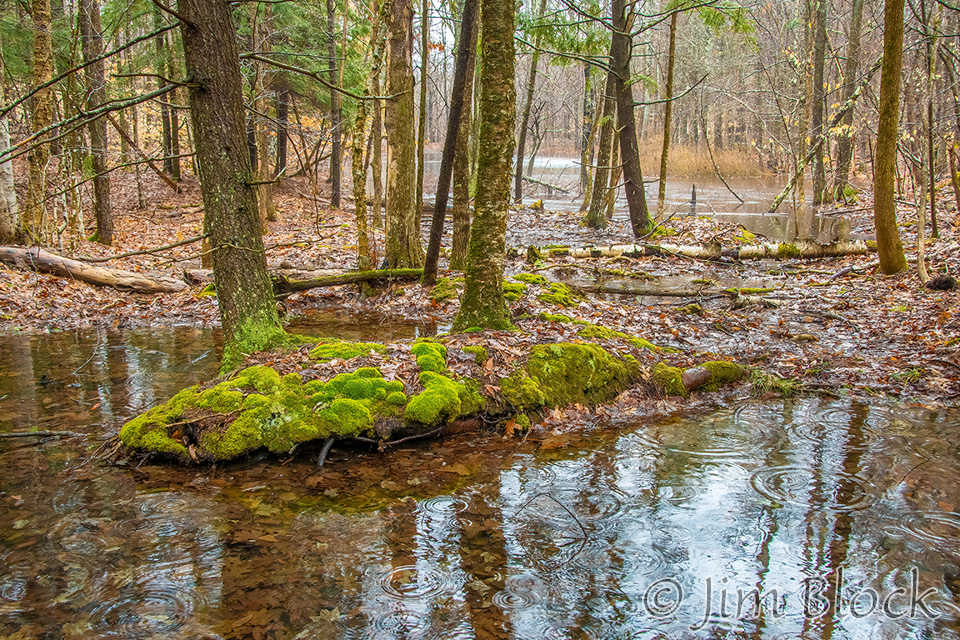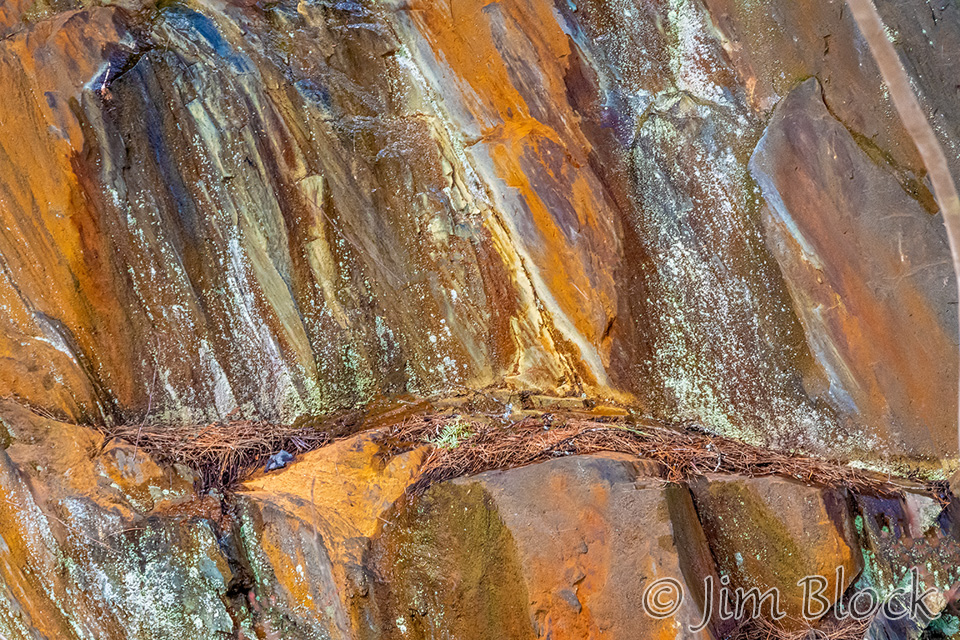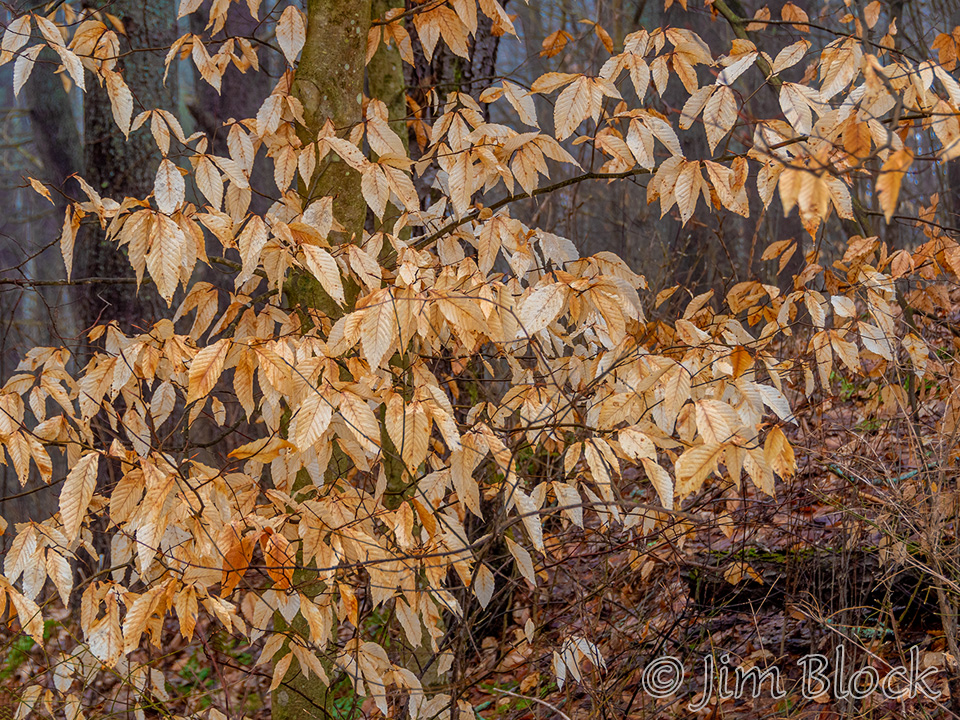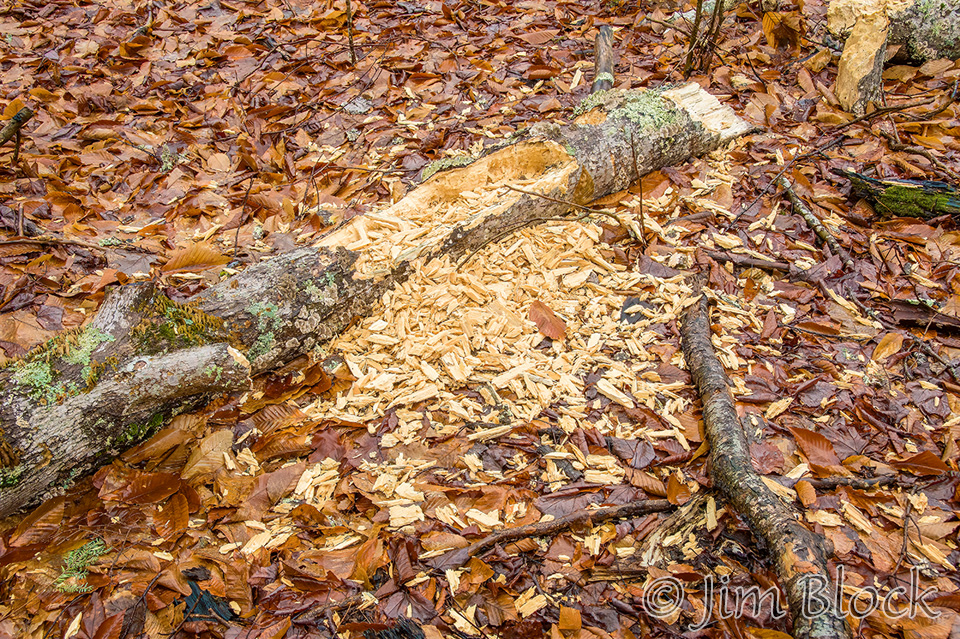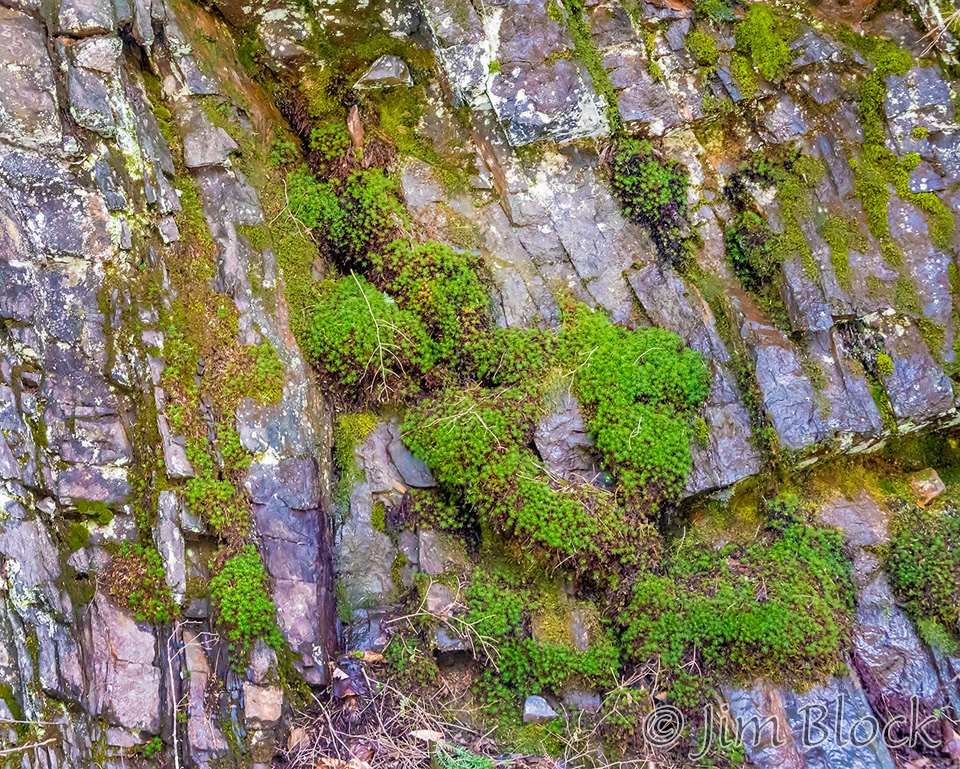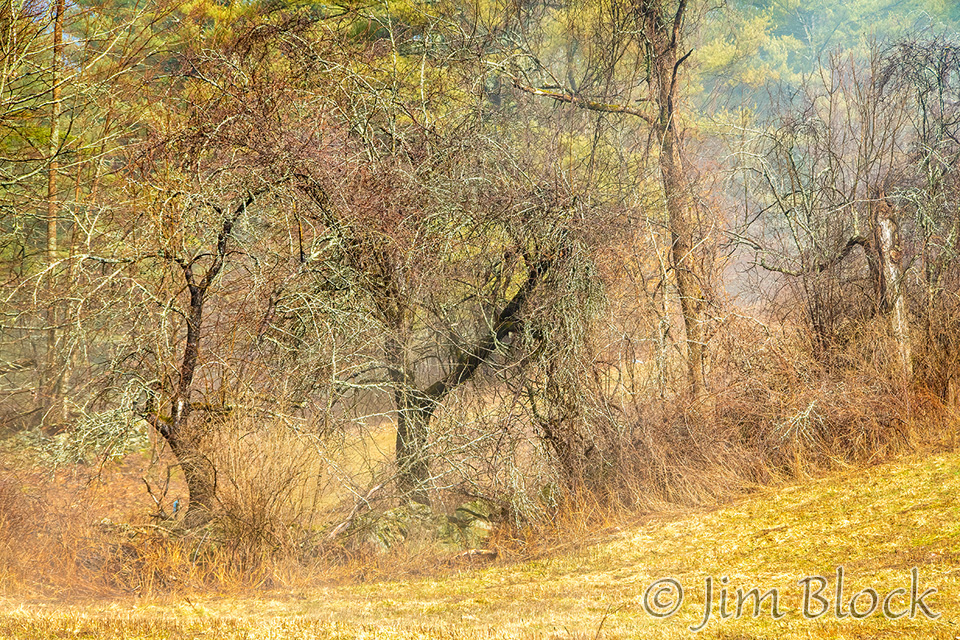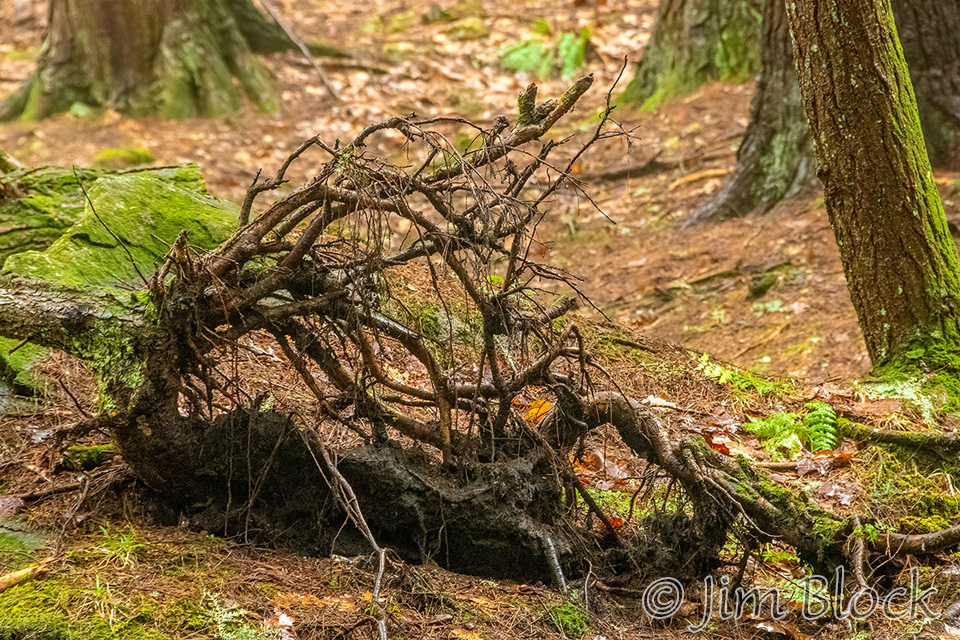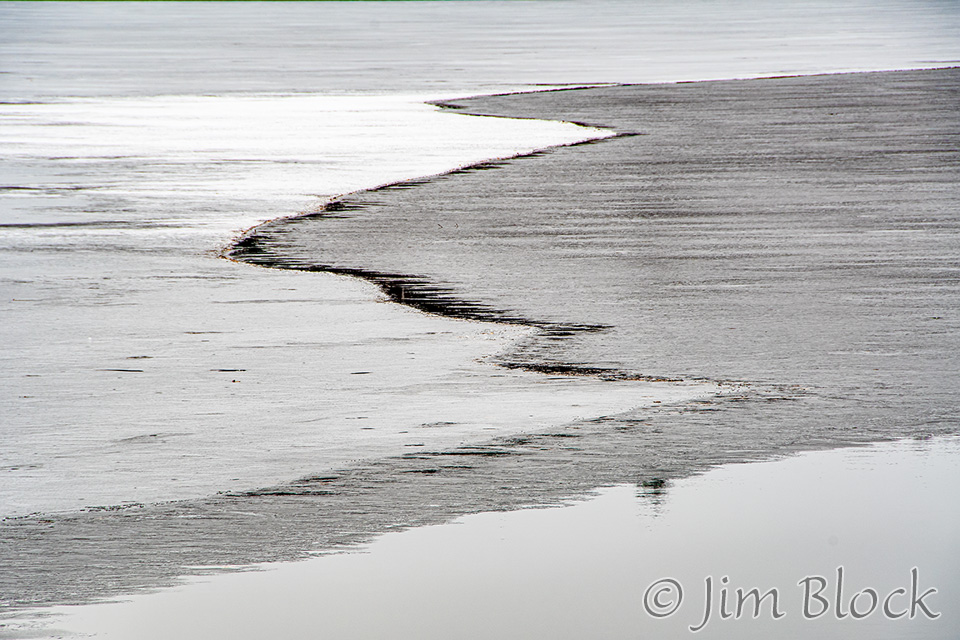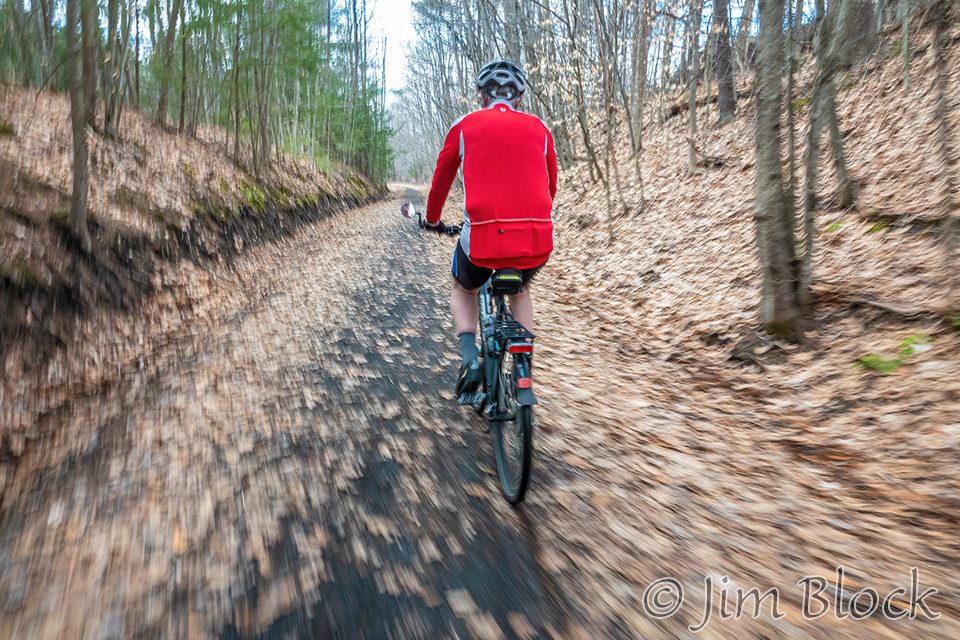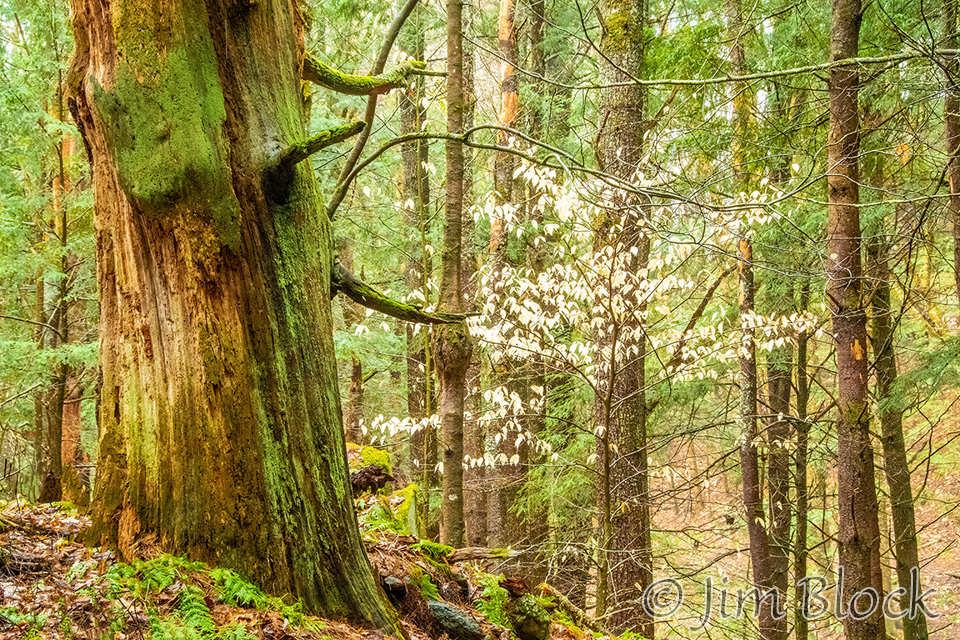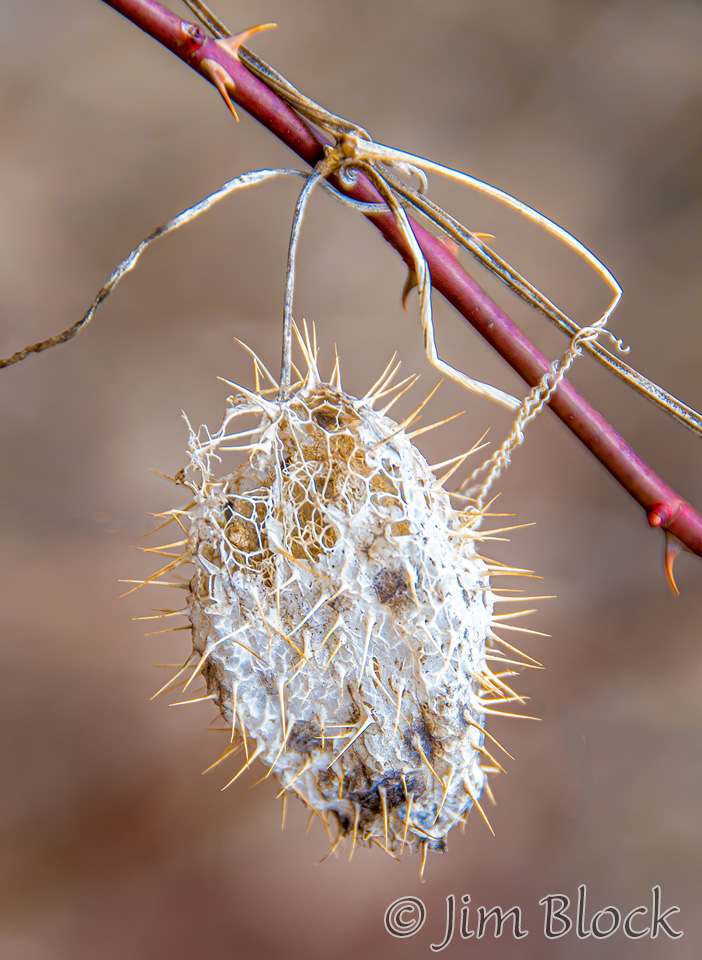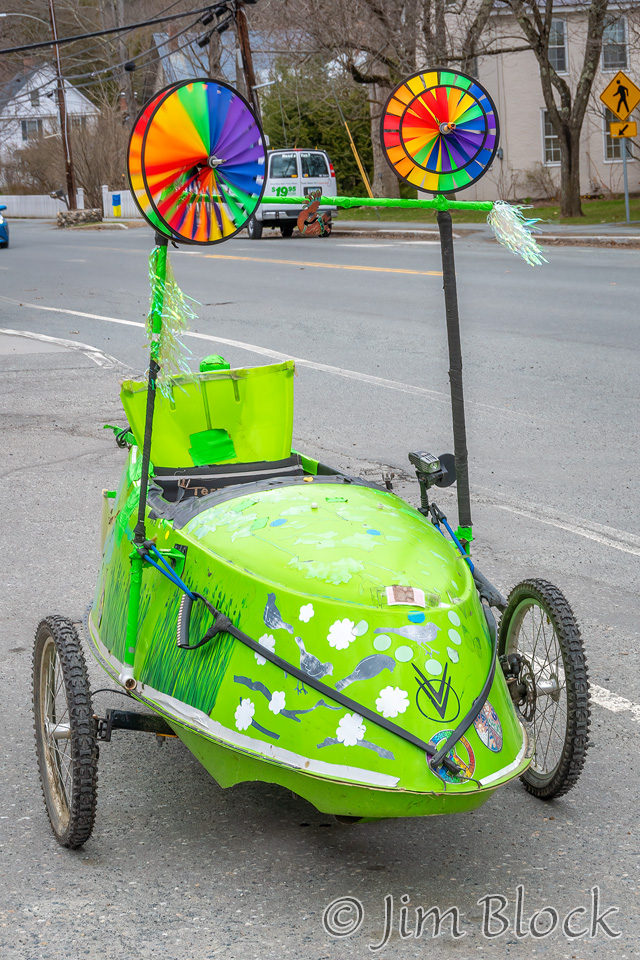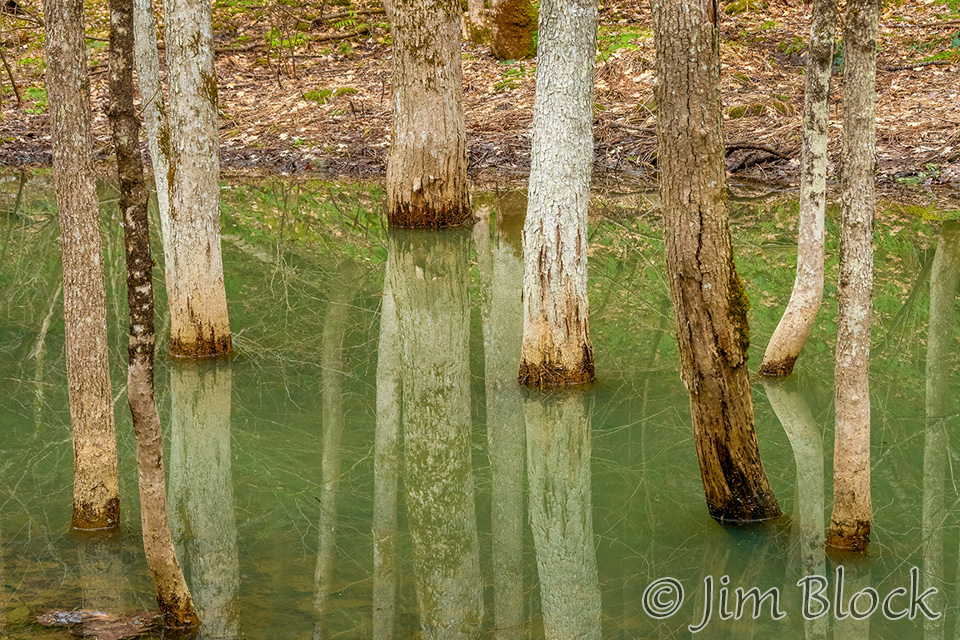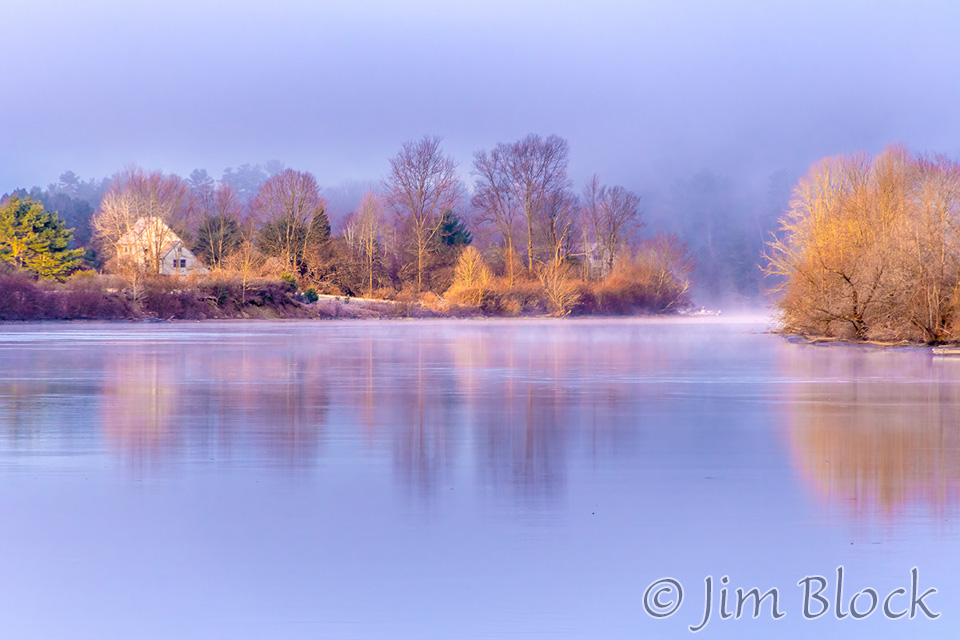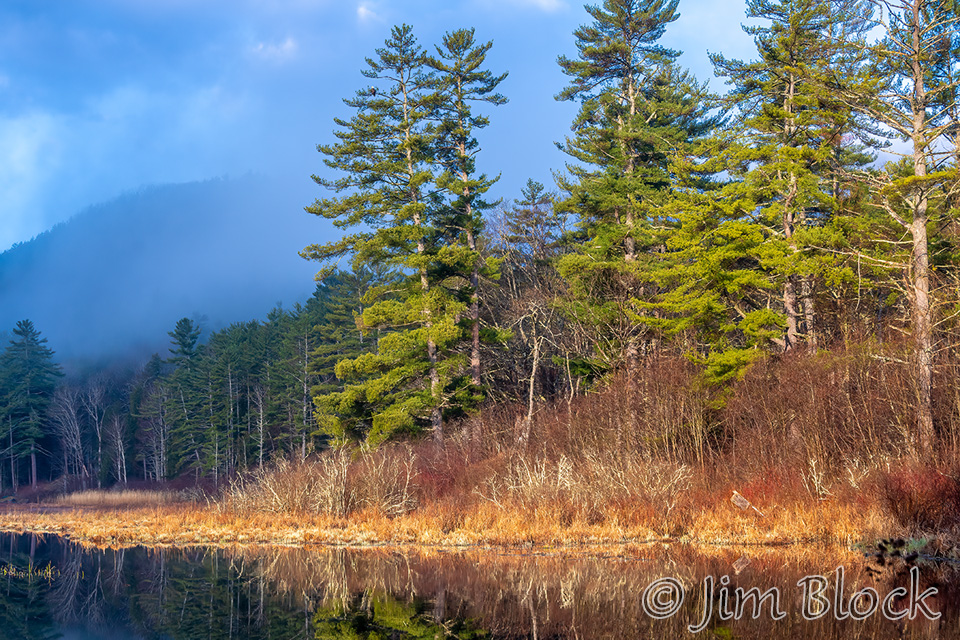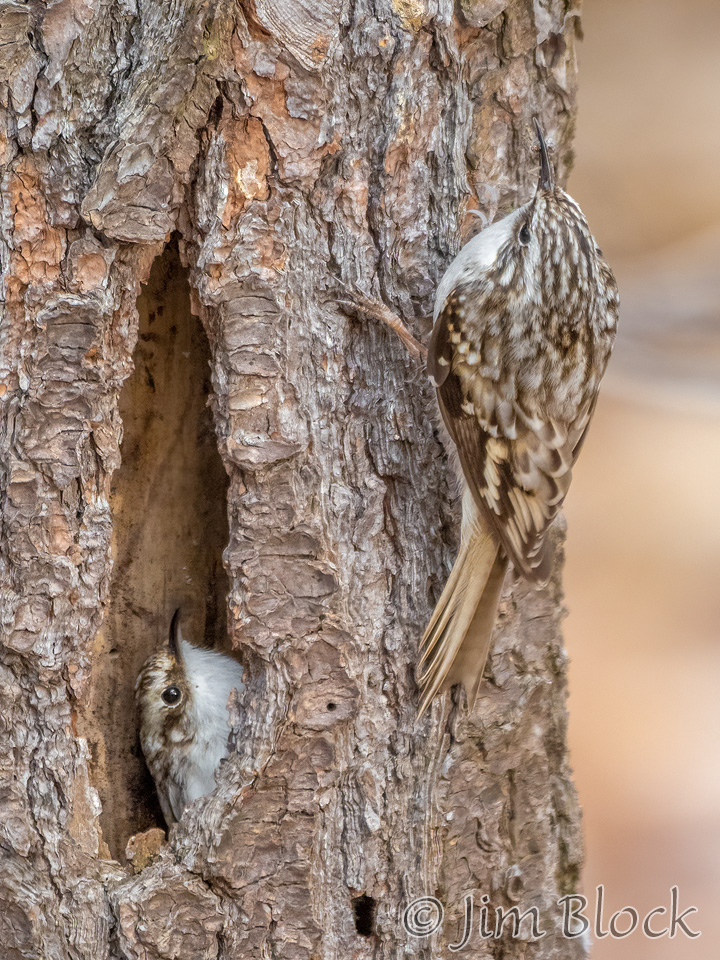
The number of bird species seen in the Upper Valley increased rapidly during the first half of spring. But the avian stars of the show were a pair of year-round residents – the diminutive Brown Creeper and the massive Bald Eagle. Both were observed at nests, but only the Brown Creepers appeared to be incubating eggs.
Considerable numbers of Yellow-rumped Warblers and Ruby-crowned Kinglets were seen and photographed. Palm Warblers also have been migrating north in some abundance. But the expected wave of migrating warblers has yet to reach the Upper Valley.
The various bird species I photographed during the last six weeks are shown in the first two-thirds of this article. The second third is devoted to nature, scenics, and man-made structures.
Brown Creepers
Brown Creepers are year-round residents that are rarely seen. These birds prefer forests with many large live trees for foraging and loose-barked trees for nesting. In the spring they typically build their nests under the bark of dead or dying conifers.
The Brown Creeper spends most of its time spiraling up tree trunks in search of insects. Up, never down. Once high in a tree, it flies to the base of the same or a nearby tree to begin a new ascent. Linda alerted me to the presence of a nest. I thank her very much for doing so.
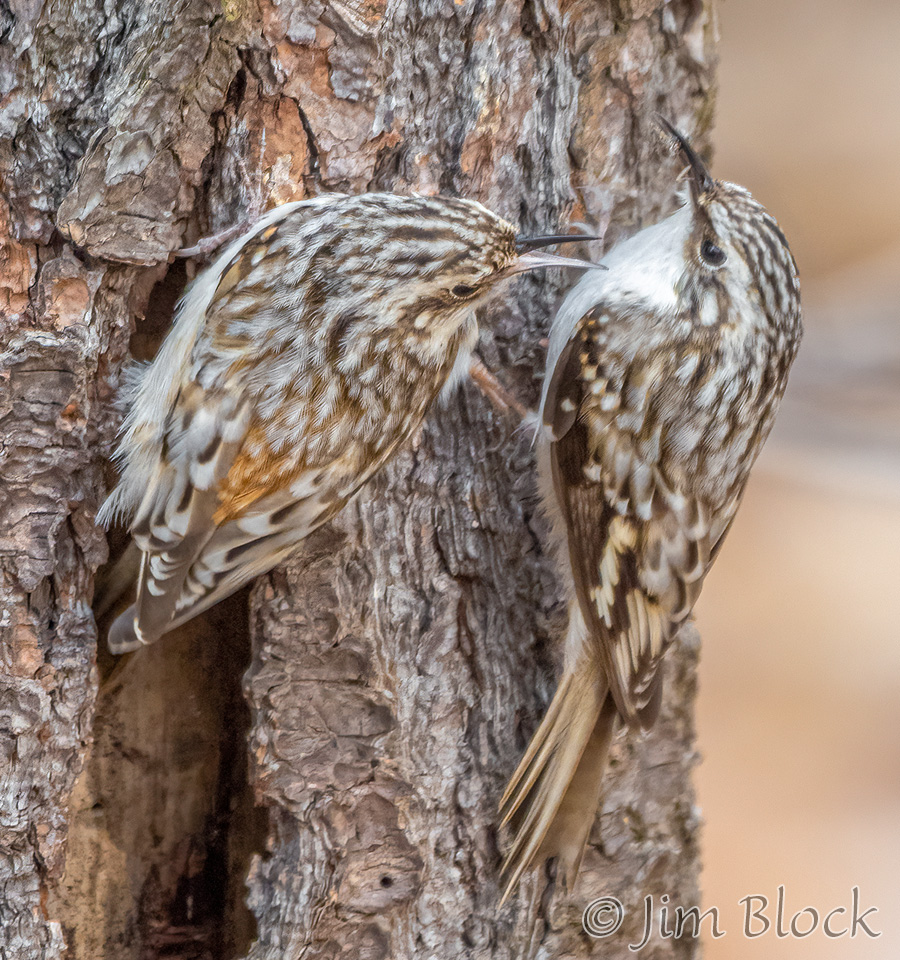
During two visits, I spent four hours waiting in the cold for several five-second-long bursts of activity when one returned to the nest or both were briefly at the nest for food exchange. When one left the nest before the other had returned, it departed in the blink of an eye — too fast for me to ready my camera and shoot. When sitting on its 5 to 6 eggs, the bird is completely hidden under the bark. For scale, these birds are about 5 inches long and weigh 1/4 ounce.
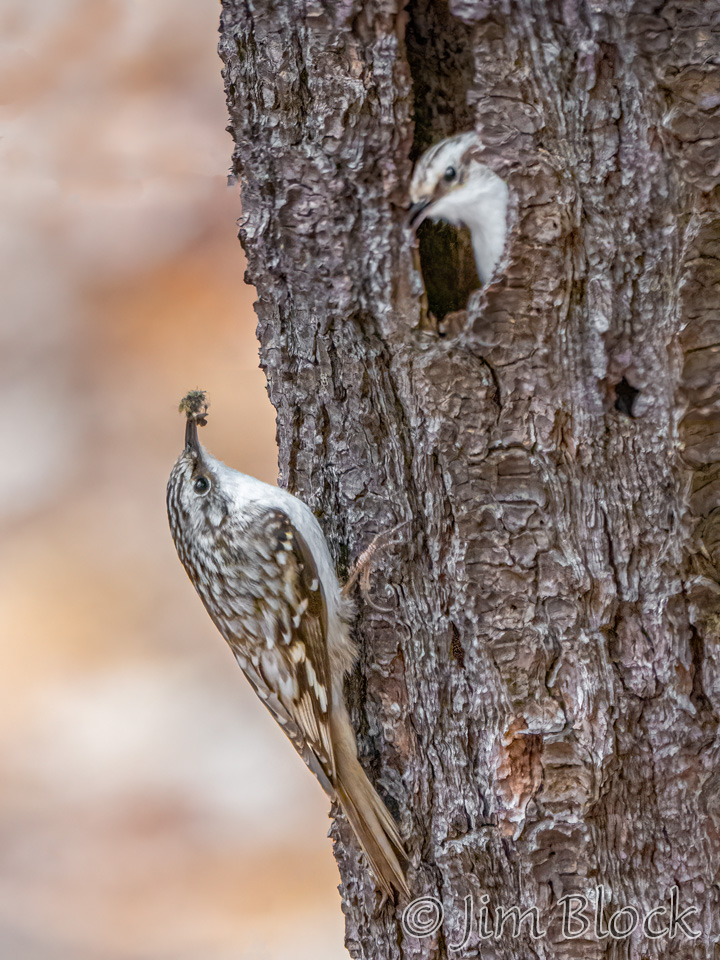
“A dainty, delicate bird.
Looks like a piece of loose bark.
Colored like a dried leaf, brown and streaked, light underneath; ochre band on wings.
Sounds like an errant hearing aid, high and thin, barely audible.
Louder than a thought, quieter than a twittering beech leaf.”
— Ted Levin
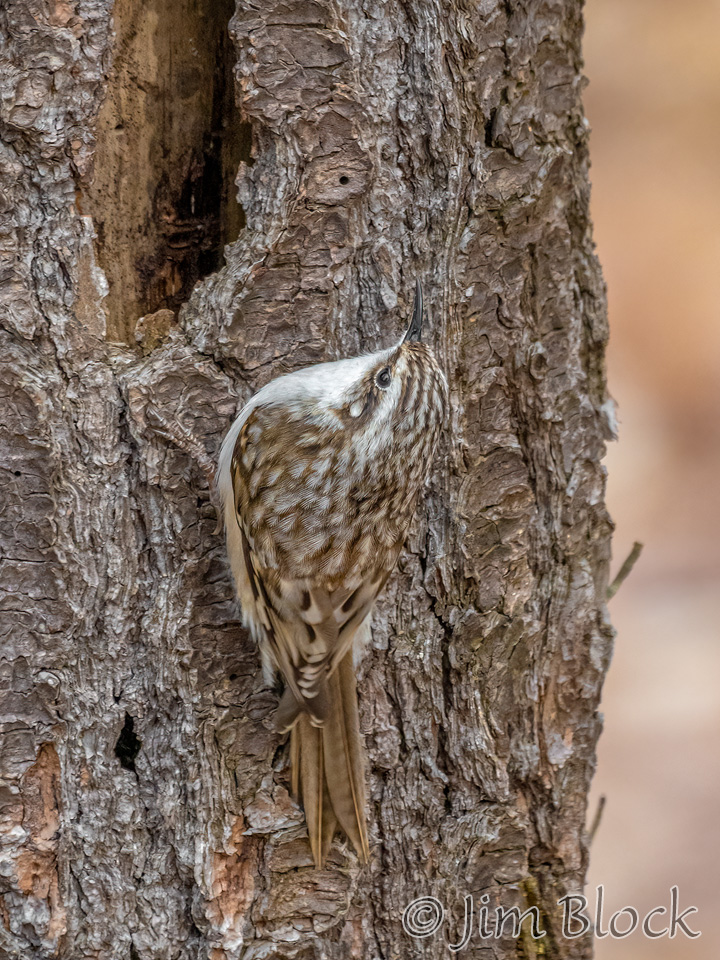
Here are a few more photos I took of this pair of charming birds this spring. If you would like to see more, you can look at a previous blog post, “Tribute to the Brown Creeper”.
Bald Eagles
I again visited the pair of Bald Eagles that are building the new nest I found and showed in my last blog post.
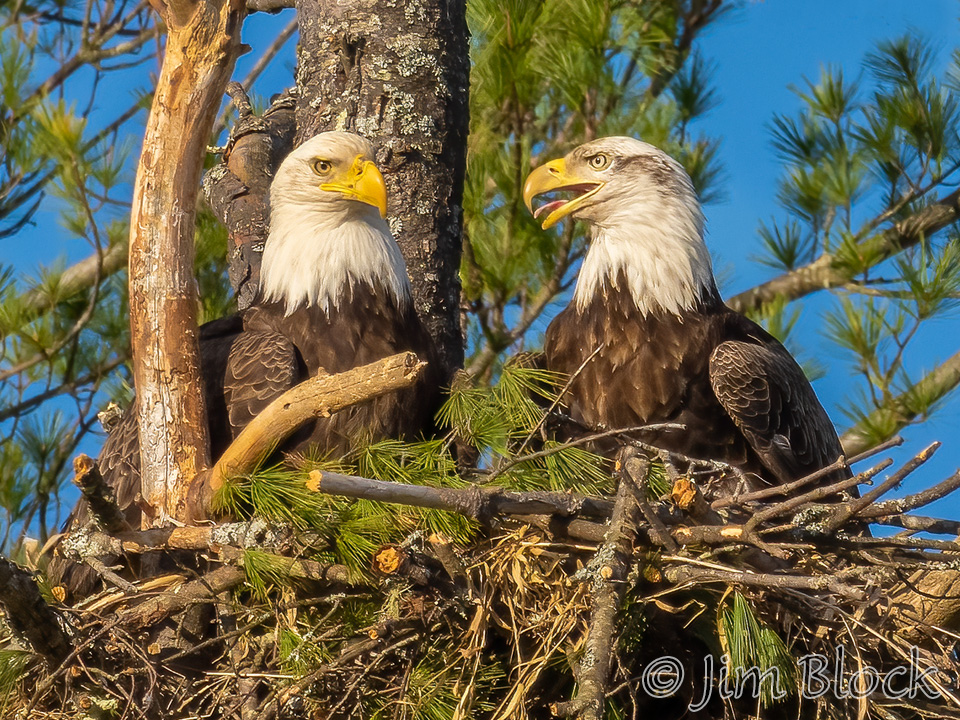
The eagle on the right is not fully mature as indicated by the black on its head.
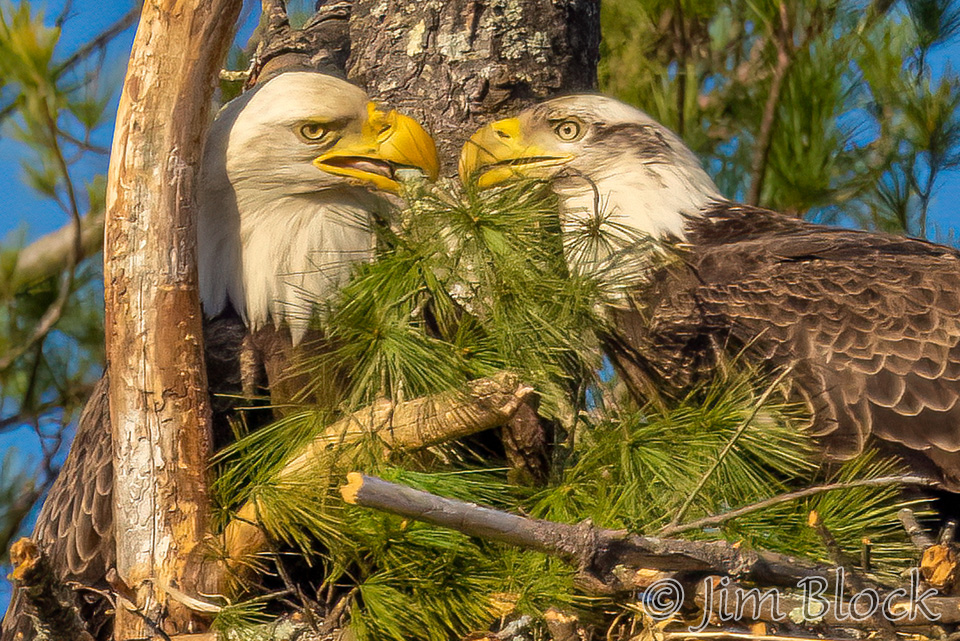
One would fly off and return not long after carrying more material for the nest.
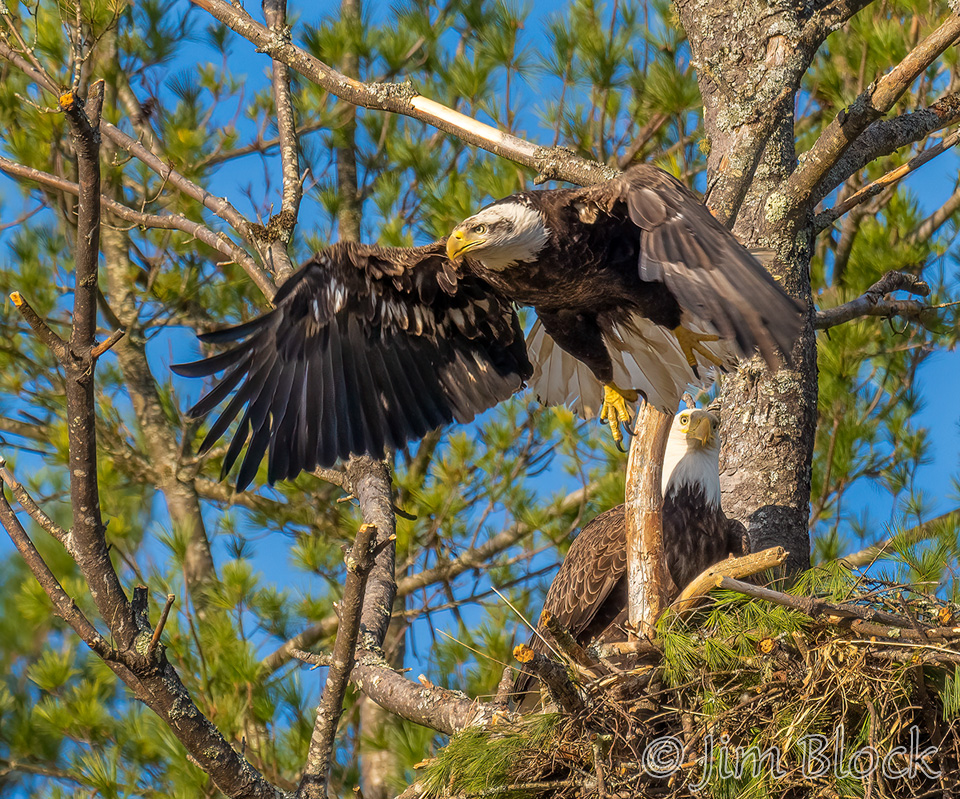
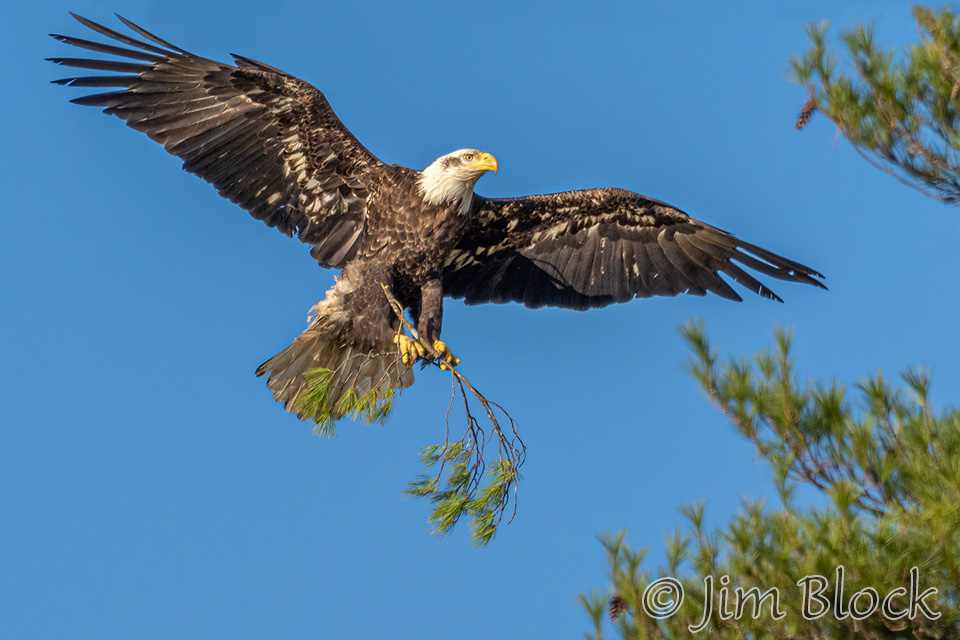
They would take turns gathering and building. Here is the older eagle returning with a stick.
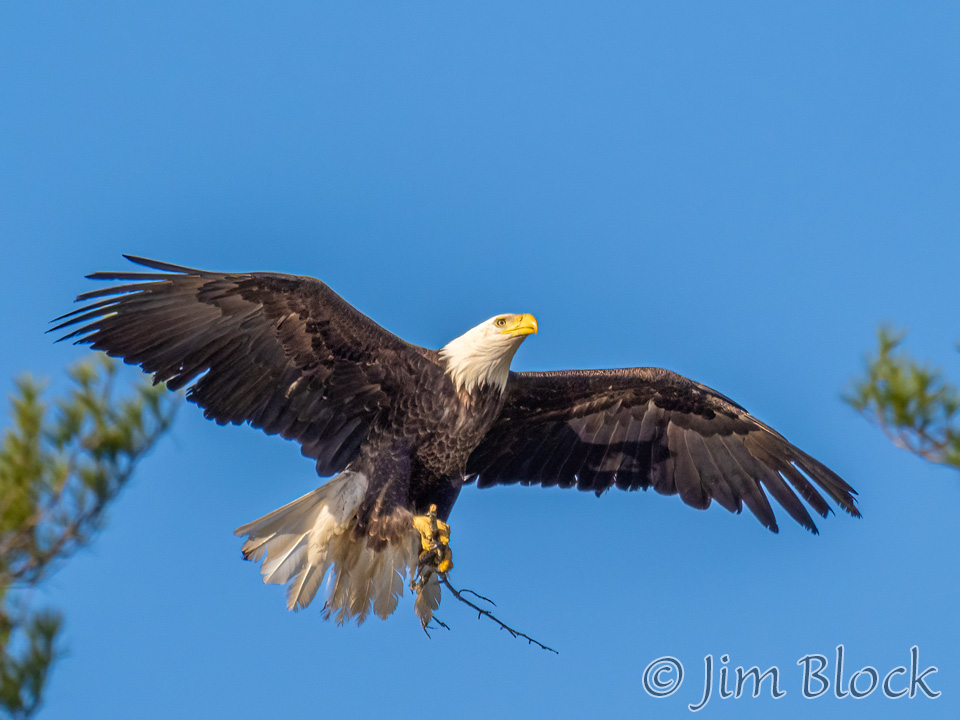
They are large, magnificent birds. I felt privileged to be able to spend some time with them. Perhaps next year they will be ready for bringing more eagles into the world.
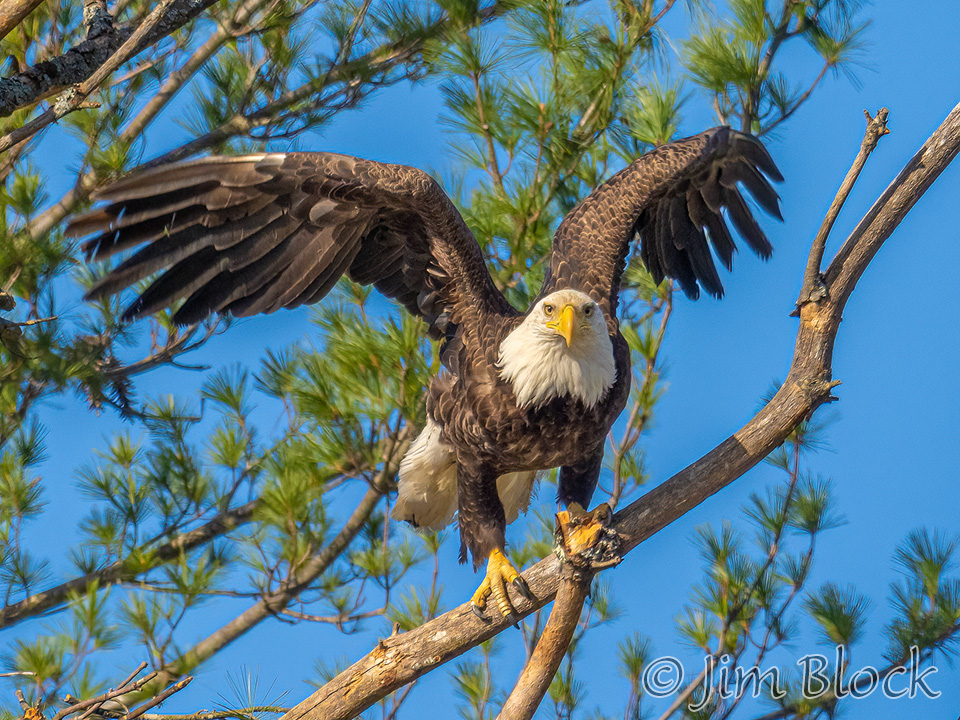
Below are many more photos I took of this pair of eagles.
Yellow-rumped Warblers
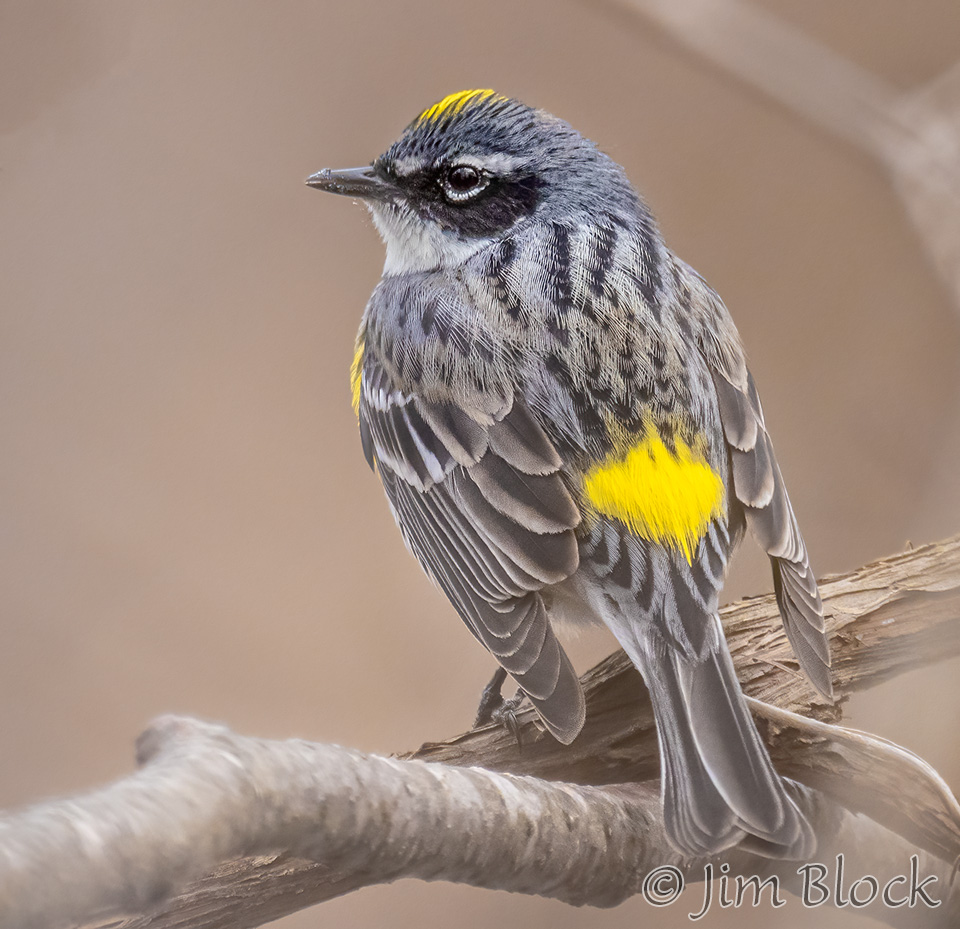
The appropriately named Yellow-rumped Warblers have been very plentiful lately. I even was able to photograph one with my iPhone as seen in the photo below.
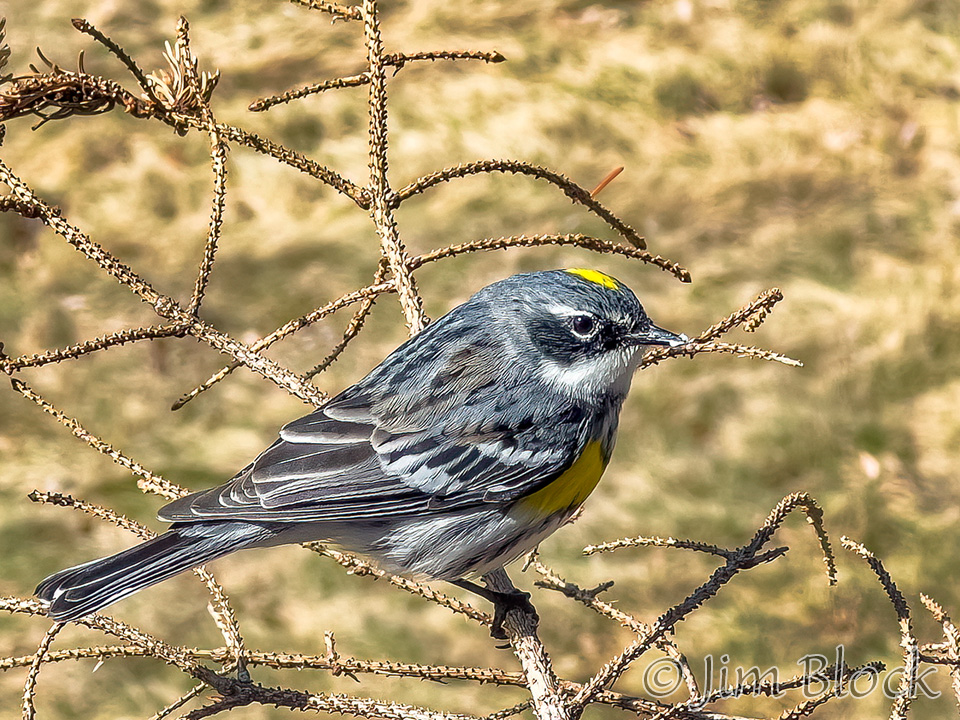
I found this species along the Rail Trail in Lebanon, at Campbell Flat in Norwich, in Enfield near several ponds, and even in our Etna yard. Here are some of the photos I took.
Black-and-White Warblers
I found Black-and-White Warblers along the Rail Trail in Lebanon. Fast-moving Black-and-white Warblers act like nuthatches, foraging for insects in the bark of trees by creeping up, down, and around branches and trunks. They nest on the ground at the bases of trees in the Upper Valley and elsewhere.
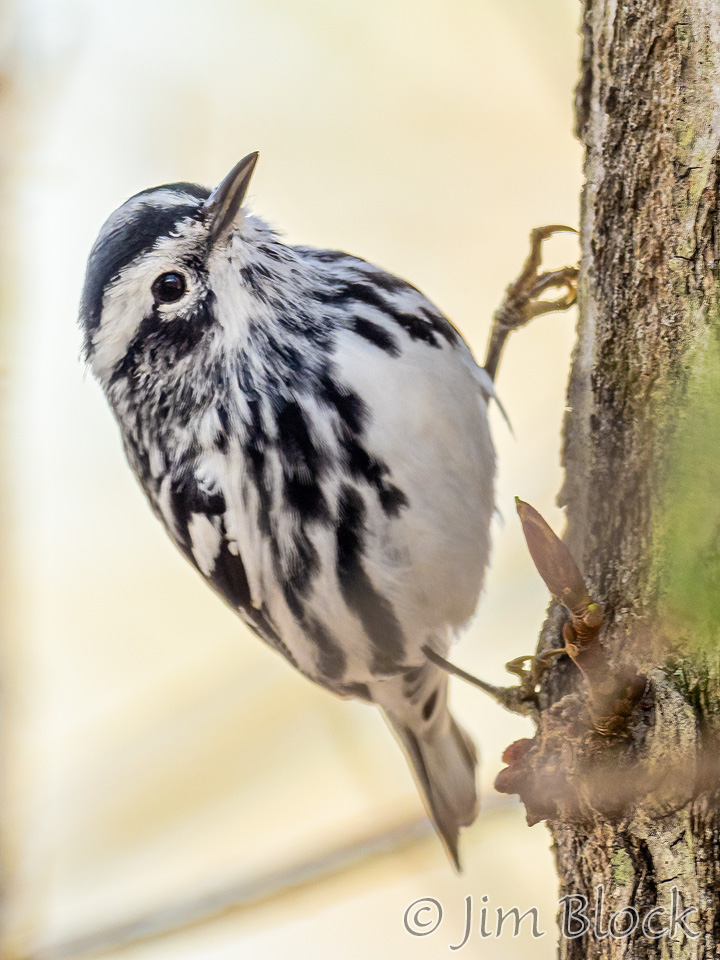
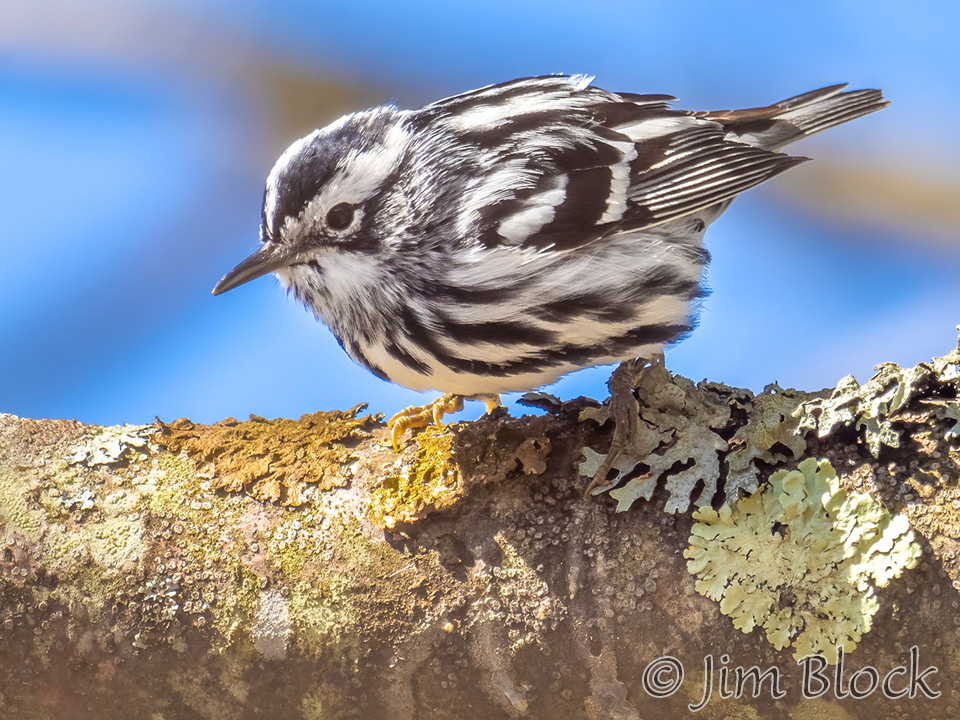
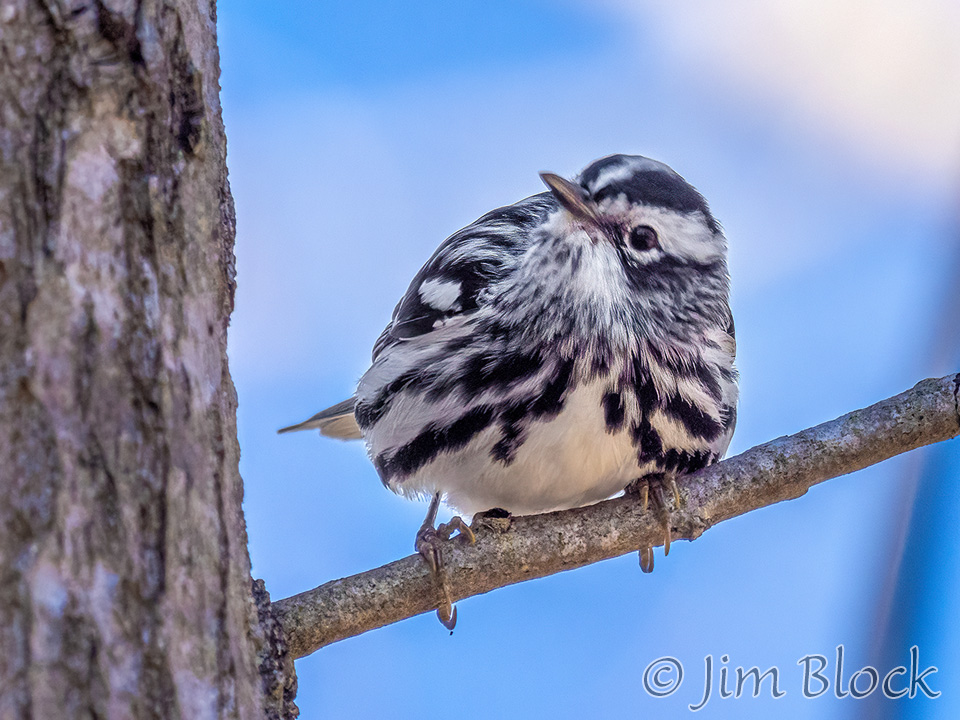
Palm Warblers
A beautiful species that normally nests farther north, Palm Warblers were seen and photographed in Lebanon, but most particularly at Campbell Flat in Norwich on two separate occasions.
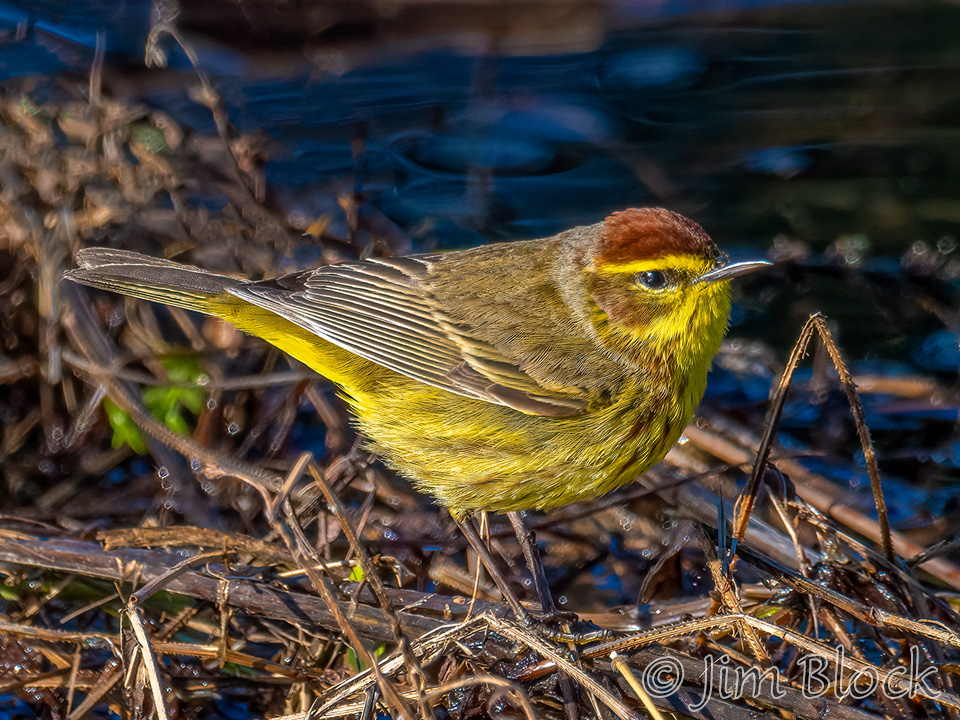
Below are a half dozen other photos of Palm Warblers from the first half of spring.
Tree Swallows
Many Tree Swallows were nesting at Paradise Park in Windsor. Not much else was around the morning I visited, so I spent some time photographing them flying around their boxes. Here is a composite of six photos of a single bird.
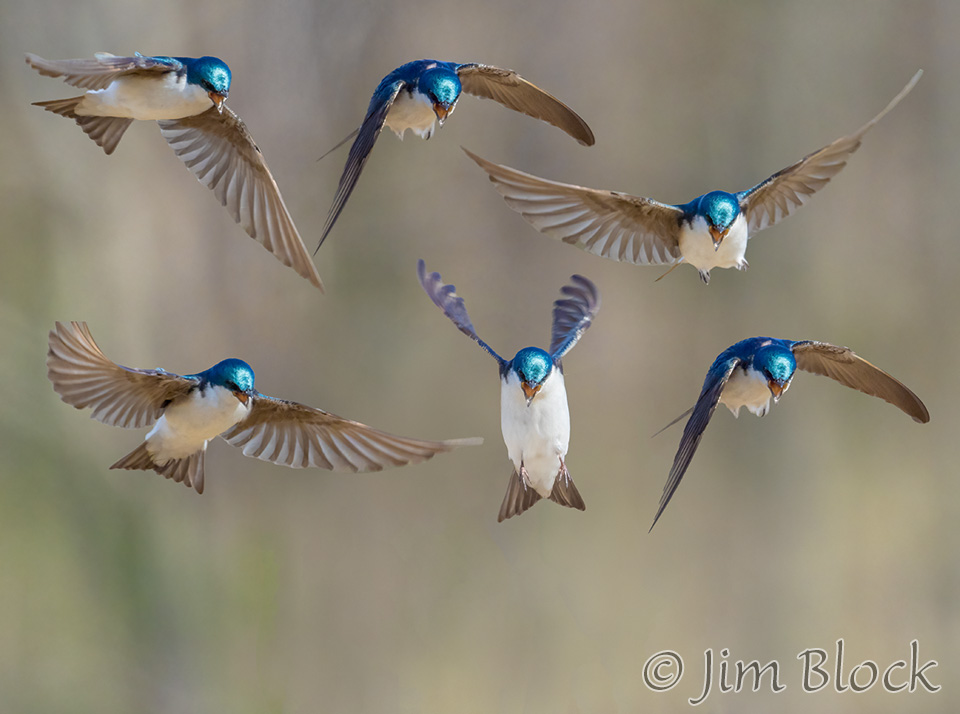
Below are three more photos of these very fast and agile fliers.
Canada Goose
While hiking around Paradise Park, a Canada Goose took off directly at me.
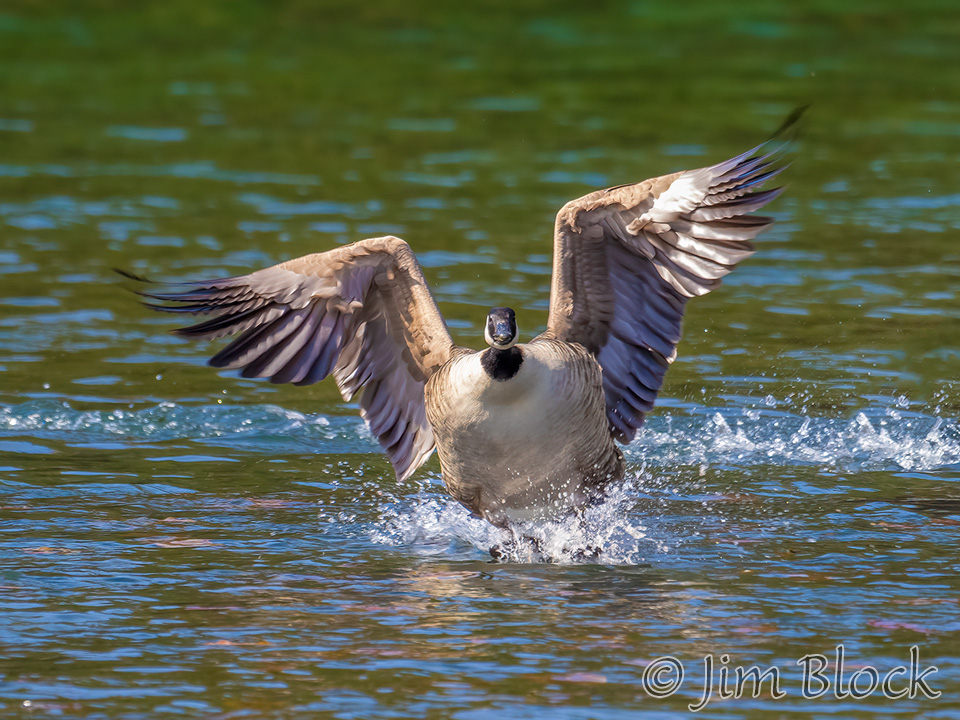
Ruby-crowned Kinglets
I photographed Ruby-crowned Kinglets in Lebanon, Norwich, and Rumney. Here is one from each location.
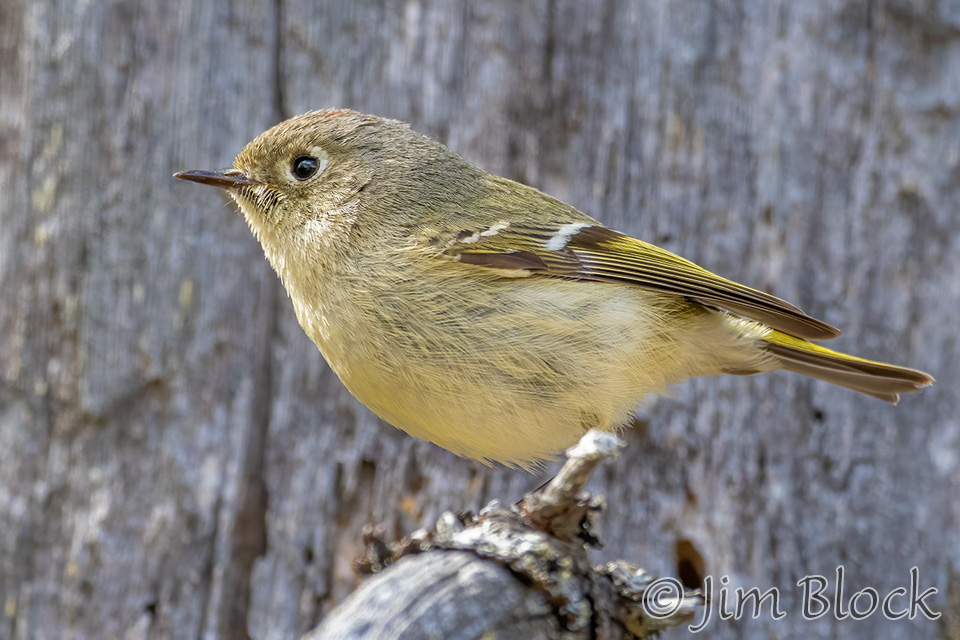
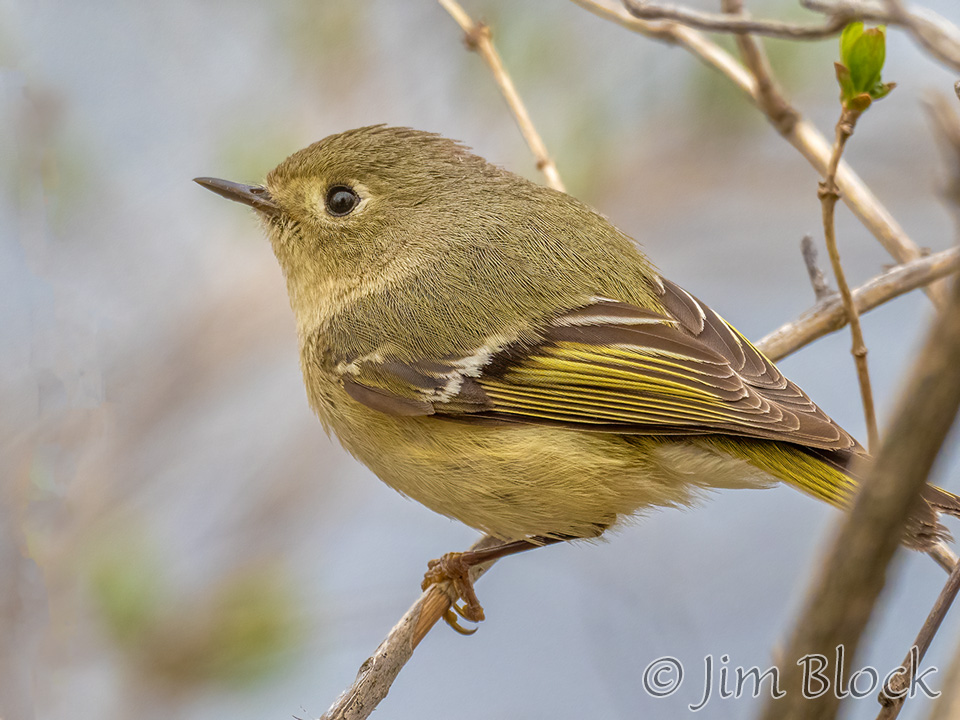
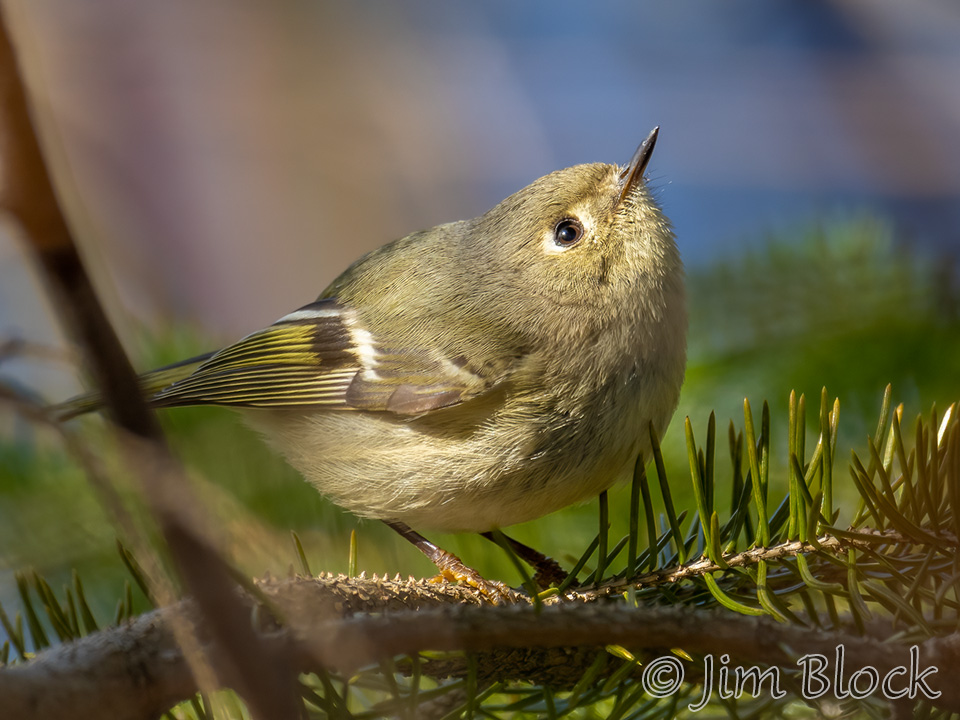
Common Snipe
Jeannie helped me spot a very camouflaged Common Snipe in the flooded field at Campbell Flat. It was far away and hard to find.
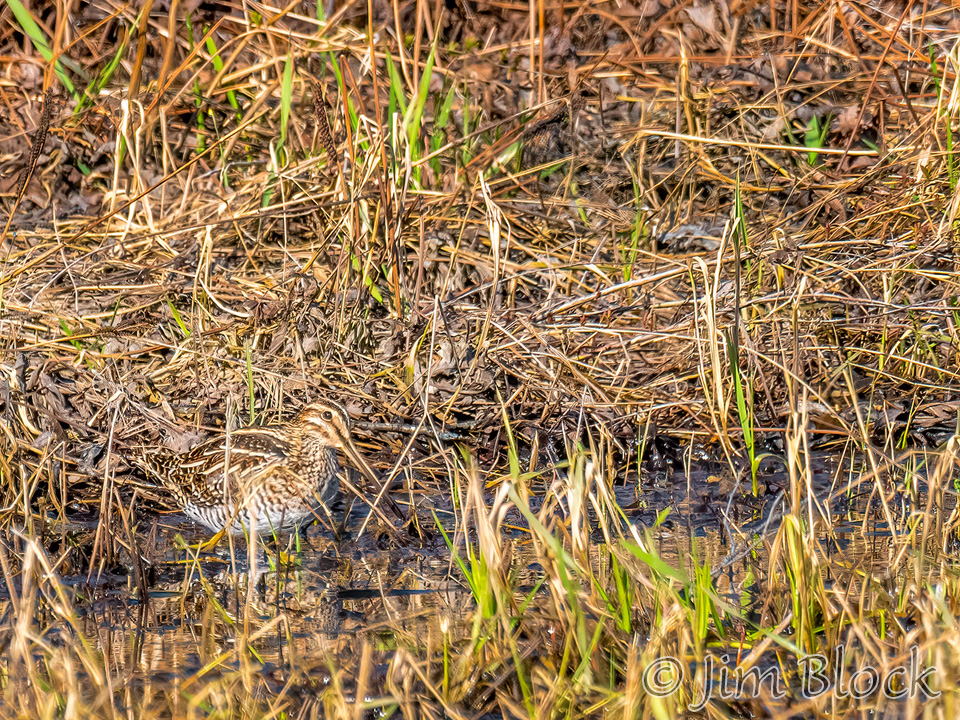
Northern Flicker
In the early morning yellow light in Lyme, I photographed a shy Northern Flicker from a considerable distance.
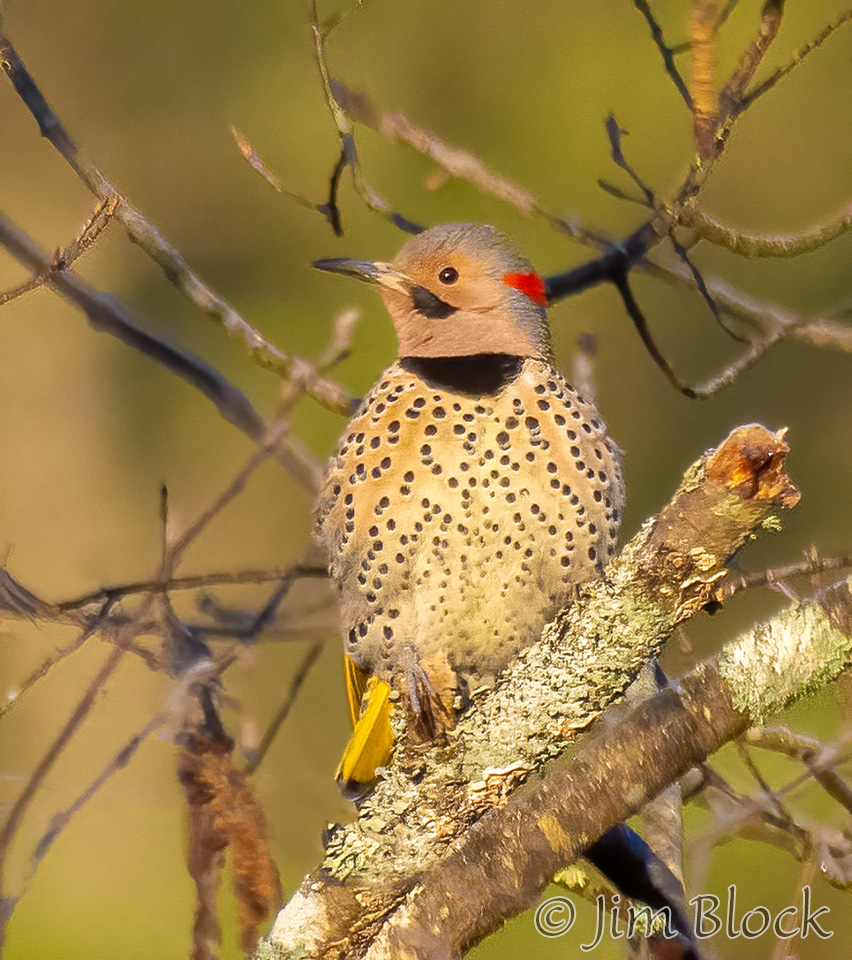
Common Grackle
The Common Grackle with its yellow eye is a common, blackbird-like species that is often dismissed.
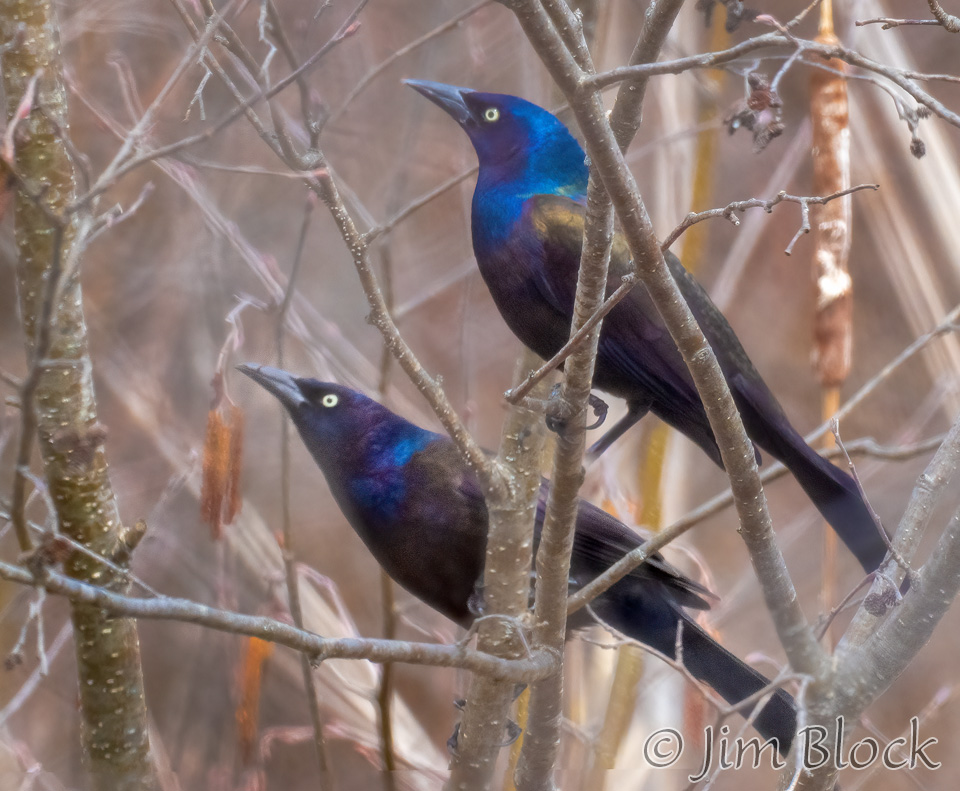
But when the sun hits its feathers, it can be very colorful.
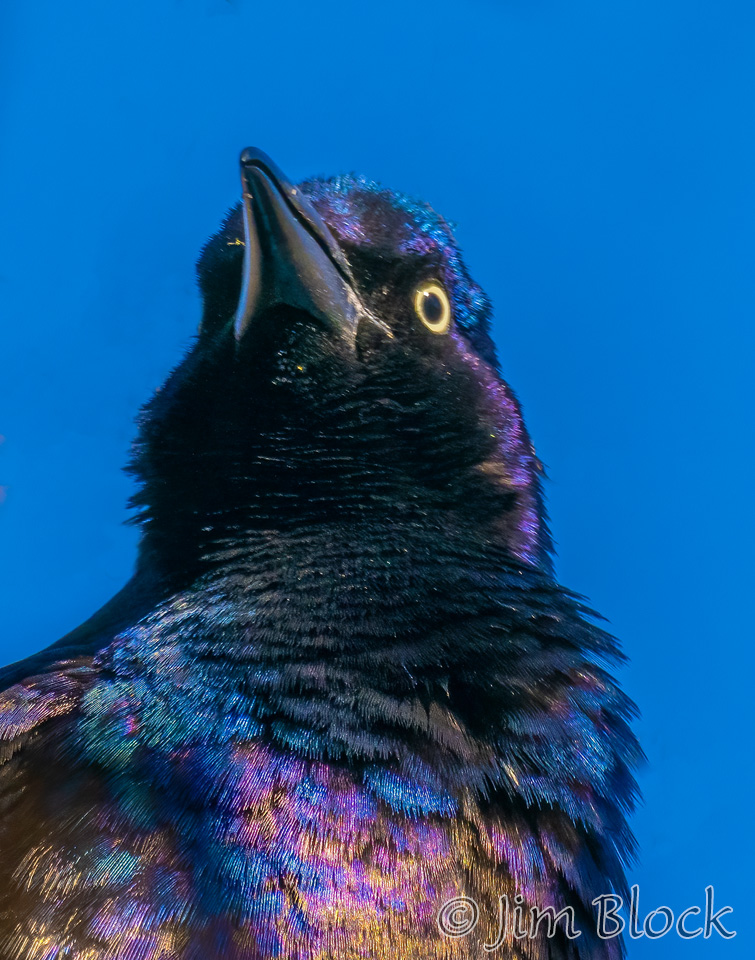
Eastern Phoebe
Often found nesting under porch roofs, eaves, and bridges, the Eastern Phoebe is a flycatcher with seemingly amazing eyesight. Below are three photos from the Northern Rail Trail in Lebanon.
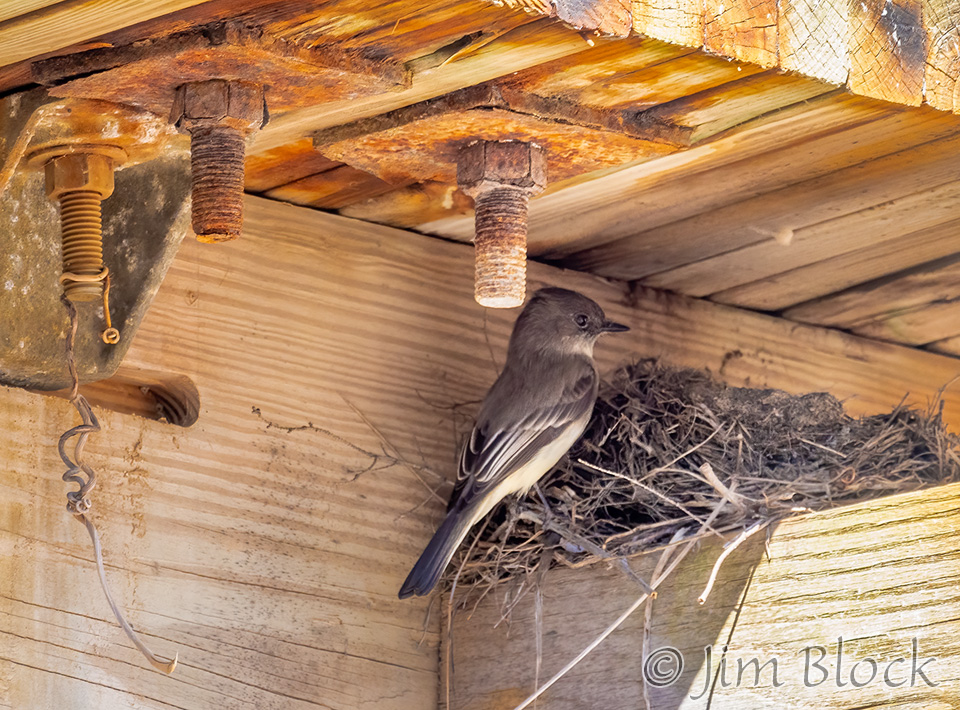
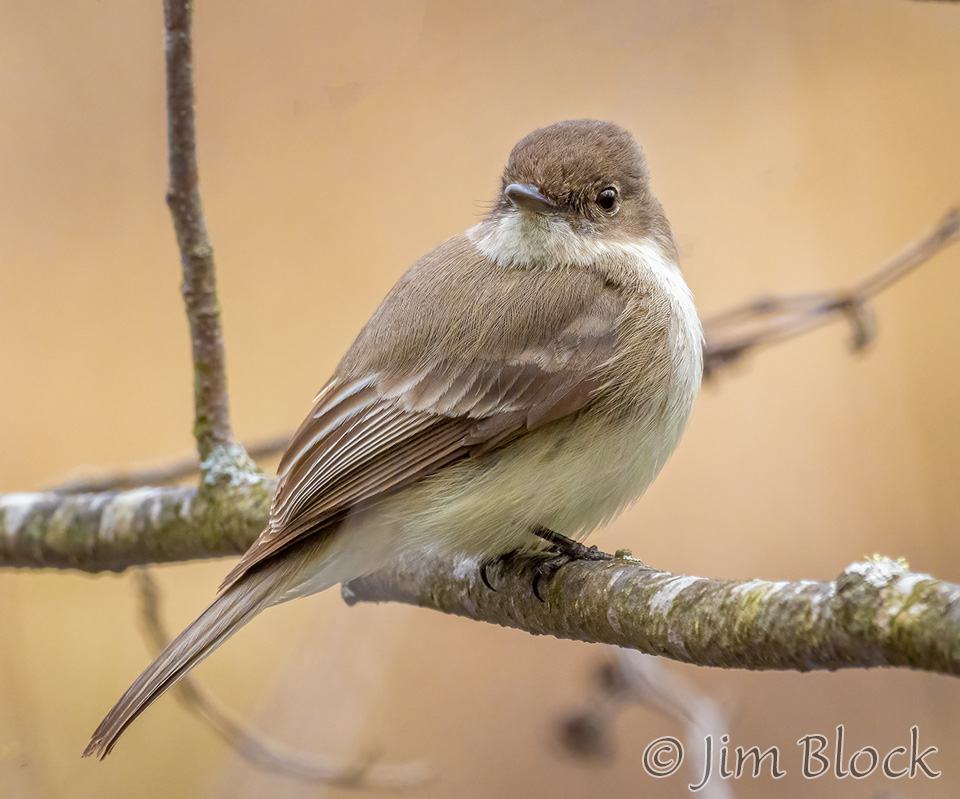
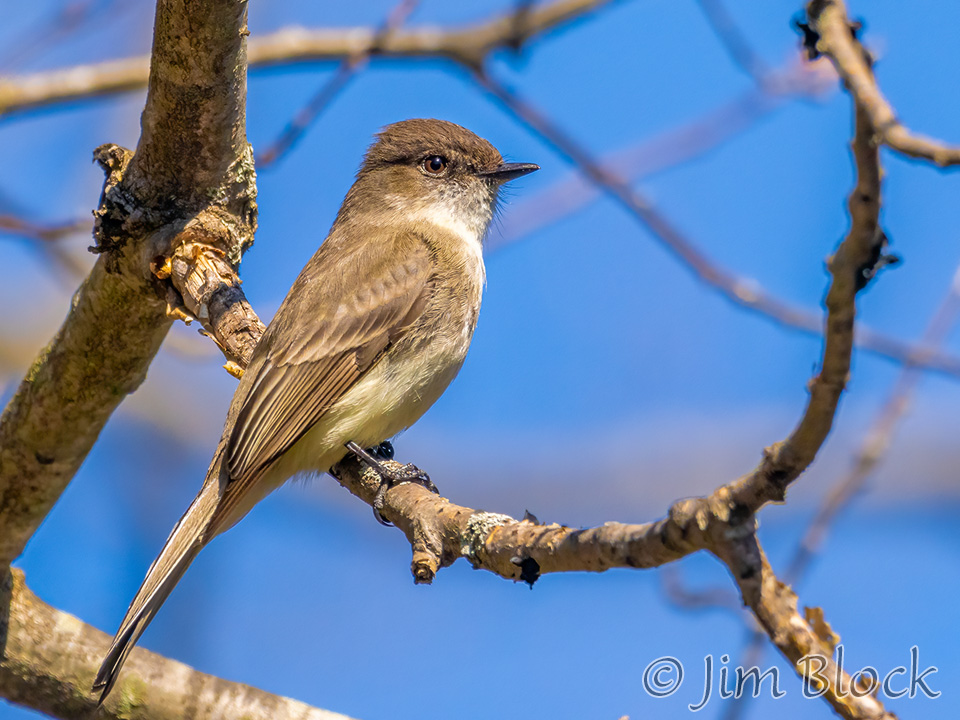
Sparrows
I did not search out sparrows, but four jumped in front of my lens. Here they are from Lebanon, Enfield, Etna, and Rumney with the species name in the title.
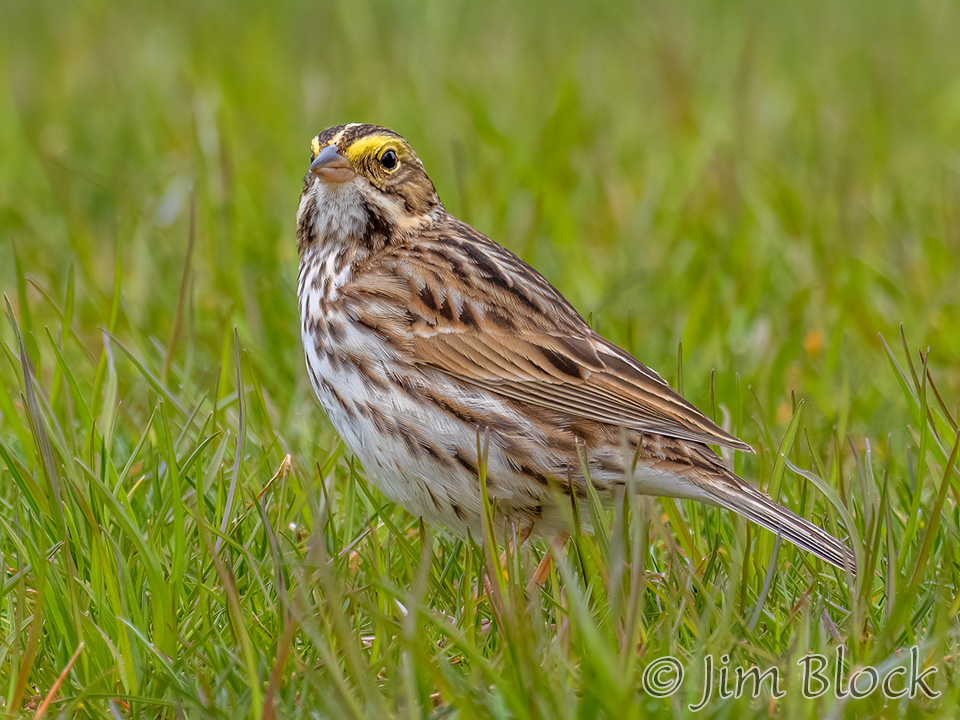
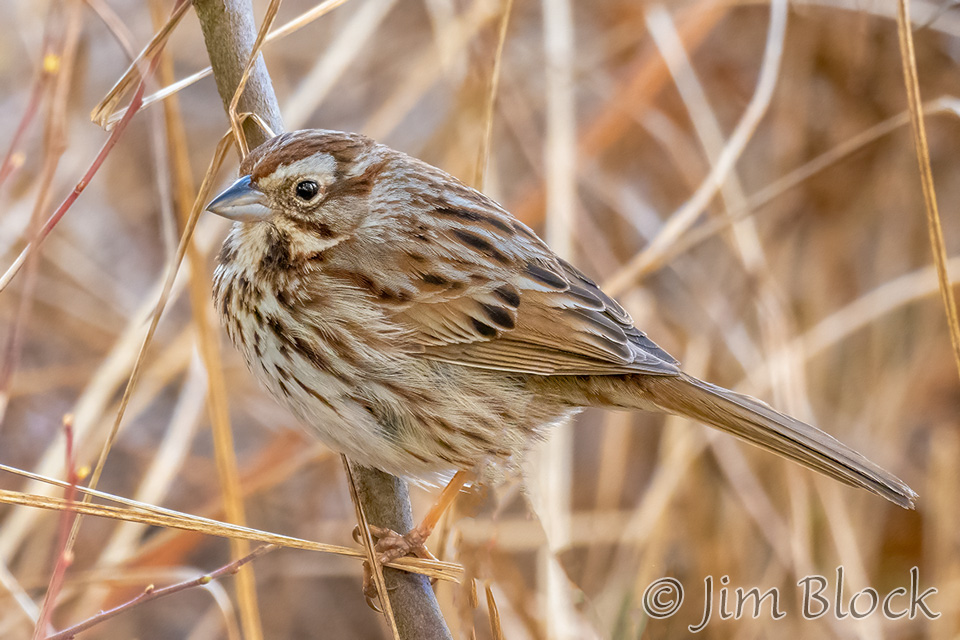
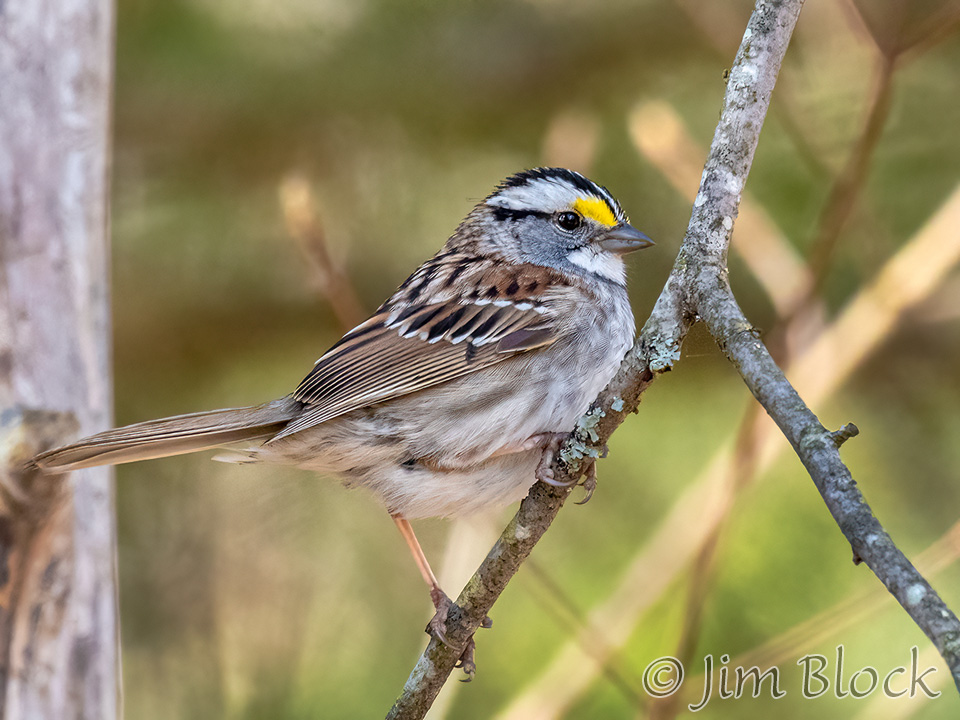
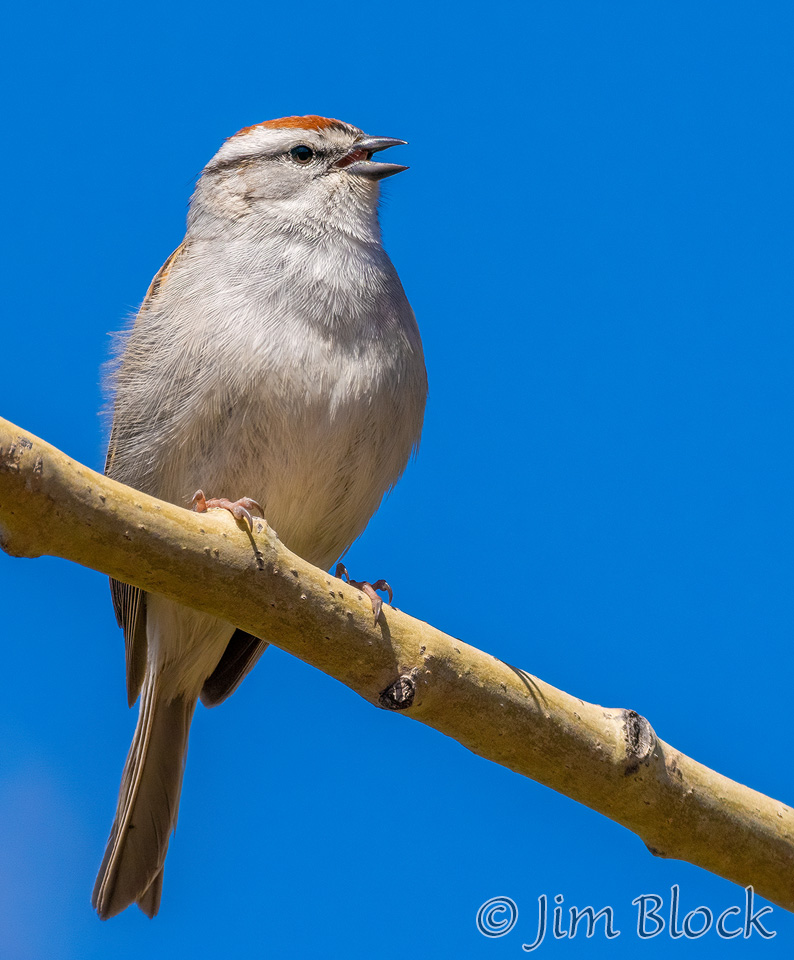
Broad-winged Hawks
Broad-winged Hawks returned to the Upper Valley. I photographed two in Etna, possibly the same bird is in three of the photos, and one in Rumney.
Why Rumney? Jann absolutely needed a new sewing machine. I toured Quincy Bog while she spent over three hours buying one that cost three times more than my newest camera. That is what I get for buying yet another new camera!
Northern Cardinal
A common species that we have never seen in our Etna yard is the Northern Cardinal. This one is from the Rail Trail in Lebanon.
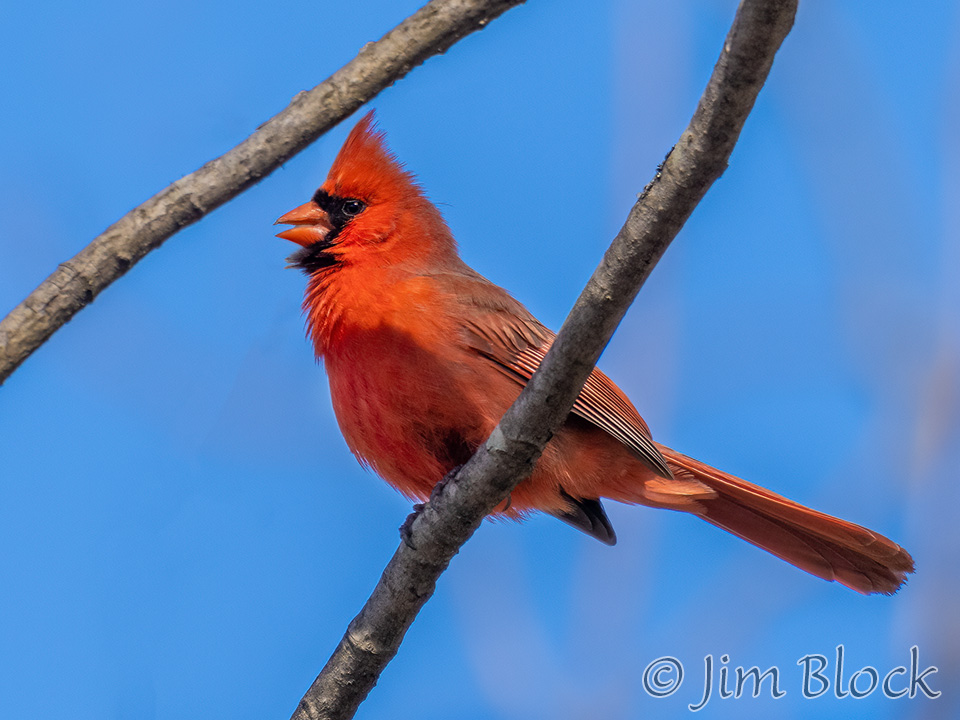
American Robin
A common species that we see plenty of in our Etna yard is the American Robin.
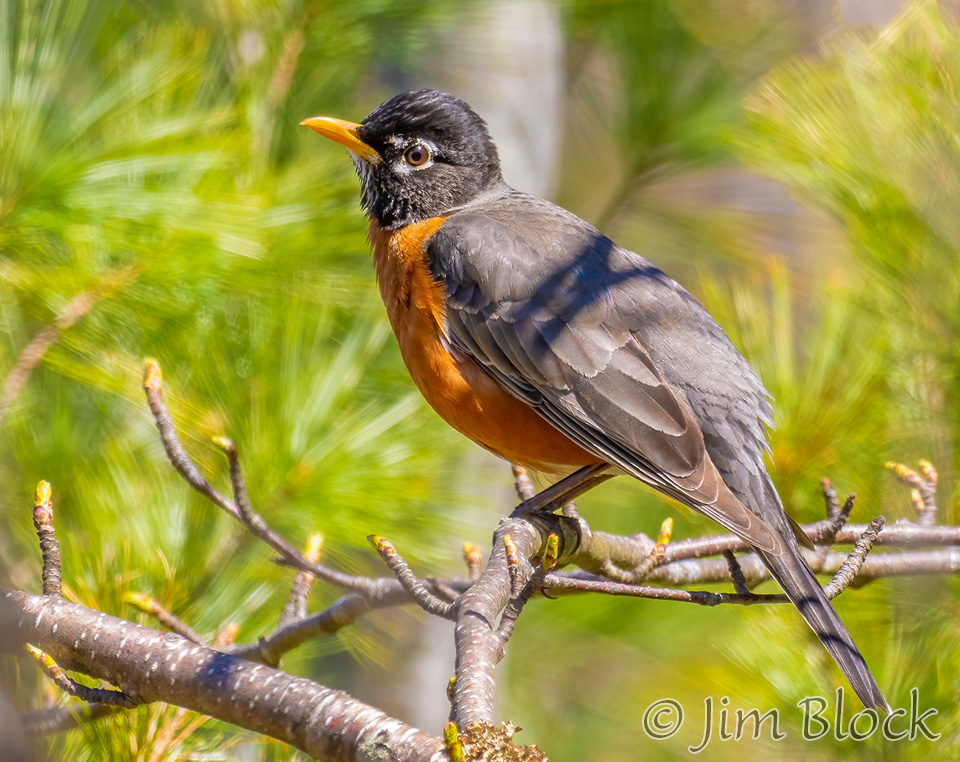
Mammals
Mammals seen in Hanover these weeks included deer, red fox, and muskrat. Sadly the red foxes that had a den very near our home have not returned.
Mink Brook Community Forest
I hiked the Mink Brook Community Forest and adjacent lands three times the first half of spring. It is a beautiful area in Hanover. Here are a some photos from these hikes.
Foggy Mornings
Twice I left home early morning in bright sun only to find fog in the valley and sometimes not too far below our house. Fog softens scenes, hiding details and simplifies images. It can be a subject all itself. Below is a side show of photos from Etna, Lyme, and Norwich taken April 9 and 22.
Clouds
Like fog, clouds can sometimes carry an image almost by themselves. I found iridescent clouds around the moon a month apart in March and April. Here are some clouds that intrigued me these weeks.
Moving Water
I enjoy photographing moving water. I took two photos of Blood Brook while walking our favorite loop in Norwich with Jann and also along Mink Brook with Jann. Then on a suitably overcast day, I spent 45 minutes at Bicknell Brook in Enfield. Here are nine photos.
Zebedee Wetlands
Looking unsuccessfully for American Bittern, I circled the wetlands at Zebedee in Thetford. Here are a few photos from a very pleasant walk.
Flowers
Spring brings flowers as well as birds. Over the years I have supplied photos for many garden books. Now I just take a few, mostly when walking with Jann. Here are some from Enfield, Hanover, and Norwich.
Rectangles
I found myself photographing rectangles. Shapes can make interesting subjects, especially when just walking around town for exercise. Here are a few.
Random Photos
If you made it this far, perhaps you might sit still for a slide show of random photos. Like most of the images in this blog article, they are nothing special, just photos that help me remember pieces of my life. Like riding a bike on the rail trail, seeing a colorful window in my dentist’s office, or experiencing a quiet morning along River Road.

